Pathway to Fluency- Science of Reading Aligned
Posted by admin on
If you are tired of searching for a solid reading program, look no further. Pathway to Fluency is a complete and comprehensive Science of Reading (SoR) Aligned Curriculum! Furthermore, it has everything you need for your whole-group, small-group and one-on-one reading instruction. More specifically, Pathway to Fluency has been developed to teach everything from phonological awareness to fluency and spelling in a systematic way using methods that have been proven to be effective.
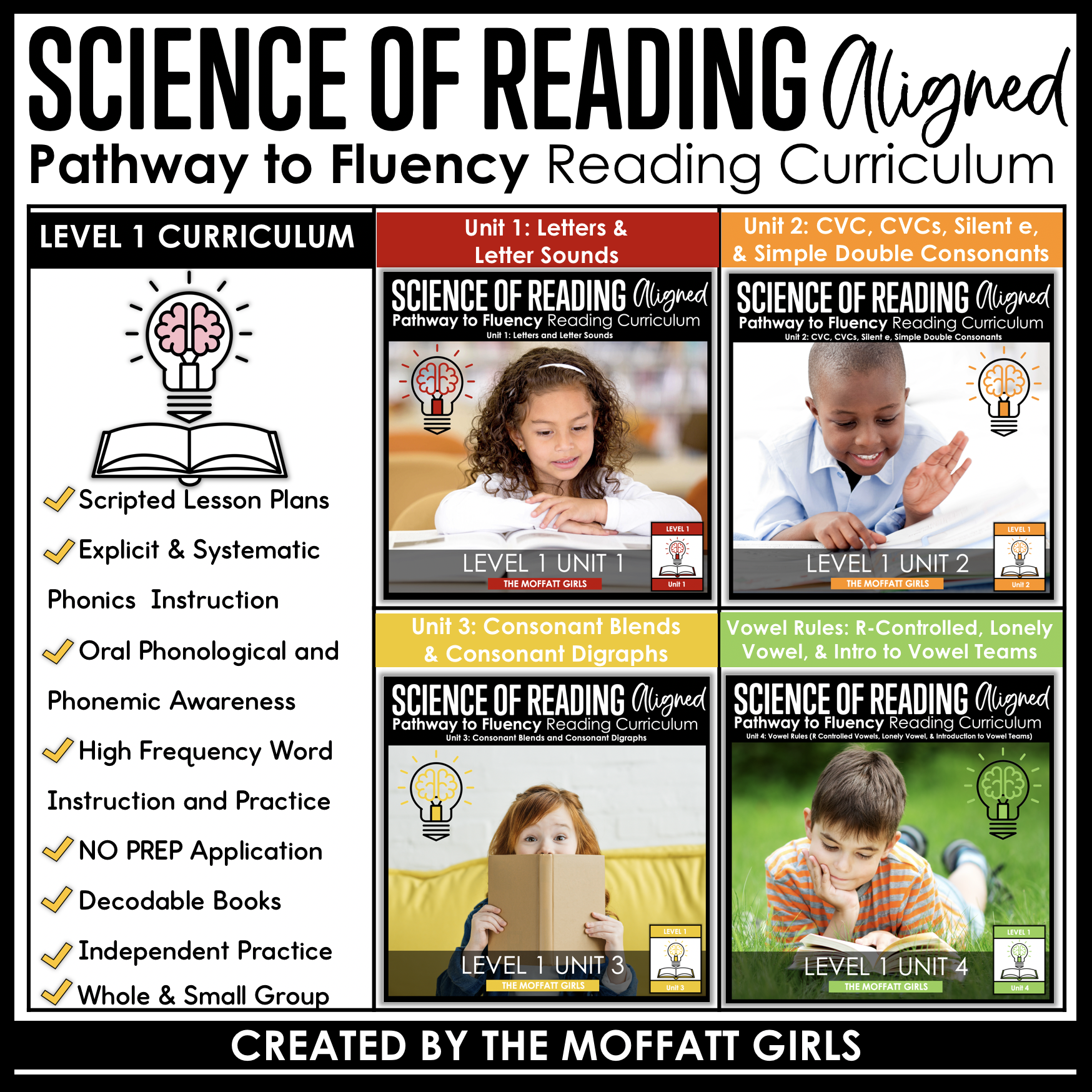
What is science of reading, and why is it important?
In short, Science of Reading is an umbrella term for reading instruction methods that have been researched and shown to be effective. Without a doubt, the approach and methods we use to teach our students how to read are critical in determining long-term academic success! Therefore, I’ve made it my mission to bring you a reading curriculum that is systematic, easy to implement and effective.
Scope and Sequence for Pathway to Fluency:
Research has shown that phonics patterns should be introduced in a sequential and systematic way, moving from less complex phonics concepts to more complex ones. Therefore, I have been intentional about each and every detail of the scope and sequence, taking into consideration the complexity of the phonics skills, in which order they should be introduced and how they should be introduced. Hence you will see that as students progress through Pathway to Fluency, they gain confidence in reading by mastering simple concepts before moving on to more complex ones. Here is the sequence of phonics skills and high frequency words that are introduced in Levels 1 and 2:
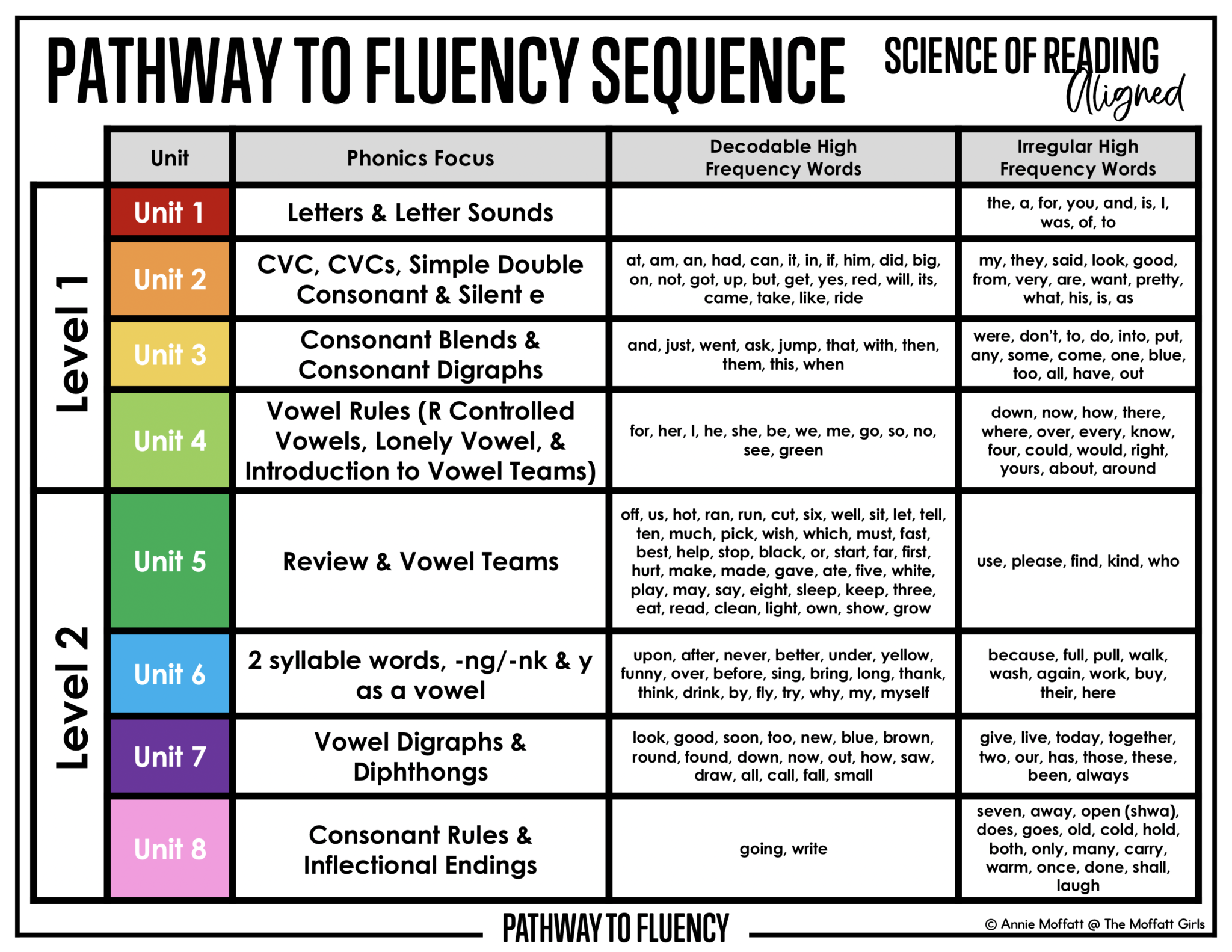
The following table outlines the week-by-week scope of the specific phonics skills introduced in each unit in Level 1.
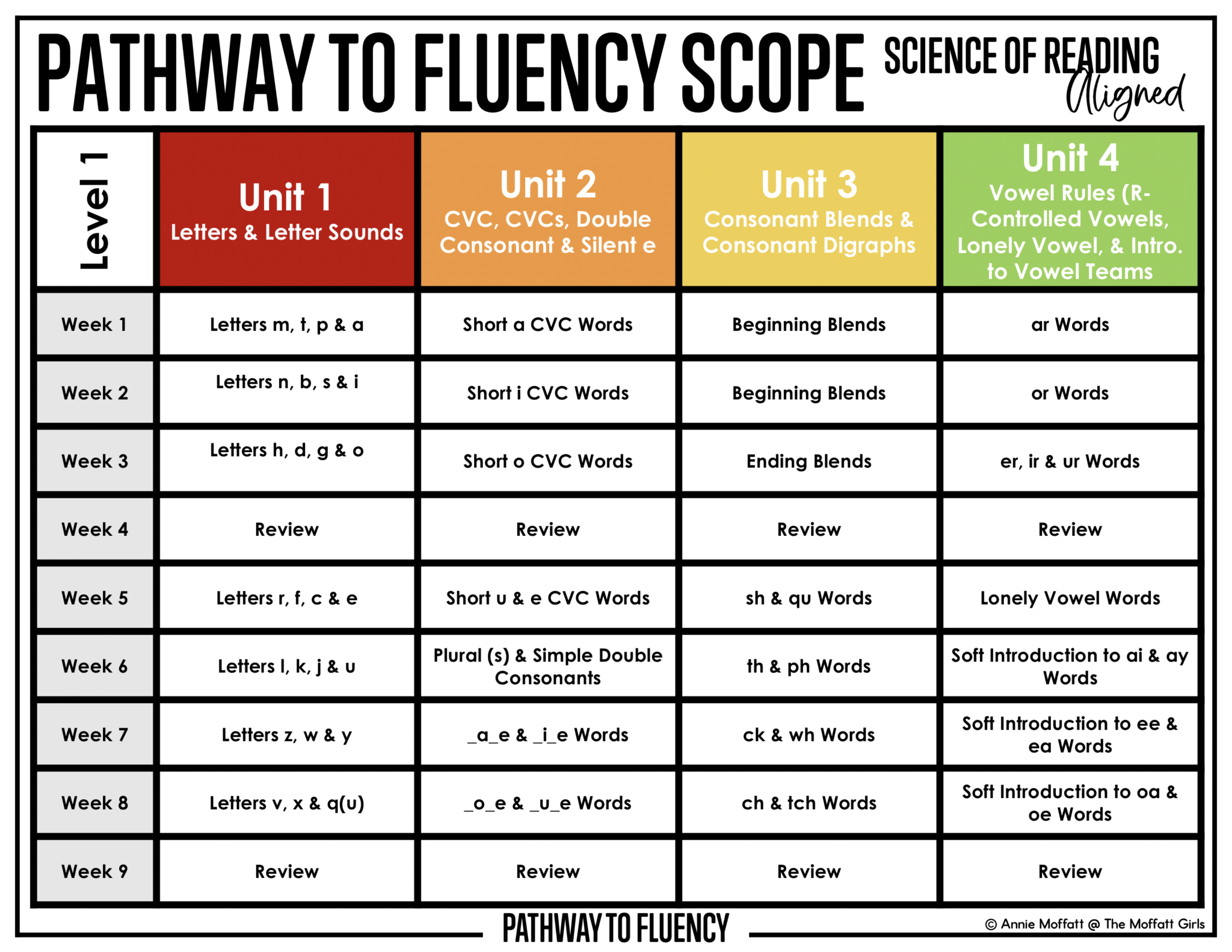
What’s included in the Pathway to Fluency Curriculum?
This Science of Reading-aligned curriculum can be used both as a complete reading curriculum or as a supplement another reading program if required by your school district. The files within this resource are organized into 4 folders for ease of pulling and printing resources:
1. Lesson Plans and Assessments
2. Whole-Group Resources
3. Center Activities
4. Teacher Table Tools.
Let’s take a look at each one!
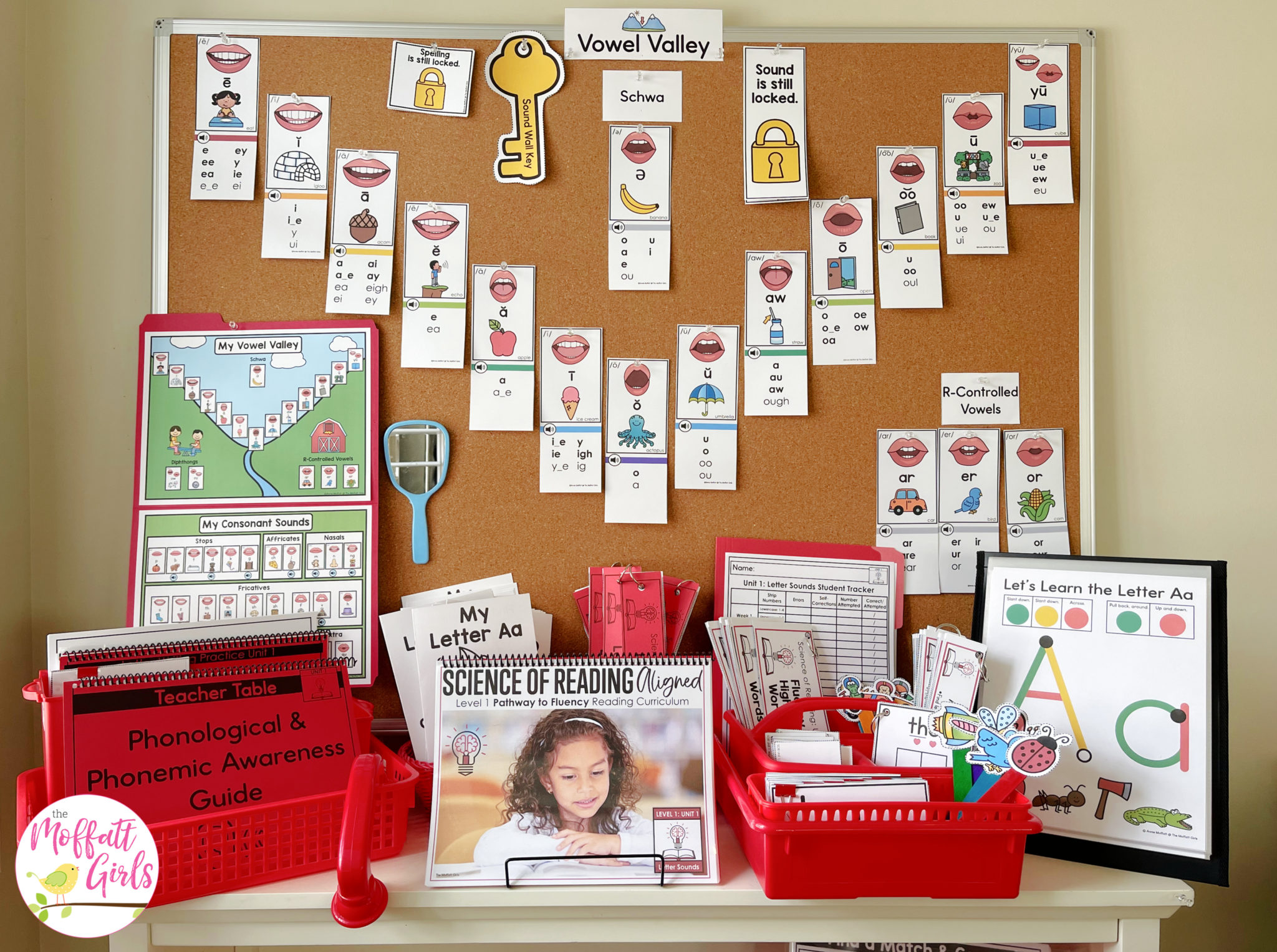
Start Here File
I have included the Start Here file to give you an introduction to Pathway to Fluency. It also provides a brief overview of what the term science of reading means and how to implement best practices in your classroom using the Pathway to Fluency Curriculum. I encourage you to refer to this file as you teach through Unit 1 for helpful reminders.
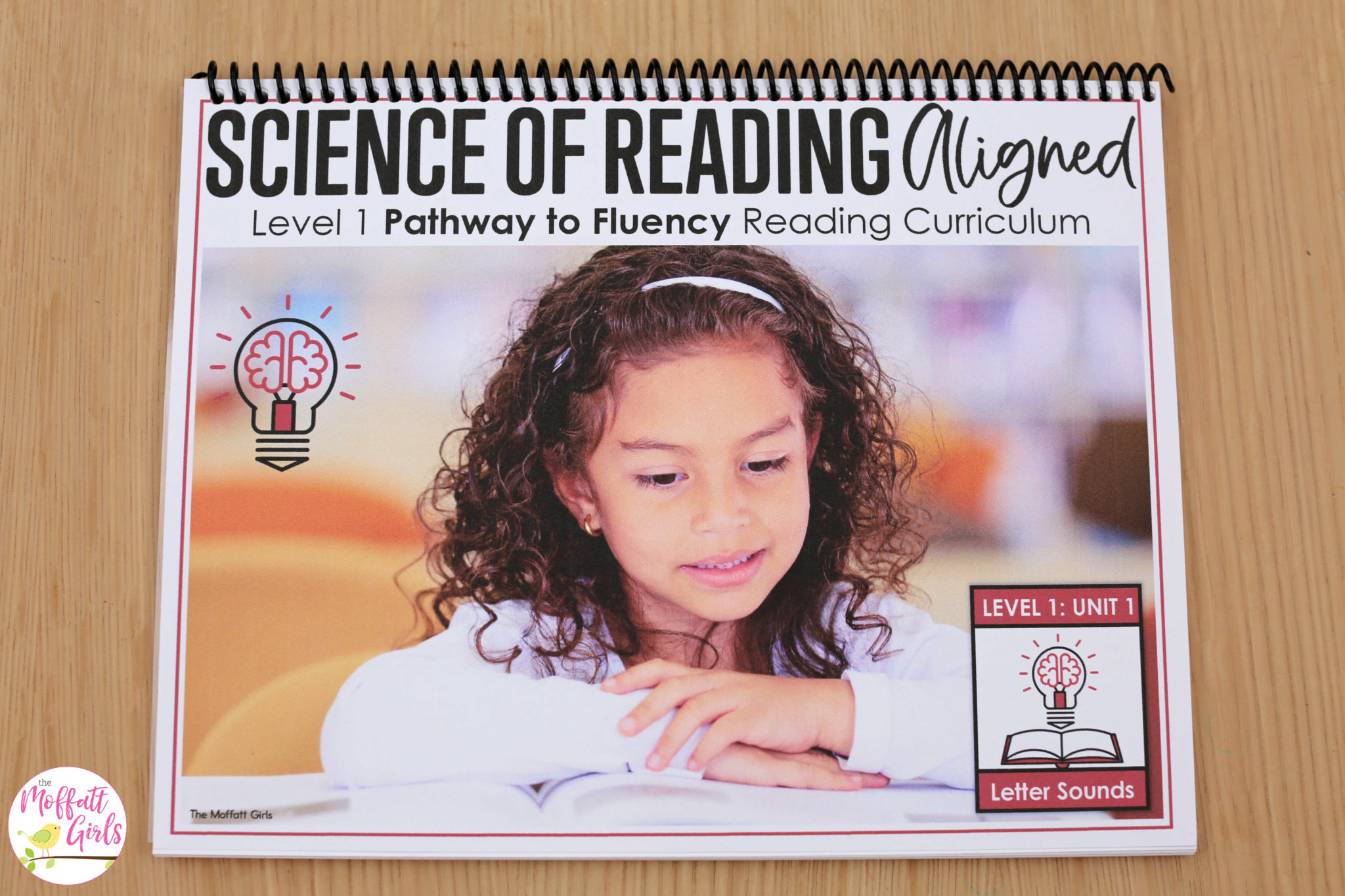
Folder #1: Lesson Plans and Assessments
Unit 1 includes 9 weeks of instruction with lesson plans for whole group lessons and small group center practice. These easy-to-follow lesson plans provide a structured approach to help you introduce, practice and apply the Pathway to Fluency materials and concepts in your classroom. More specifically, each lesson is broken down into 4 categories: Oral Phonological & Phonemic Awareness, Phonics, High Frequency Words, and Application & Independent Practice. The first three categories are done in a whole-group setting, while the Application & Independent Practice is done in small-group centers.
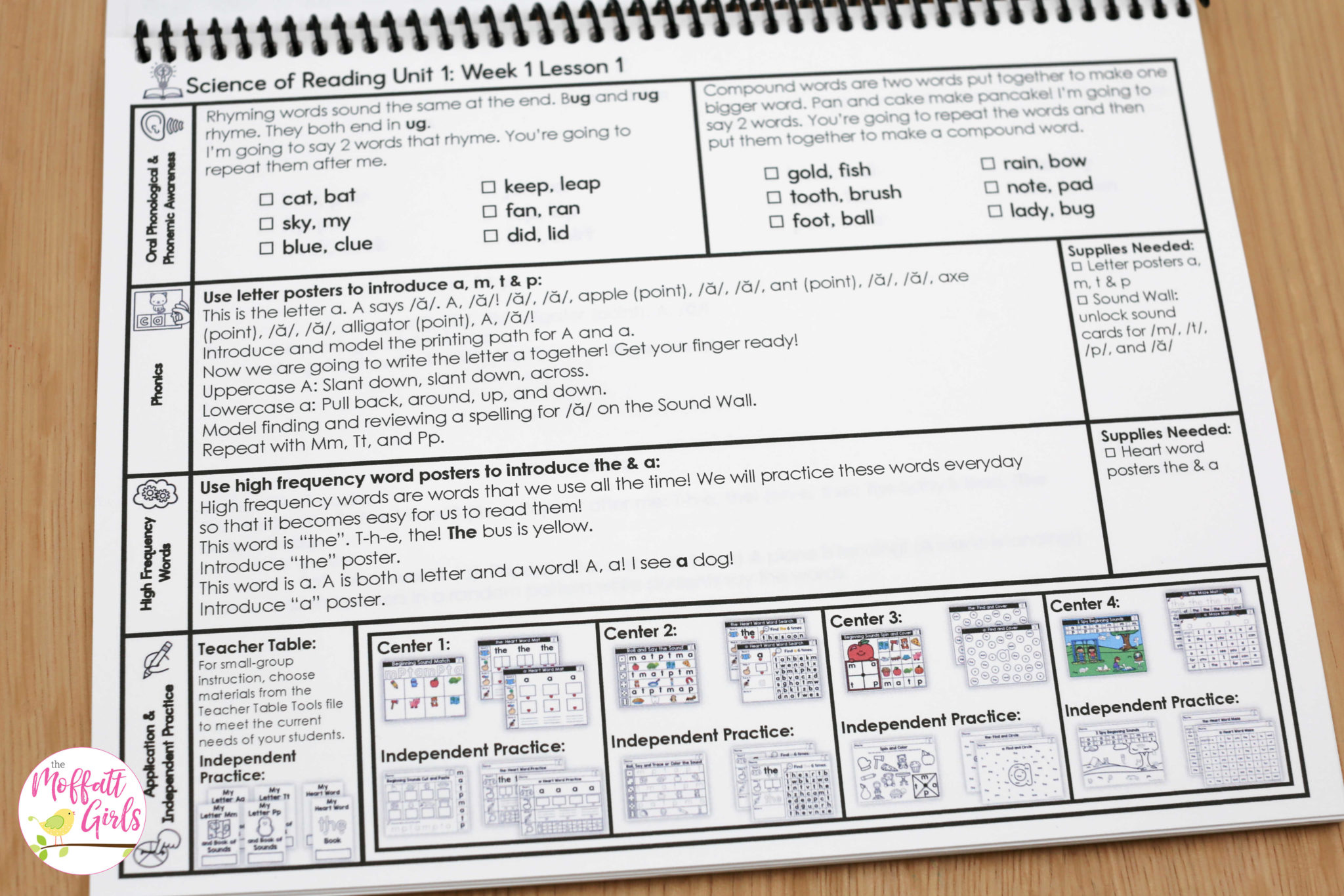
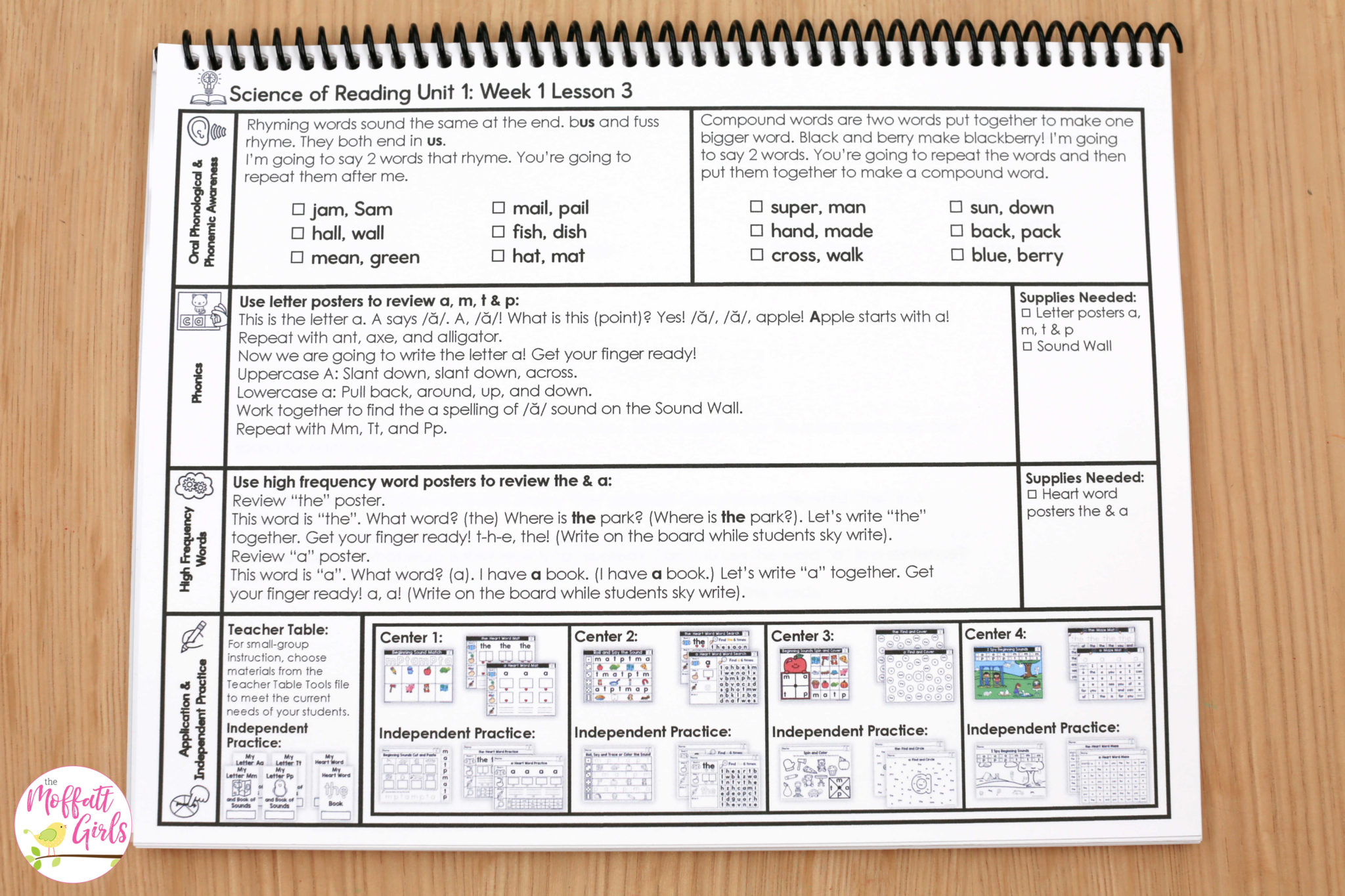
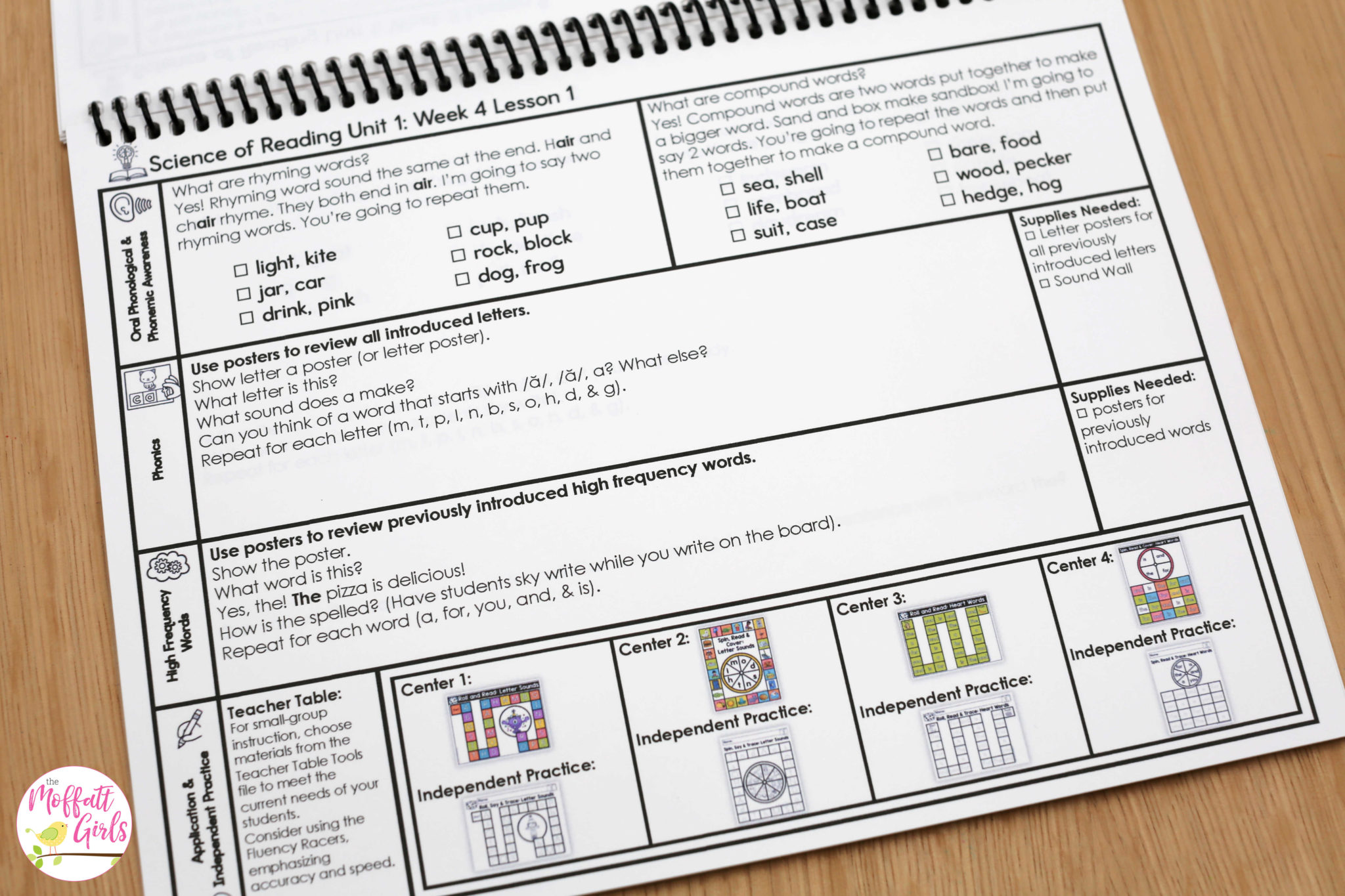
Each unit also includes a mid-assessment and post-assessment to help you gauge your students’ progress and to help drive instruction. The Unit 1 Assessments check for understanding in phonological and phonemic awareness, letter name and sound identification, and reading high frequency words (heart words). These assessments are quick and easy to administer one-on-one.
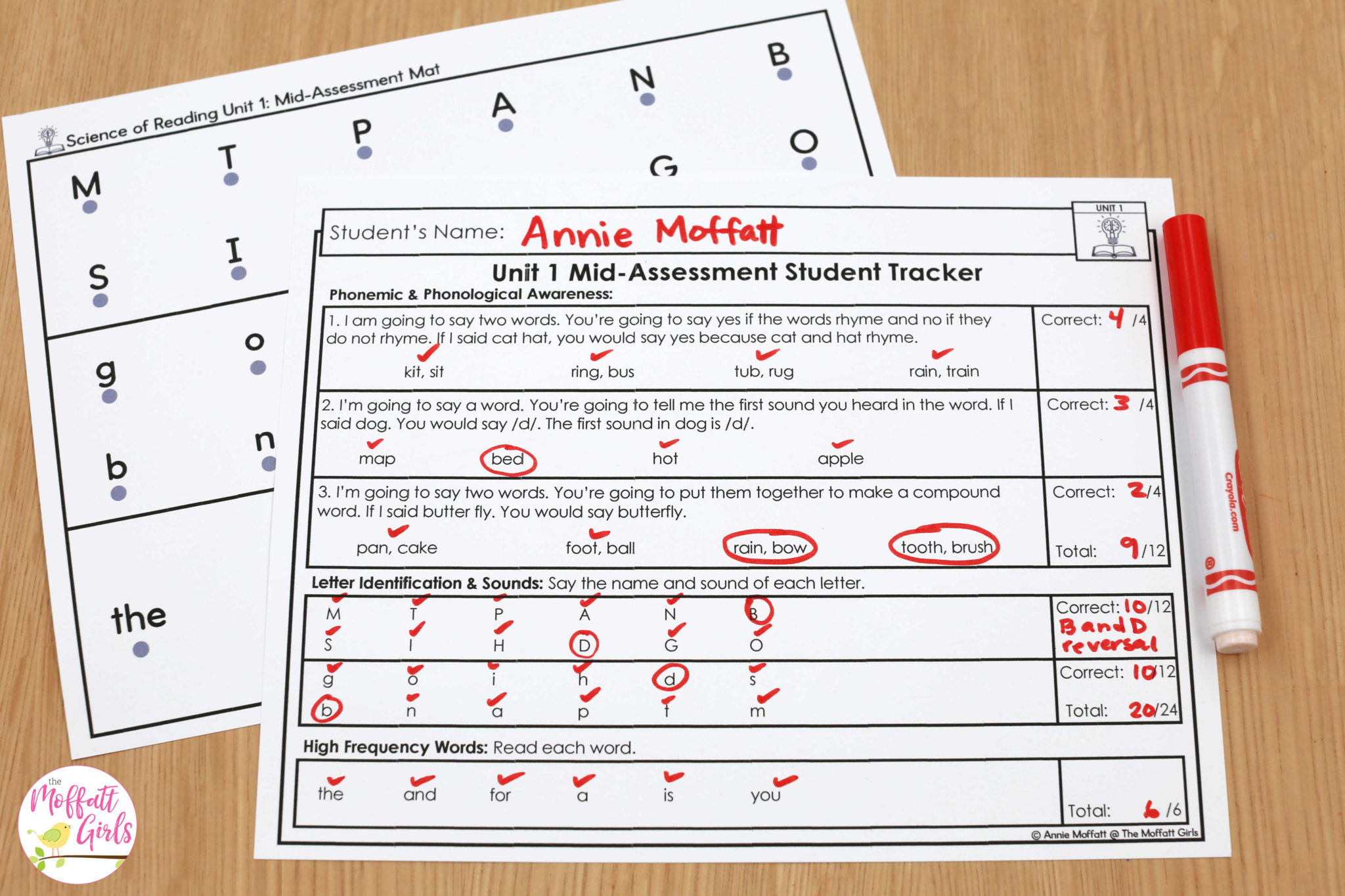
Folder #2: Whole Group Resources
This folder has all of the cards and posters that you will need to support the whole-group instruction. More specifically, the files include sound wall cards, letter formation and letter sound posters, and high frequency word posters. These visual aids can be displayed on a classroom wall for easy reference as students are working on the centers.
Sound Wall Cards
The sound wall cards can be used to form the Vowel Valley and Consonant Sounds charts. There are a total of 44 sound (phoneme) cards to help introduce each phoneme. Each card shows proper mouth formation, an example of the sound within a word, whether the sound is unvoiced or voiced, and the possible spelling combinations (graphemes) that can create the sound. You can choose use the locks to cover the graphemes that have not been introduced.
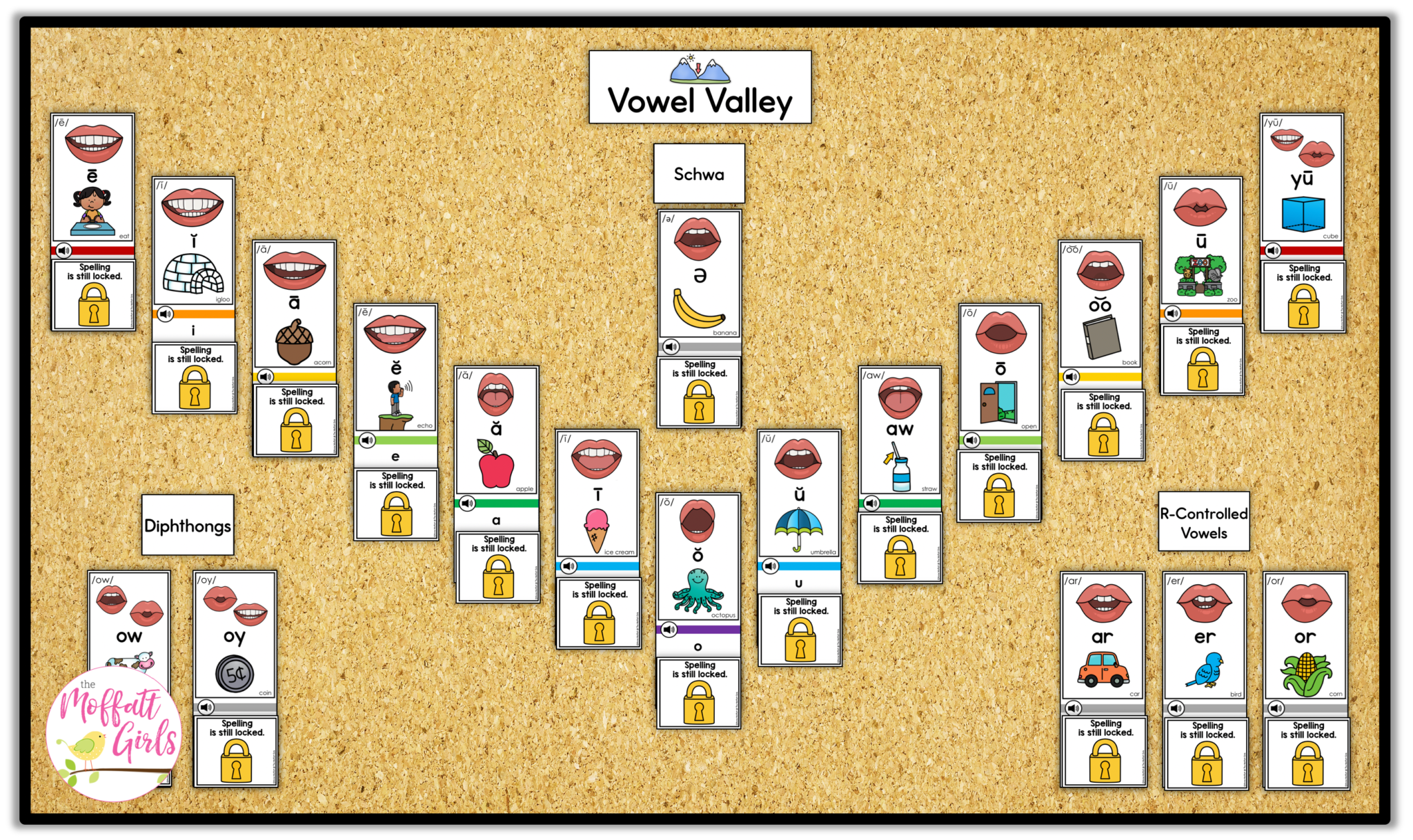
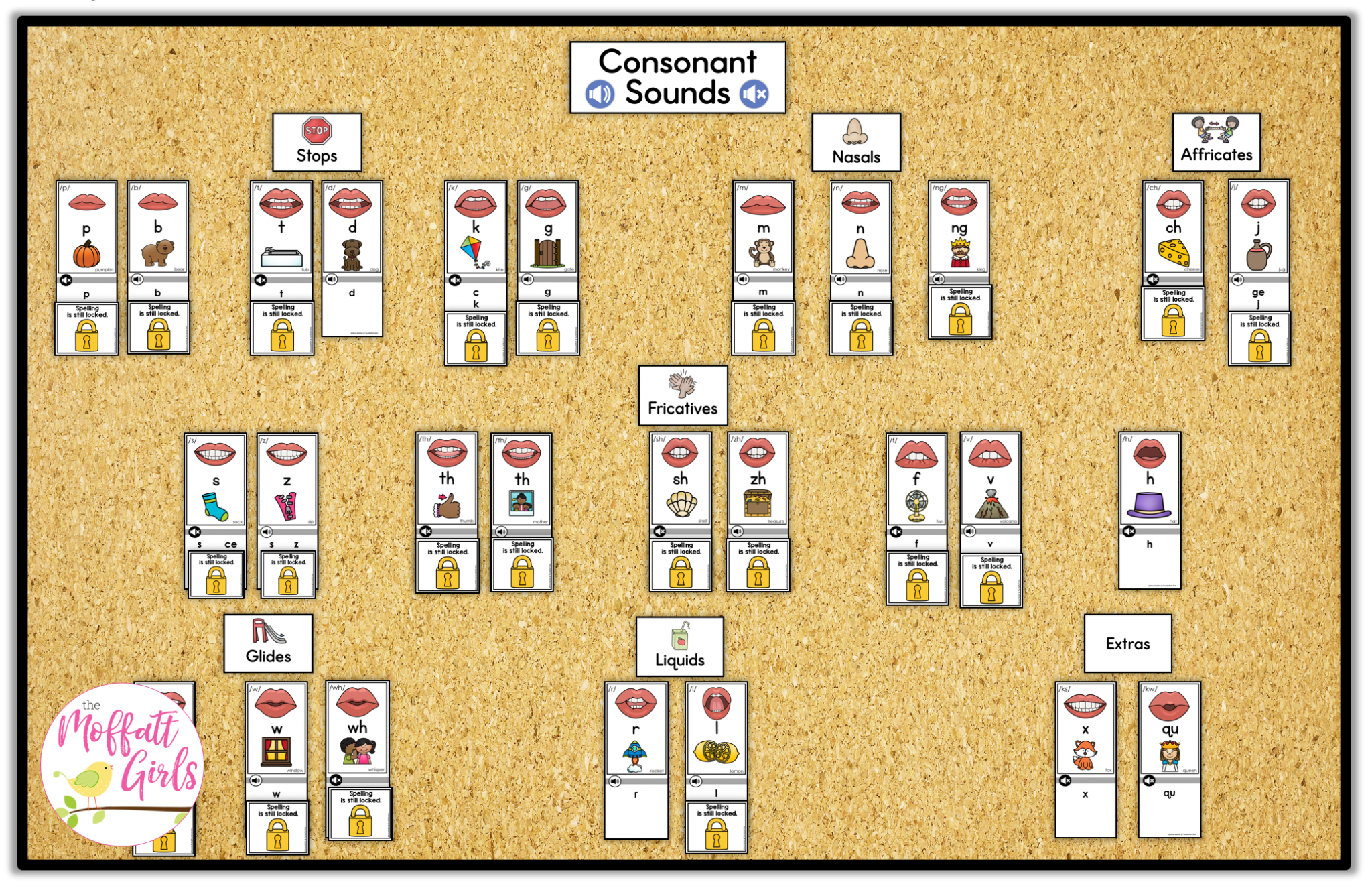
Letter Formation and Sounds Posters
The letter posters include letter formation cues to show how each letter is formed. They also include pictures of items that begin with the letter sound. Each colored dot guides students in the correct math of motion.
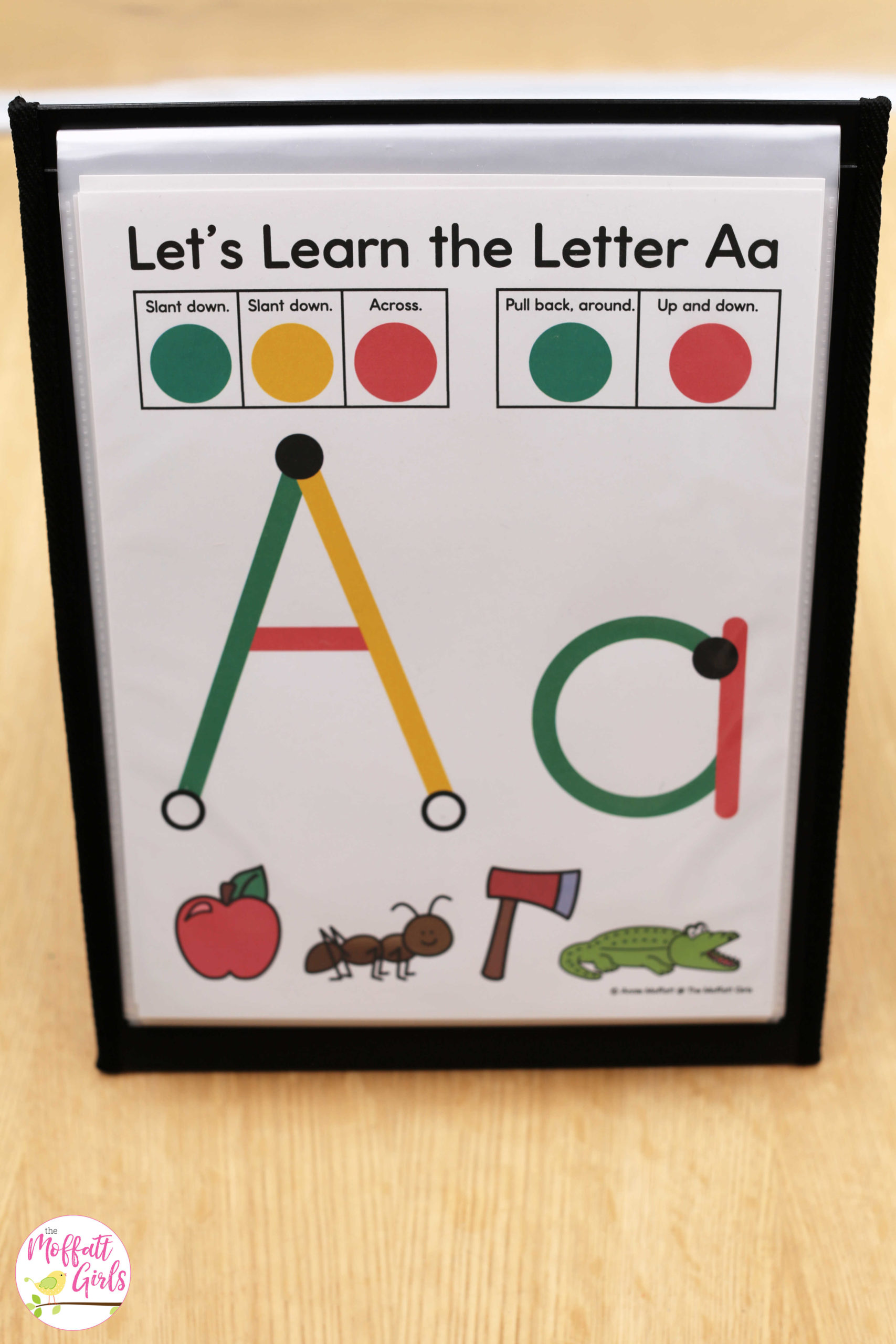
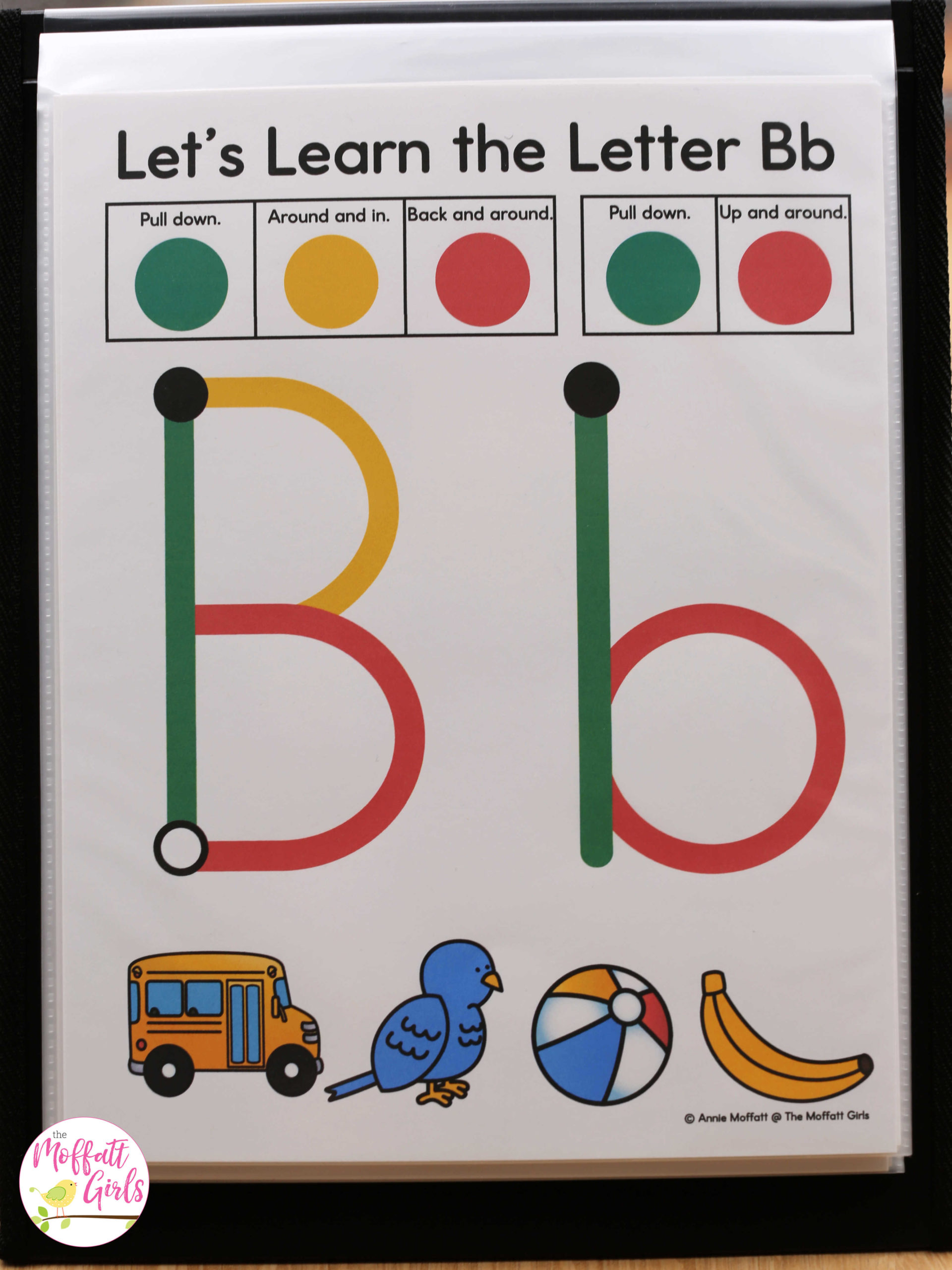
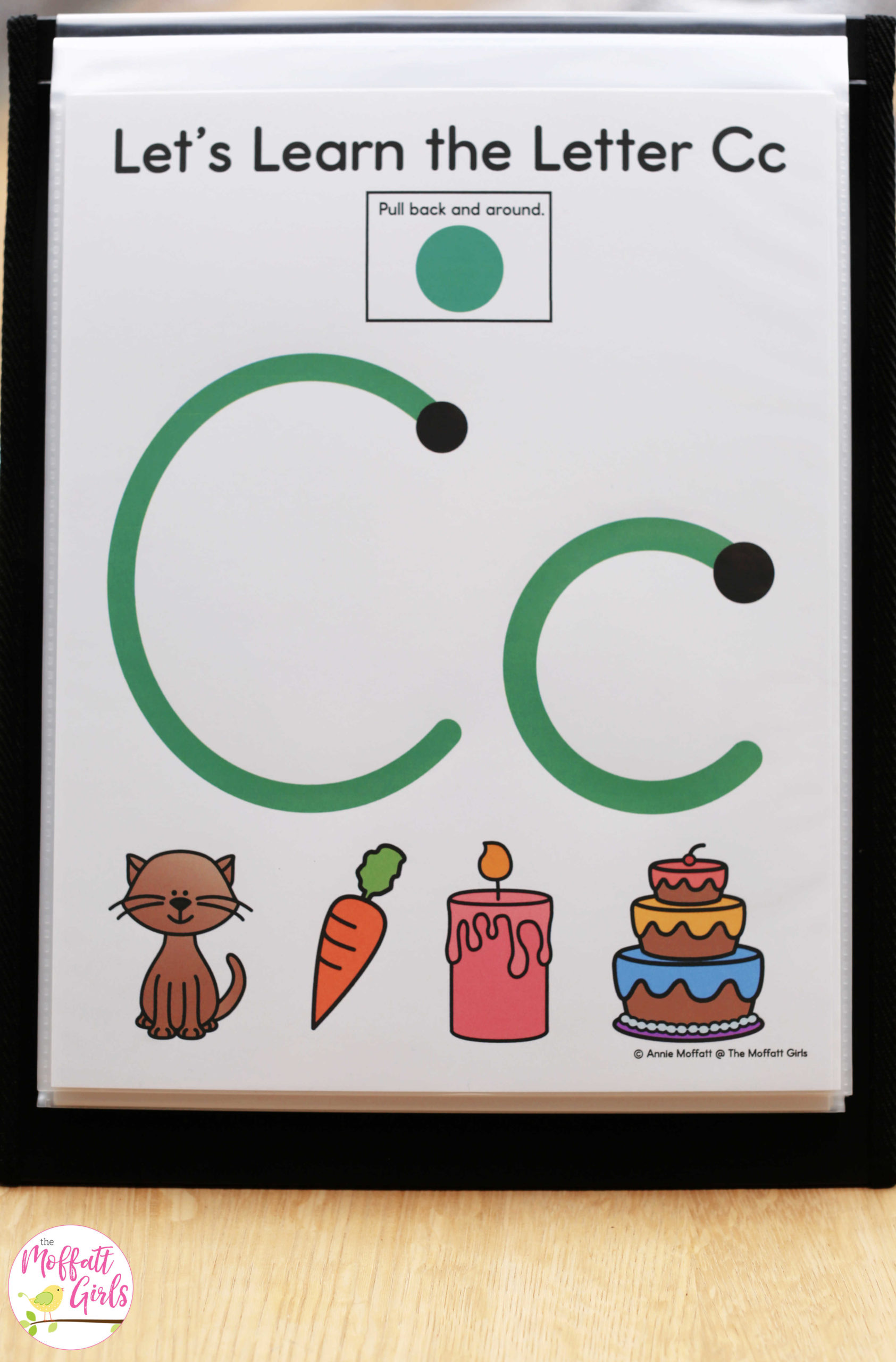
High Frequency Word Posters
These posters show the word, letter groupings, and hearts to represent irregularly pronounced letters within the word. In addition, the cues at the bottom should be said as you introduce the irregular letter groups.

Folder #3: Center Activities
Each week includes 4 centers for small group practice. These no-prep centers provide a hands-on way for students to take what they have learned in the whole-group instruction and practice those skills in a smaller group. This practice helps them become more fluent readers.
There are a total of four centers each week. You may want to consider dividing your class in one of two ways depending on your classroom size and schedule:
- Five groups- Four groups will each be at one of the four centers. The fifth group will be meeting for small group instruction at the Teacher Table. Each group would meet with the teacher once a week.
- Four groups- Each group will be at one of the four centers. The teacher will pull one group at a time for small group instruction at the Teacher Table. This option allows for each group to meet with the teacher daily, but requires slightly larger group sizes.
Each center includes a phonics and a high frequency word activity, with additional practice pages that correspond to the activities. Also, each center activity comes with multiple versions of each for repeated practice. For consistency, the activities are the same from week to week.
Weeks 1-3 & 5-8: Introduction to Letter Sounds & High Frequency Words
Center 1 Phonics Activity: Beginning Sound Match
Students say the word, isolate the beginning sound and find the letter that says the sound.
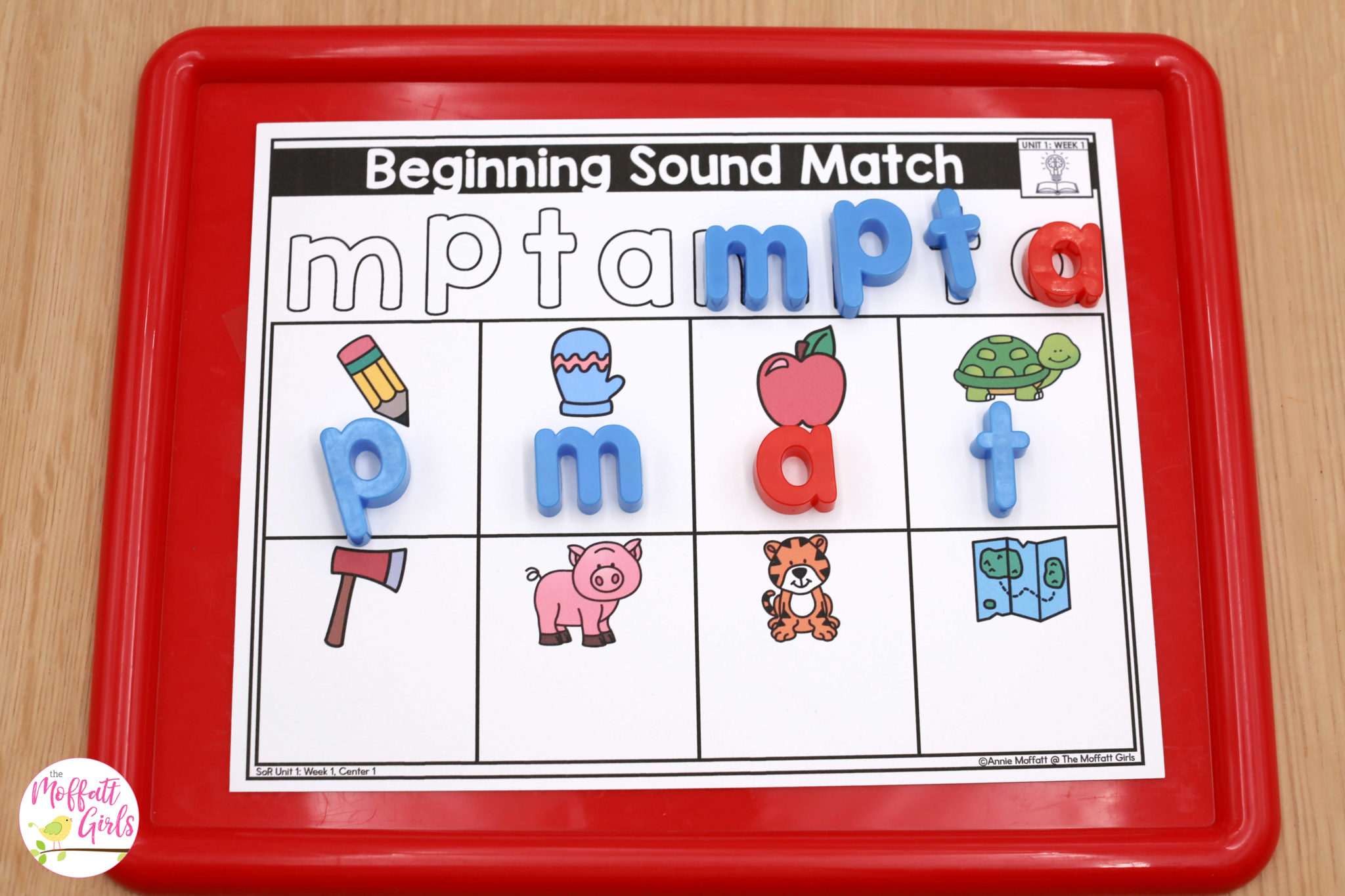
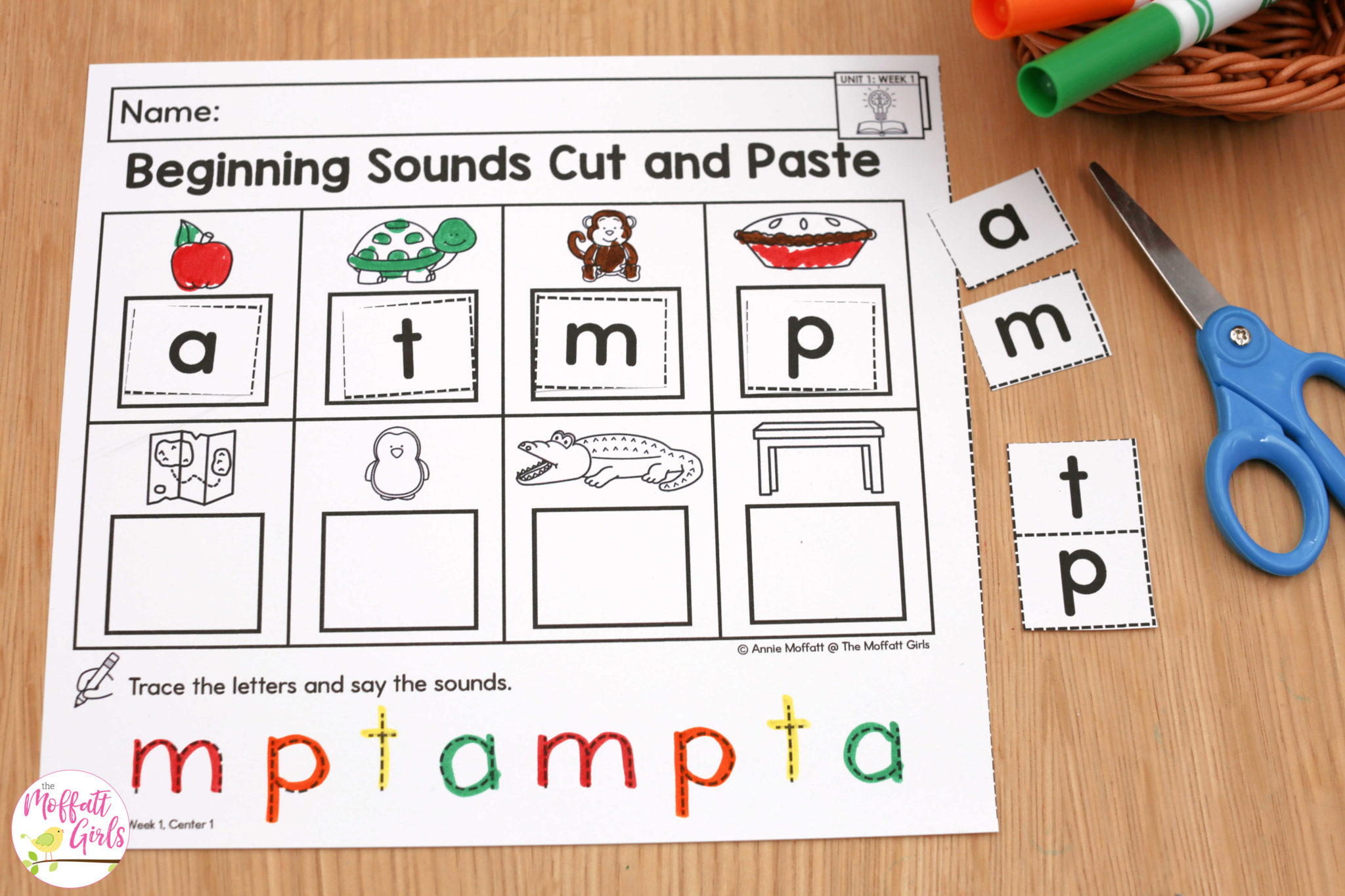
Center 1 High Frequency Words Activity: Heart Word Mats
Students practice reading, mapping, building and writing the high frequency word.
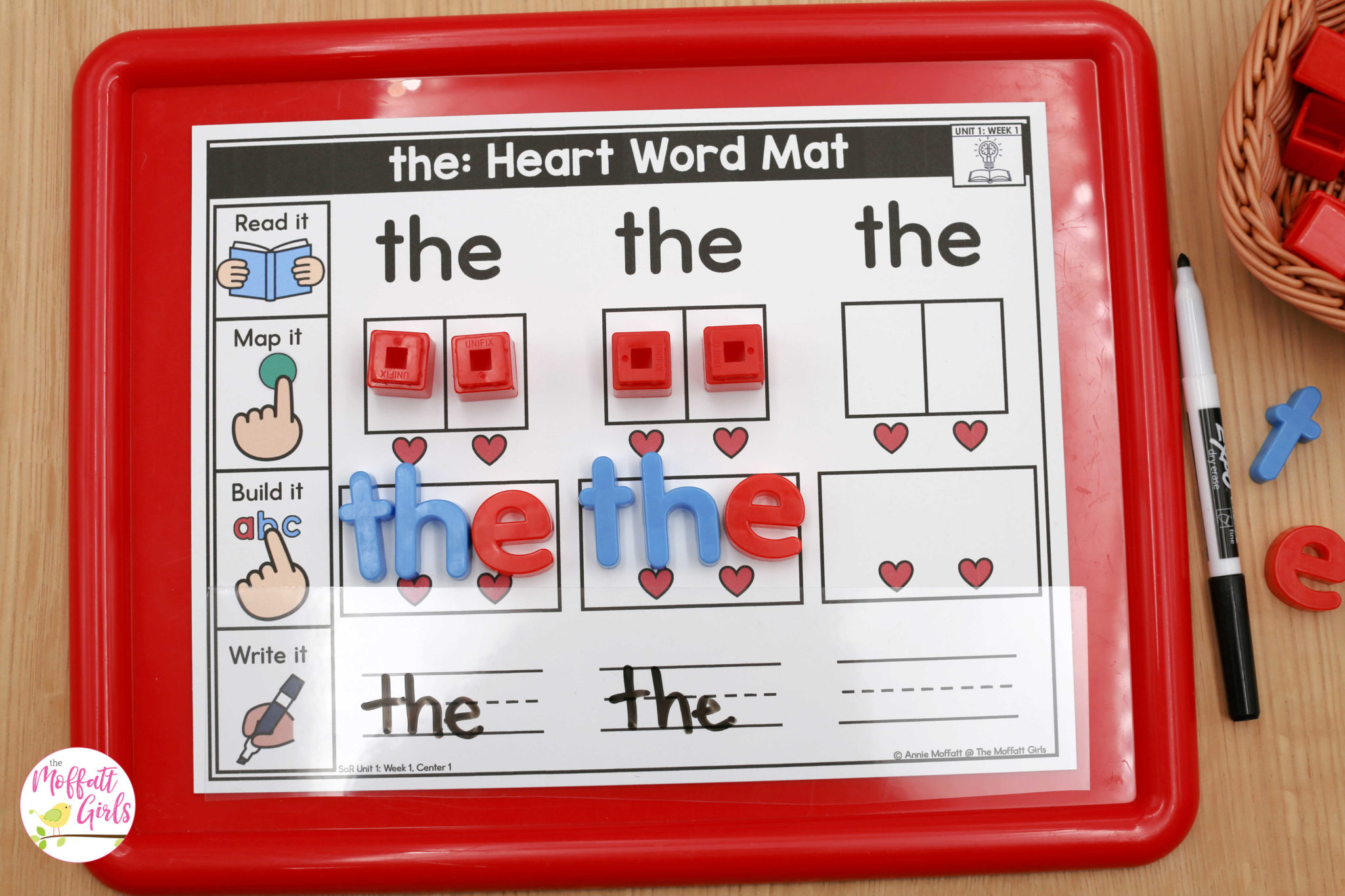
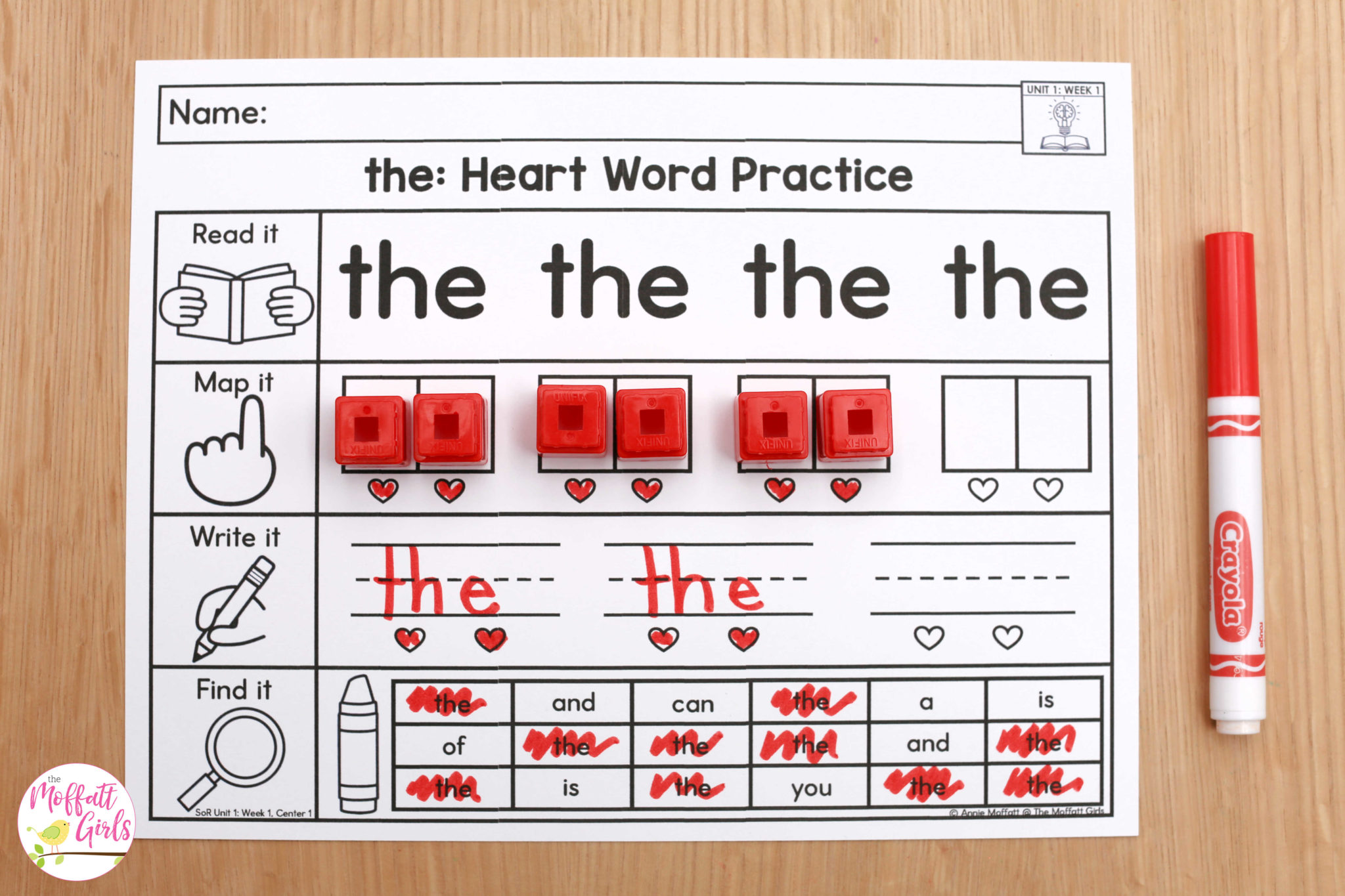
Center 2 Phonics Activity: Roll and Say the Sound
Students roll a die and say the beginning sound of a word or the sound of a letter.
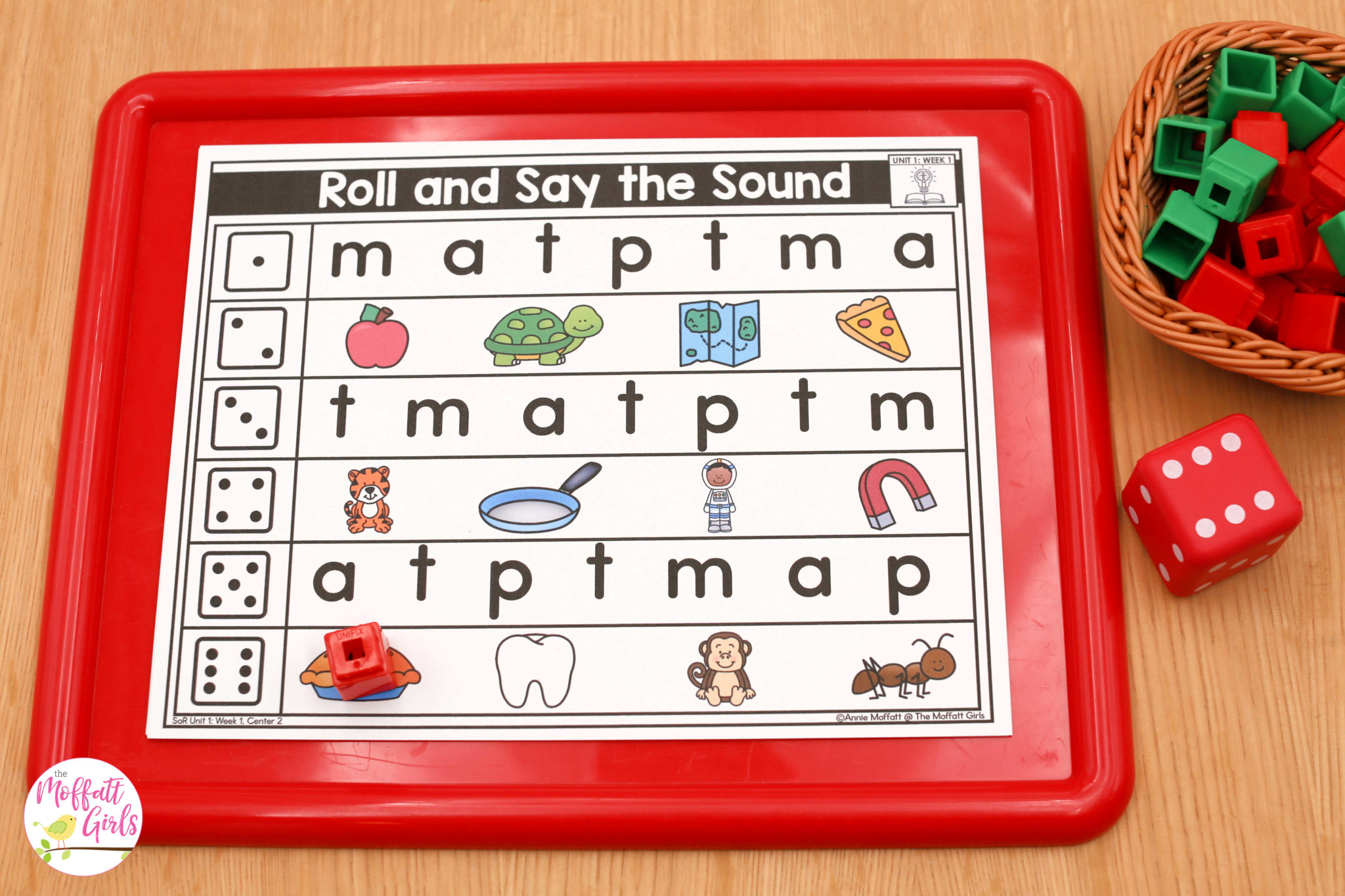
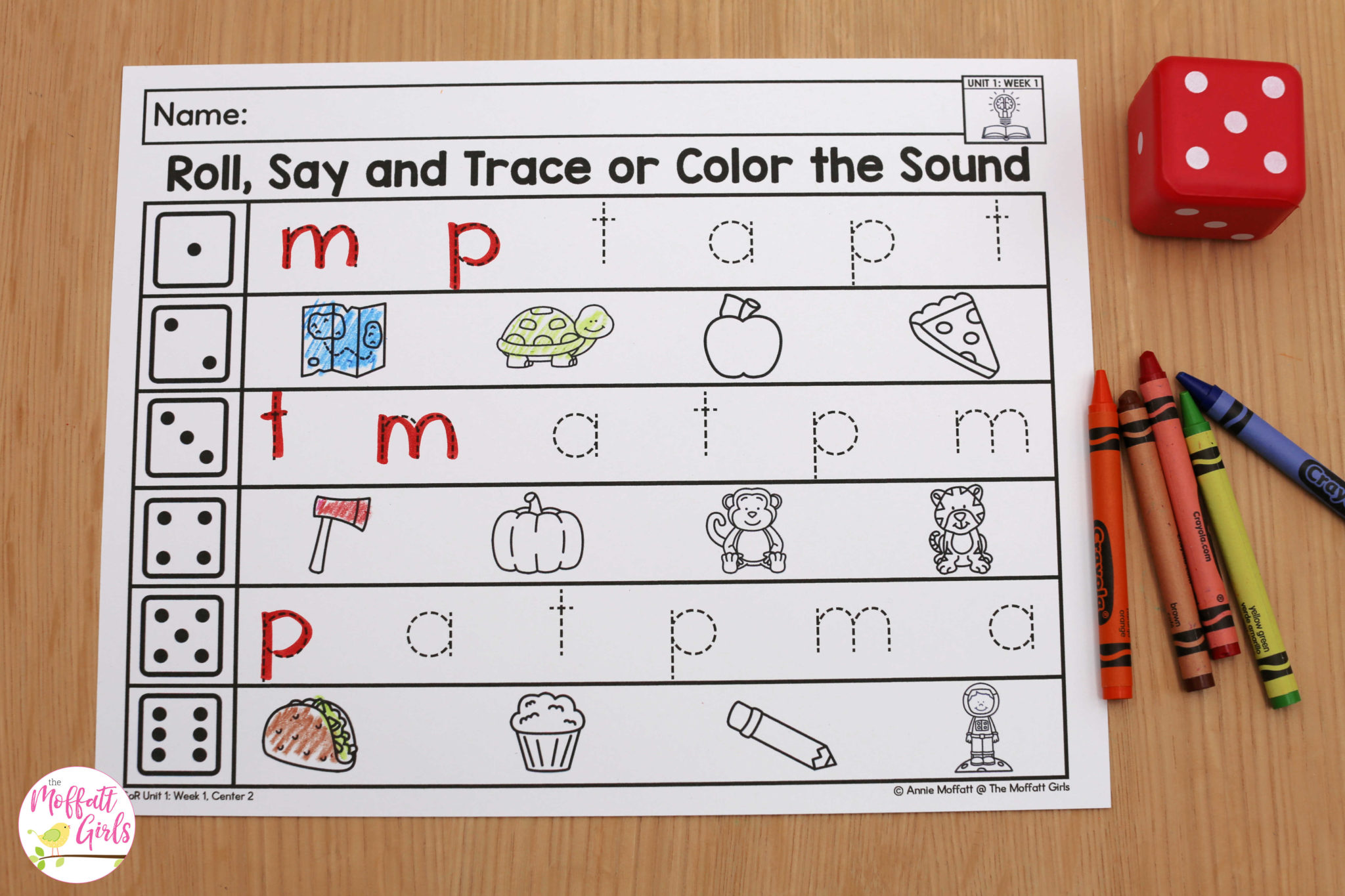
Center 2 High Frequency Words Activity: Heart Word Word Search
Students read, map, trace and write the word. Then they find the word 6 times in the word search.
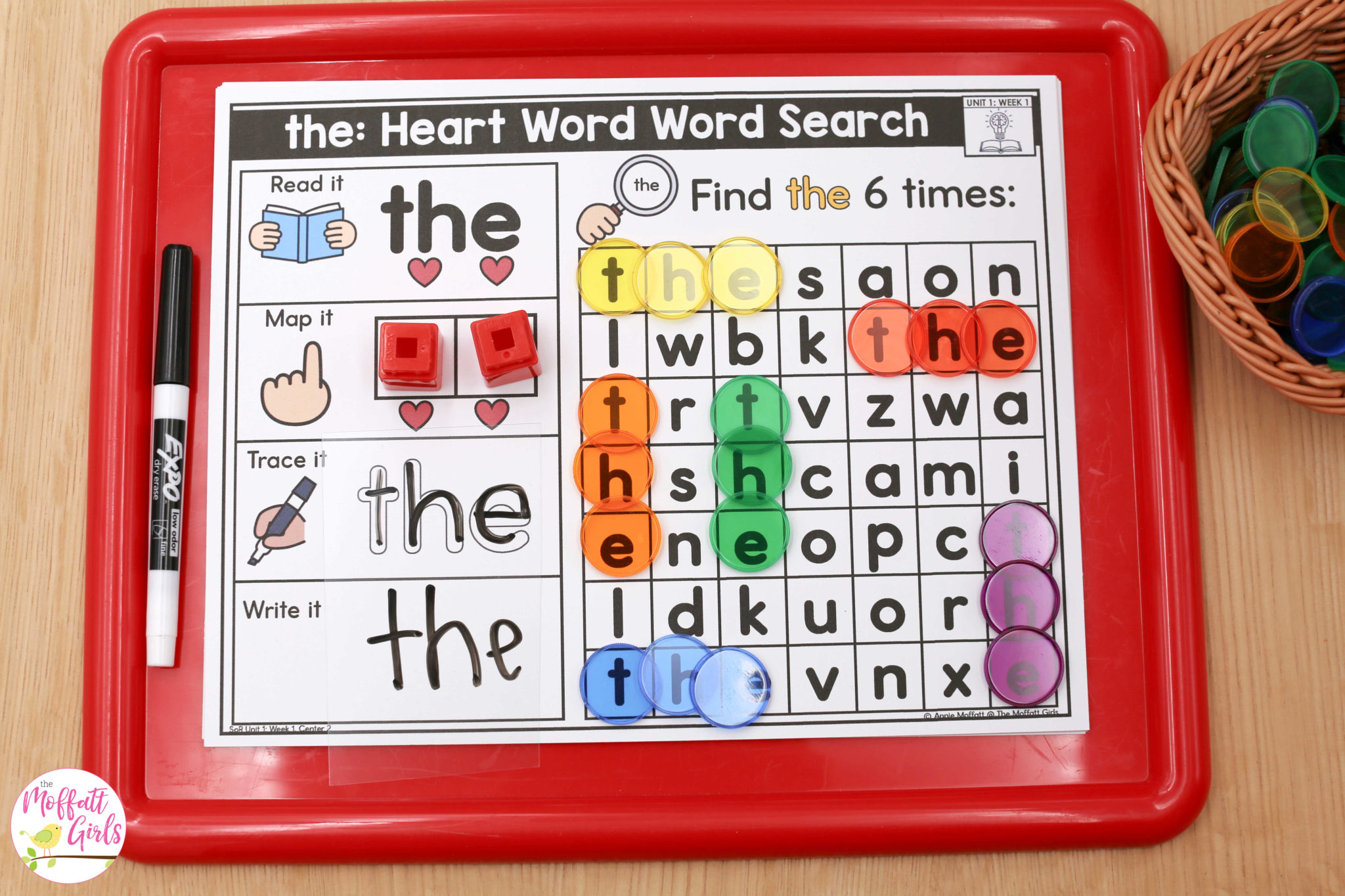
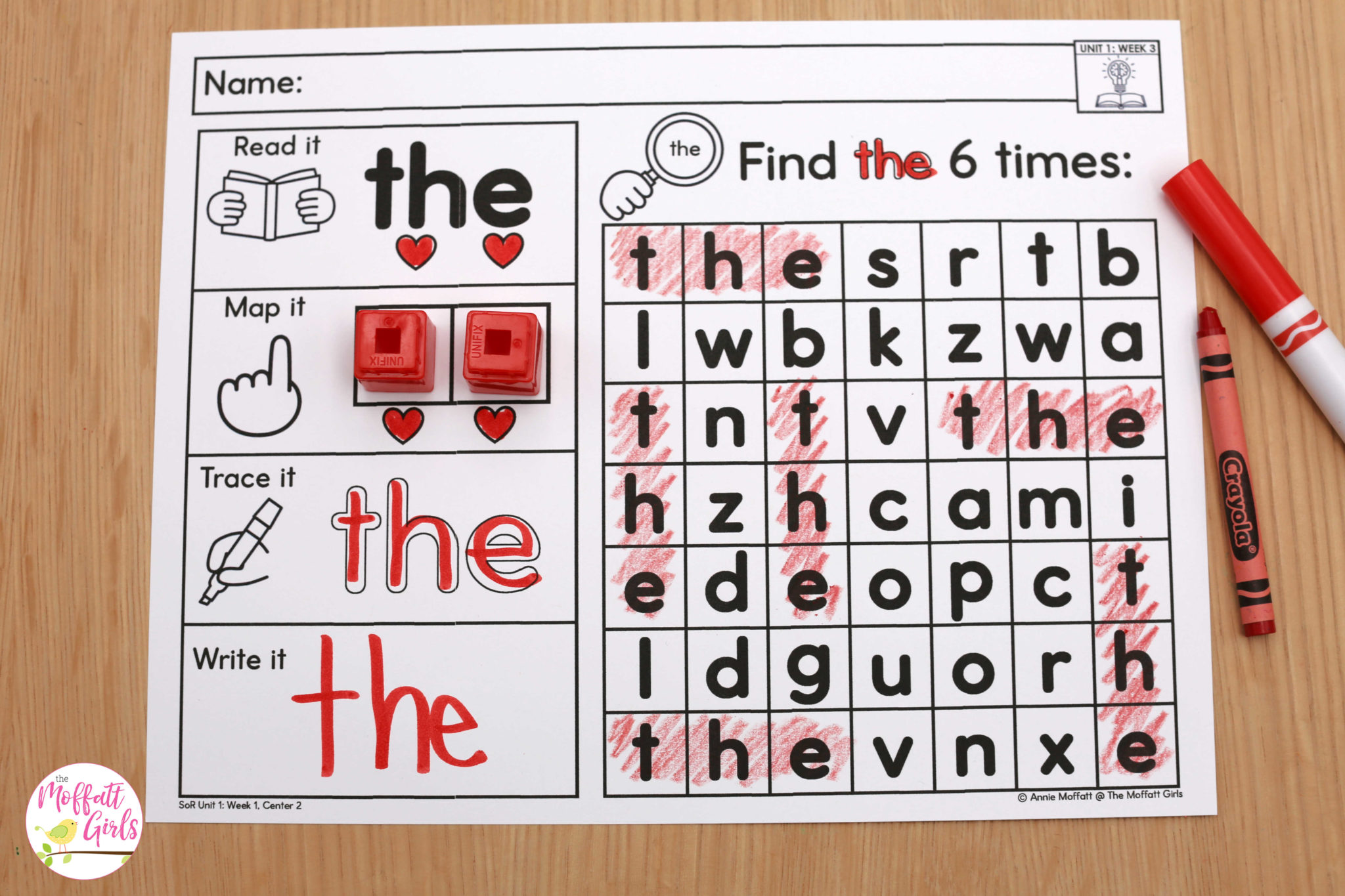
Center 3 Phonics Activity: Beginning Sounds Spin and Cover
Spin the spinner and cover an item that begins with the letter sound.
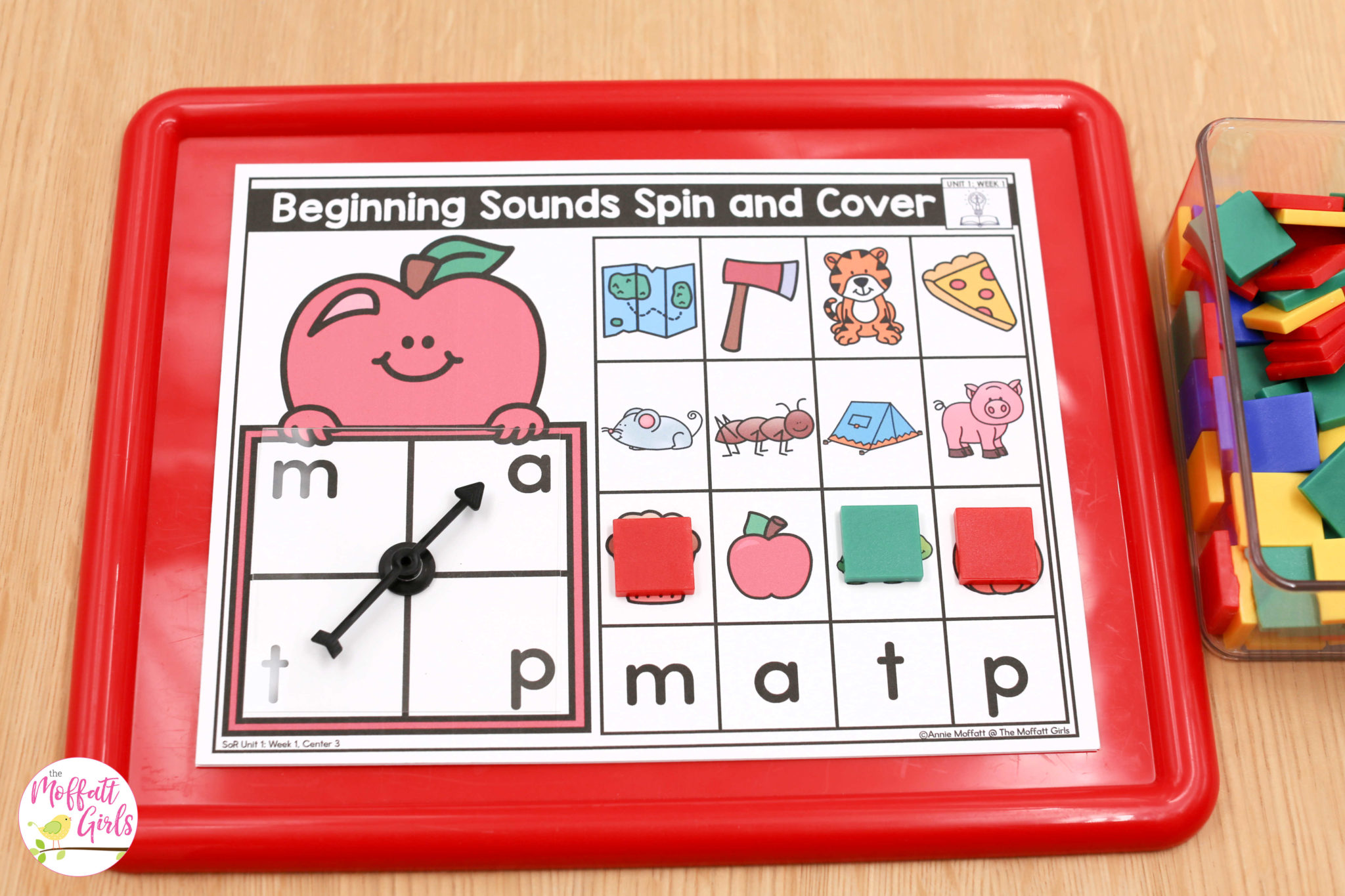
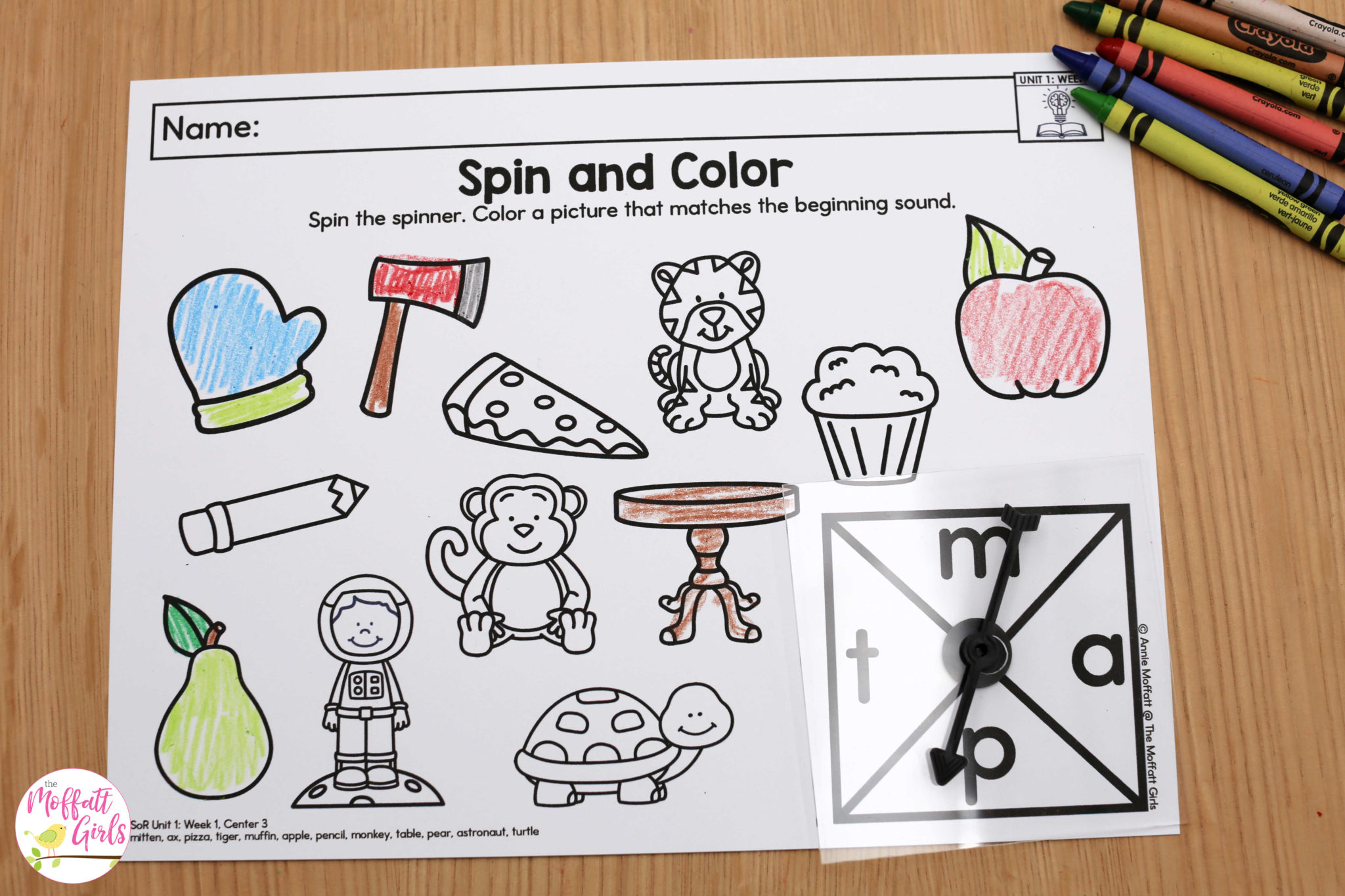
Center 3 High Frequency Words Activity: Find and Cover
Read the word in the middle and find and cover the word.
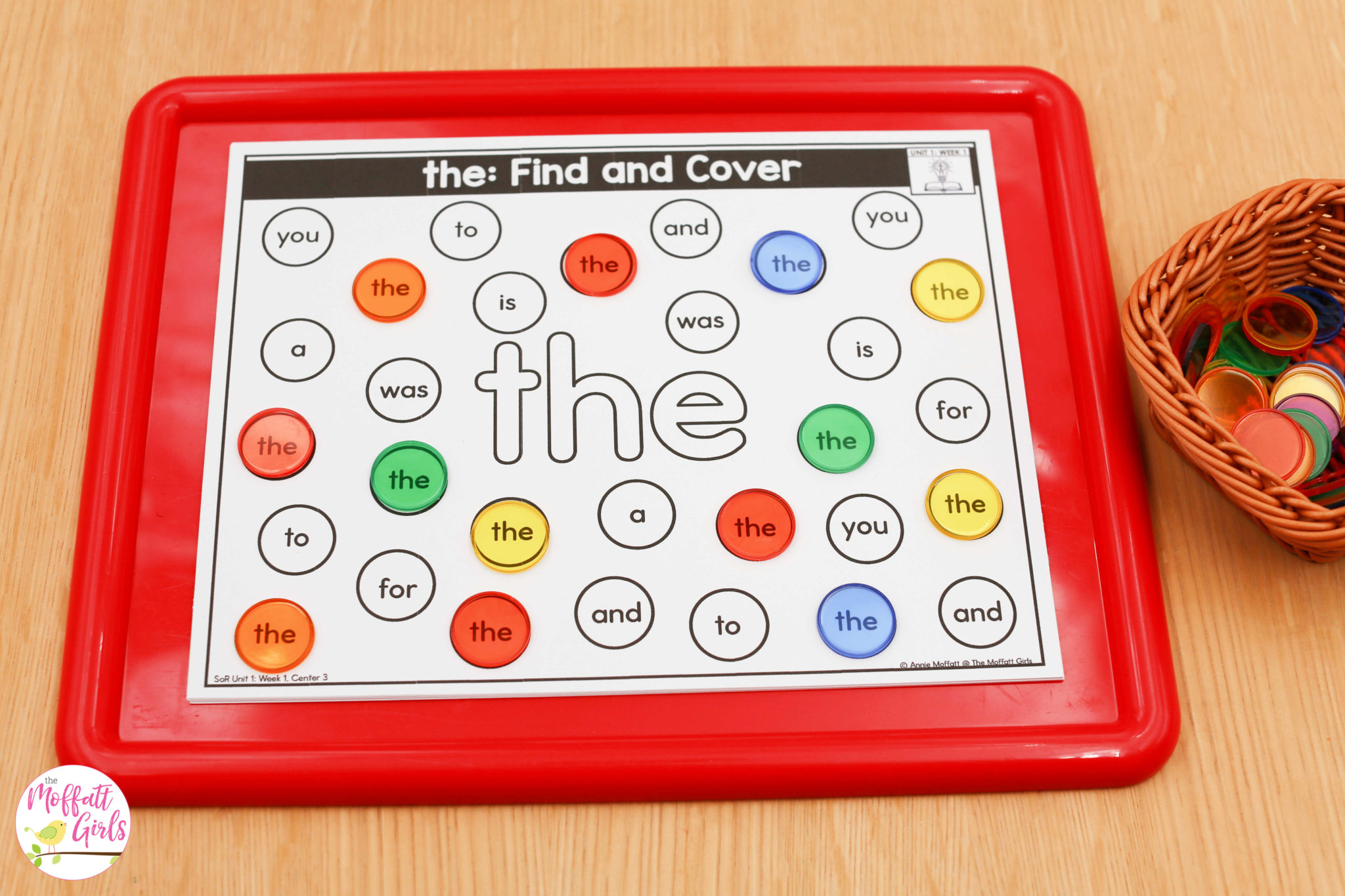
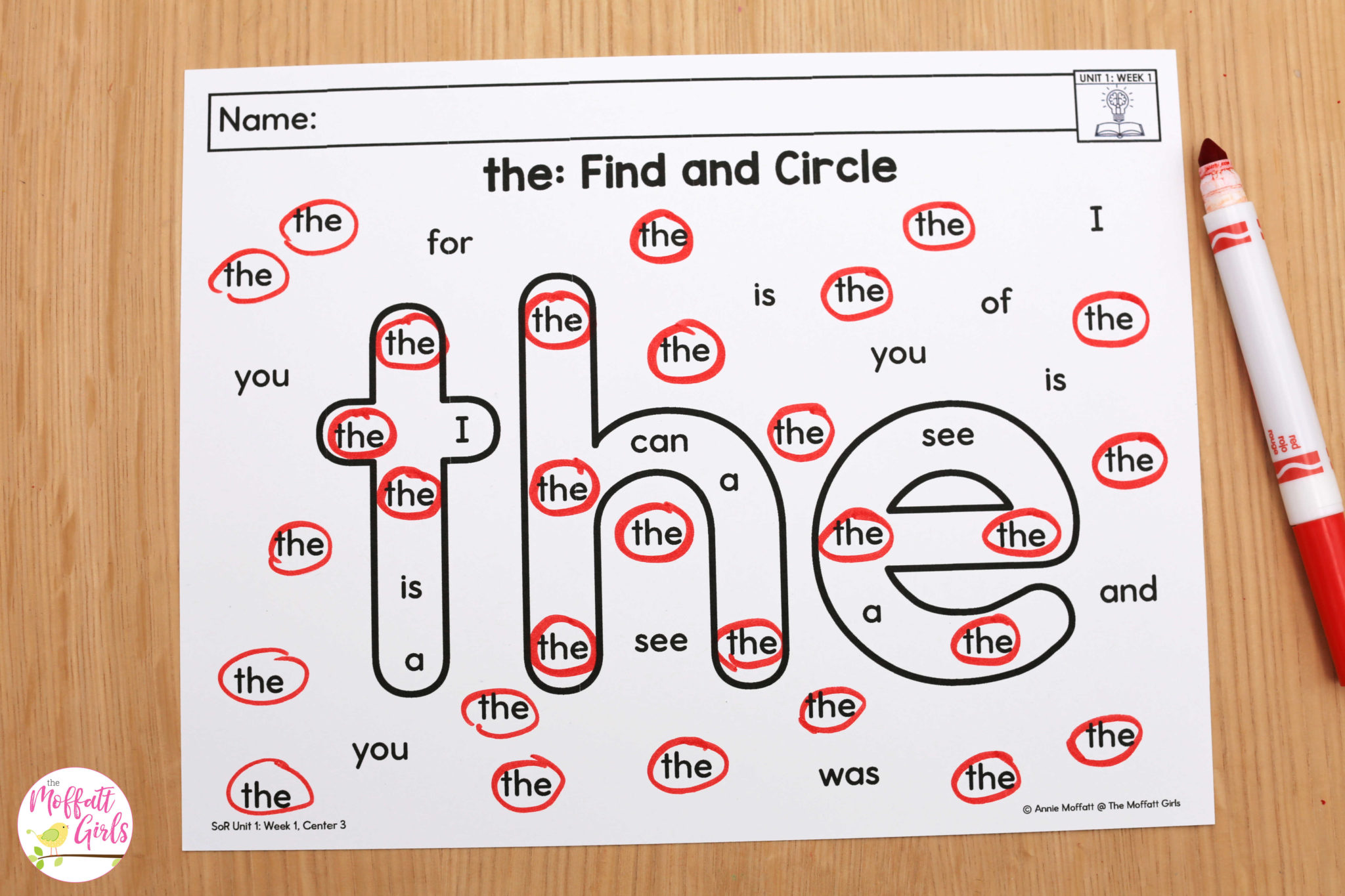
Center 4 Phonics Activity: I Spy Beginning Sounds
Students find and cover items that begin with the letter sound. Then they check them off.
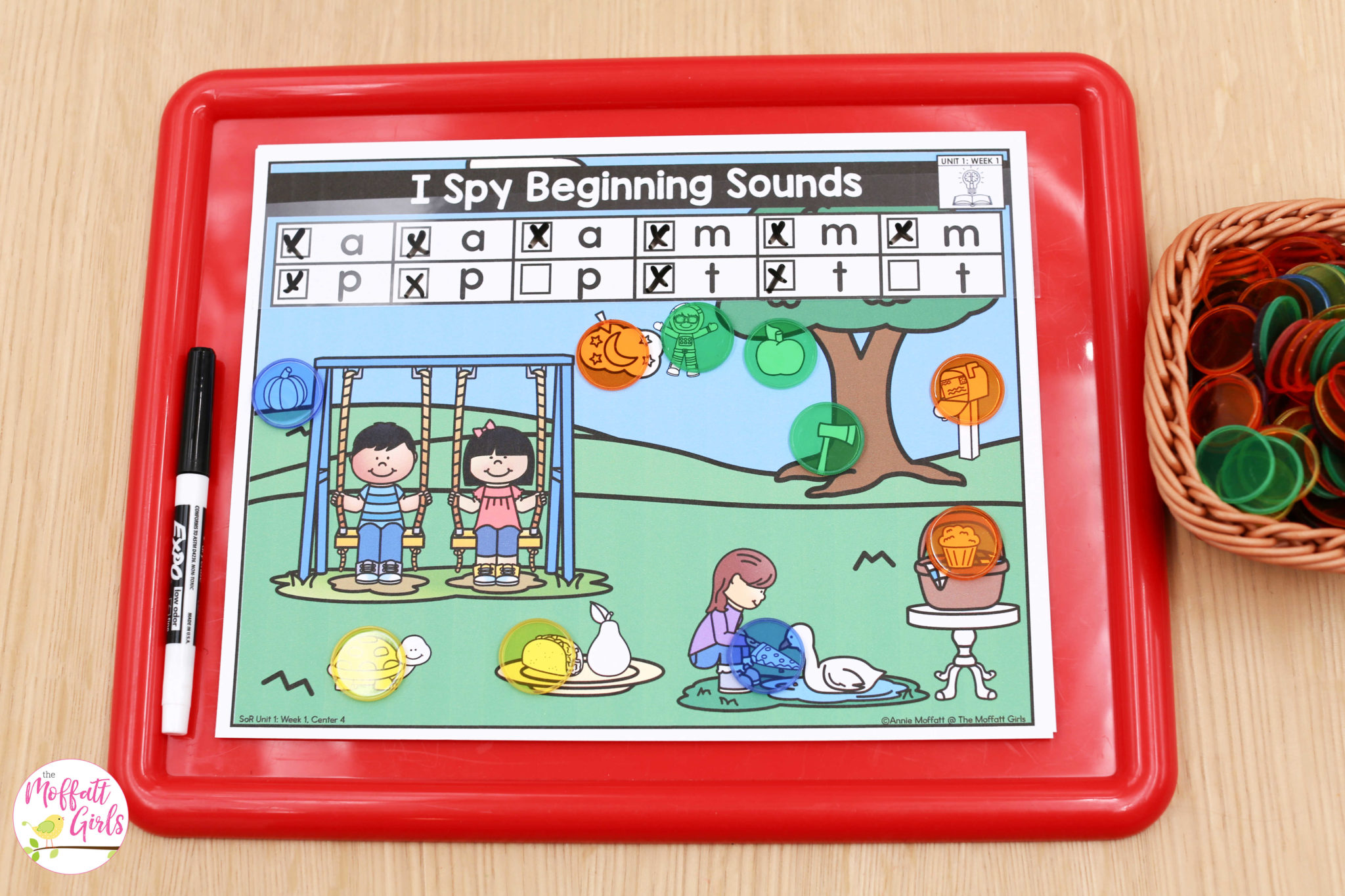
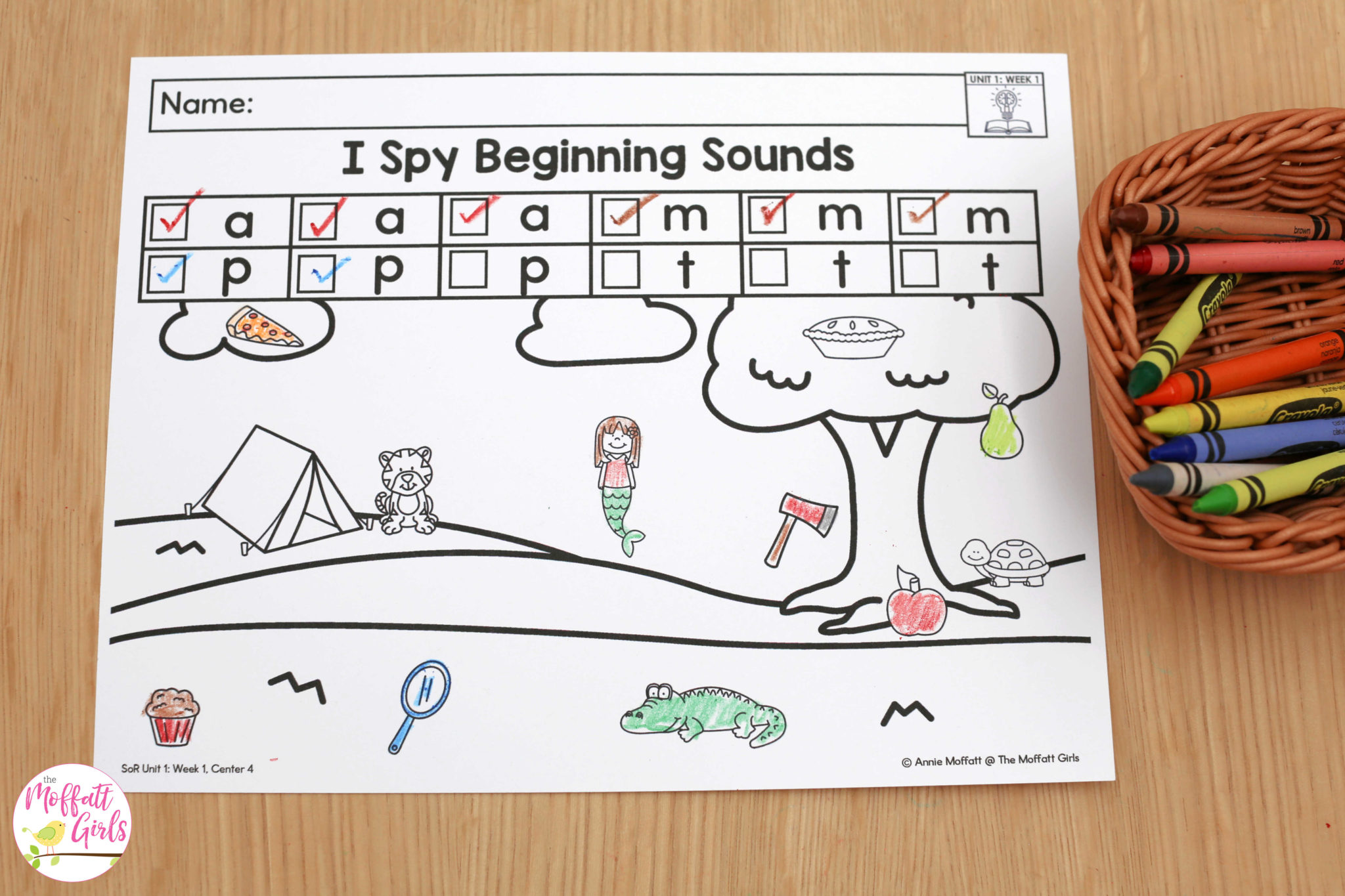
Center 4 High Frequency Words Activity: Maze Mat
Read the words and follow the path to get from start to finish.
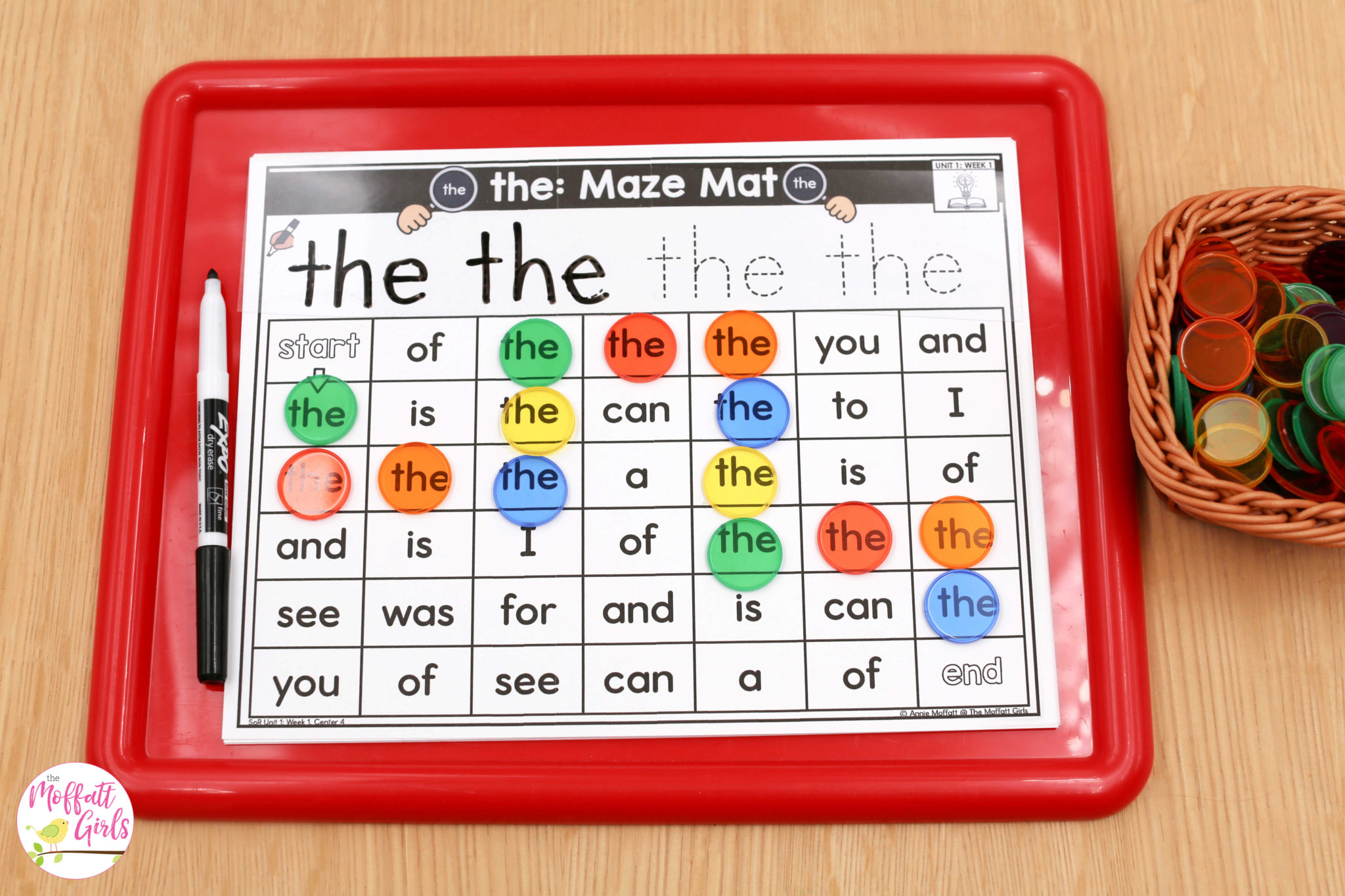
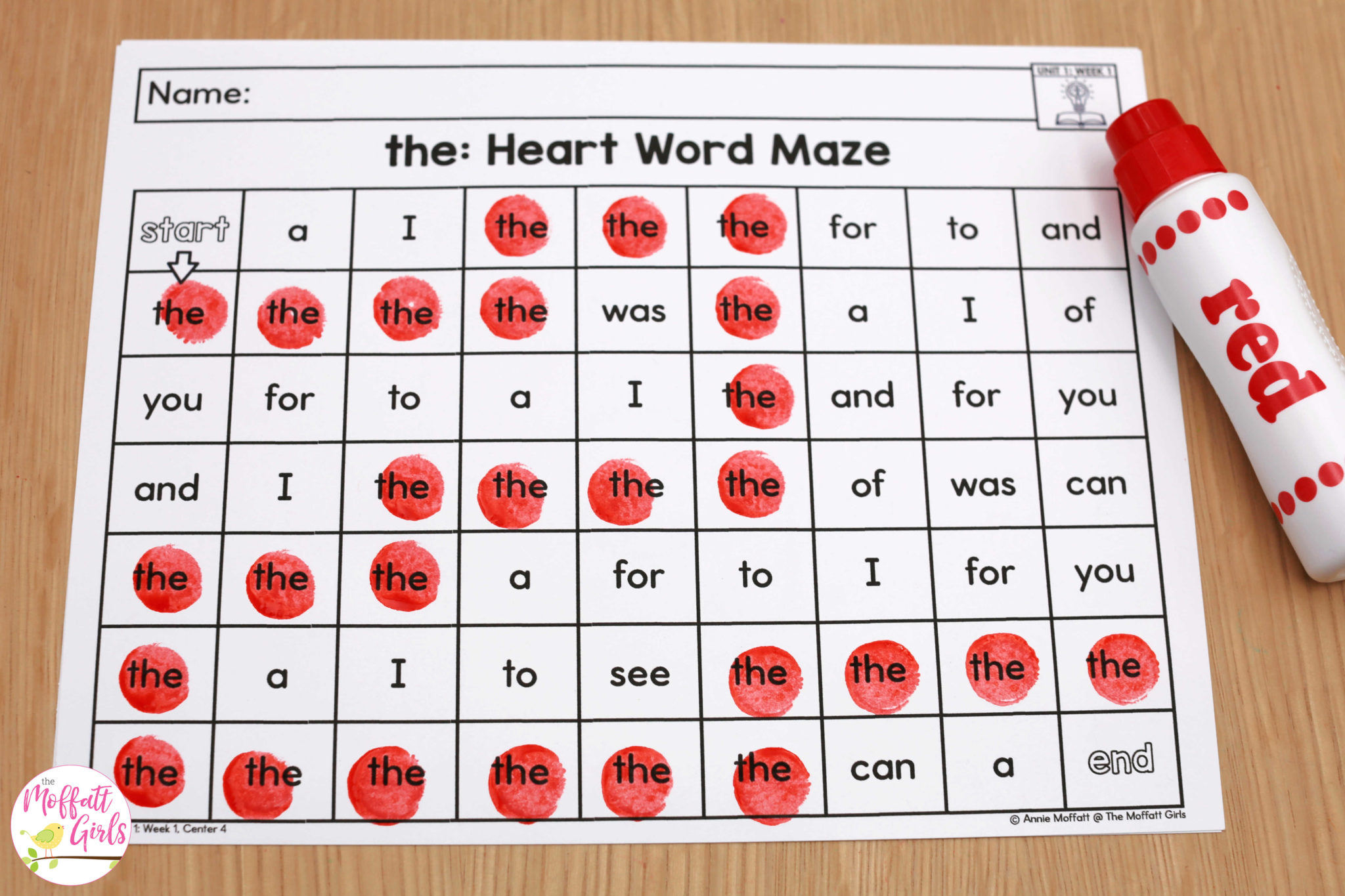
Weeks 4 & 9: Review
Weeks 4 and 9 in each unit will offer students the opportunity to review the skills they have learned. These weeks also offer you the opportunity to administer the mid- and post-assessments in order to guide your teaching.
Center 1: Roll & Read Letter Sounds
Students take turns rolling a die and moving along the game board to say the letter sounds or beginning sounds.
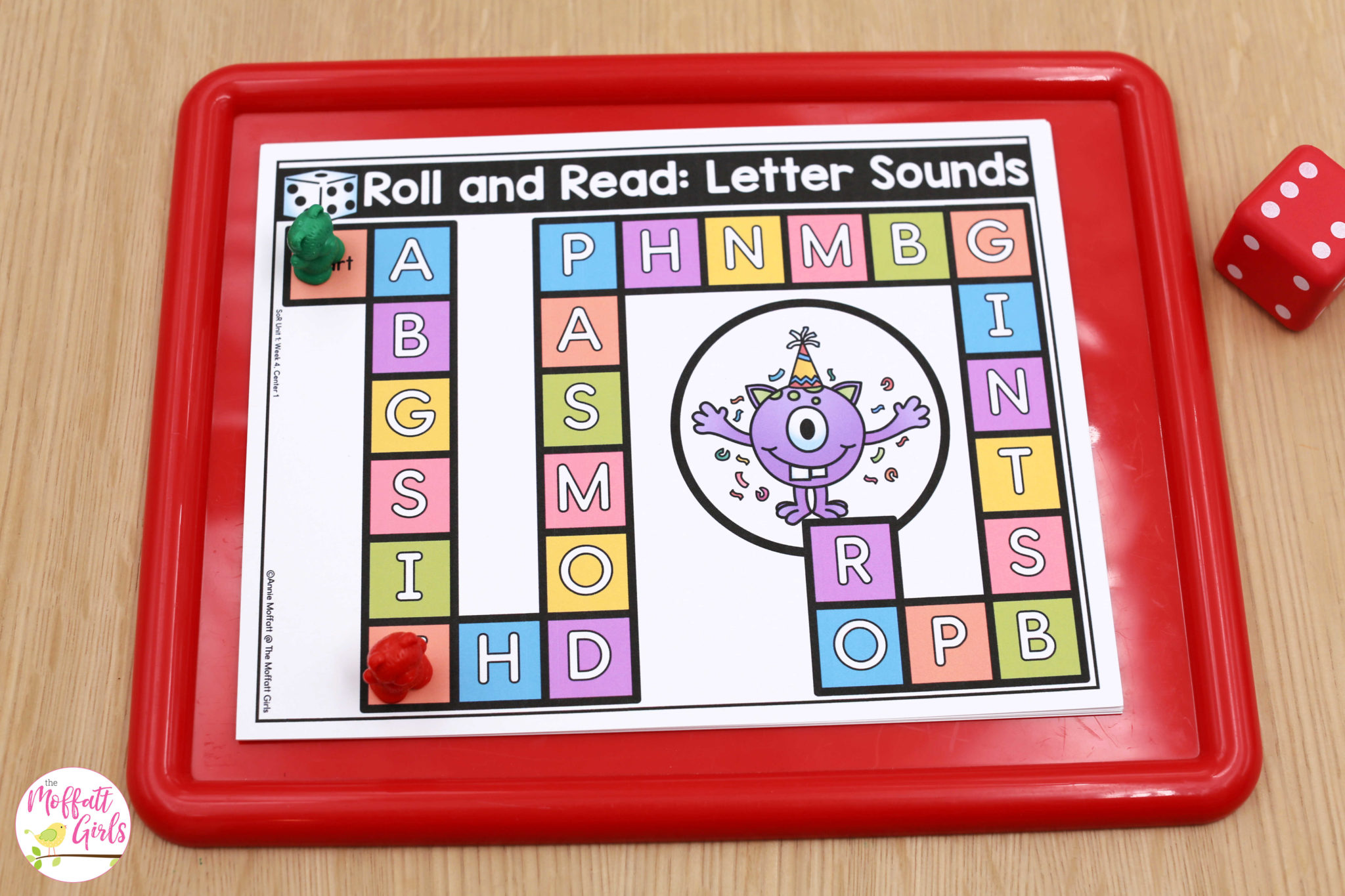
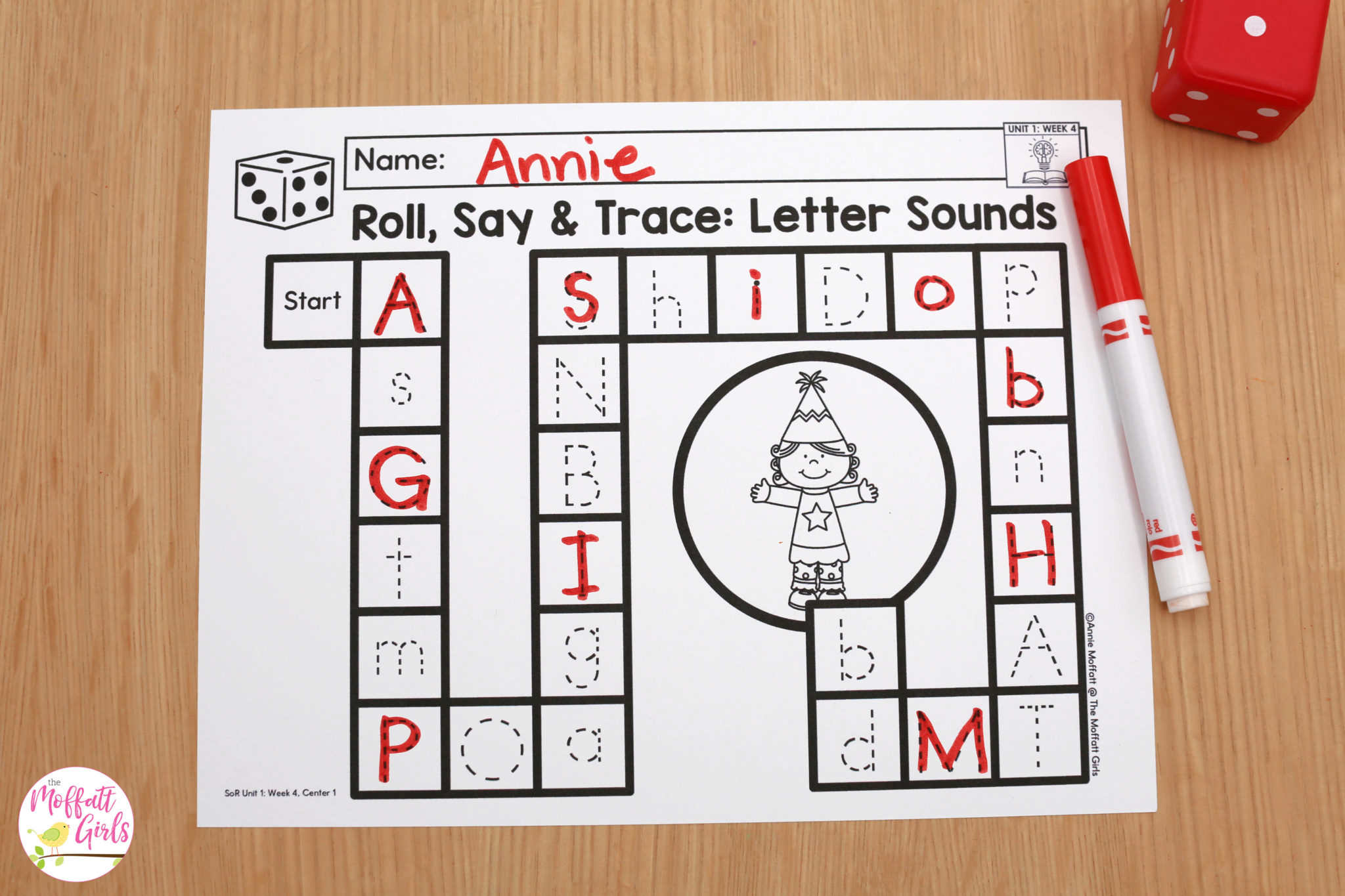
Center 2: Spin, Read & Cover Letter Sounds
Students spin the spinner, say the letter sound and cover a word that starts with the letter.
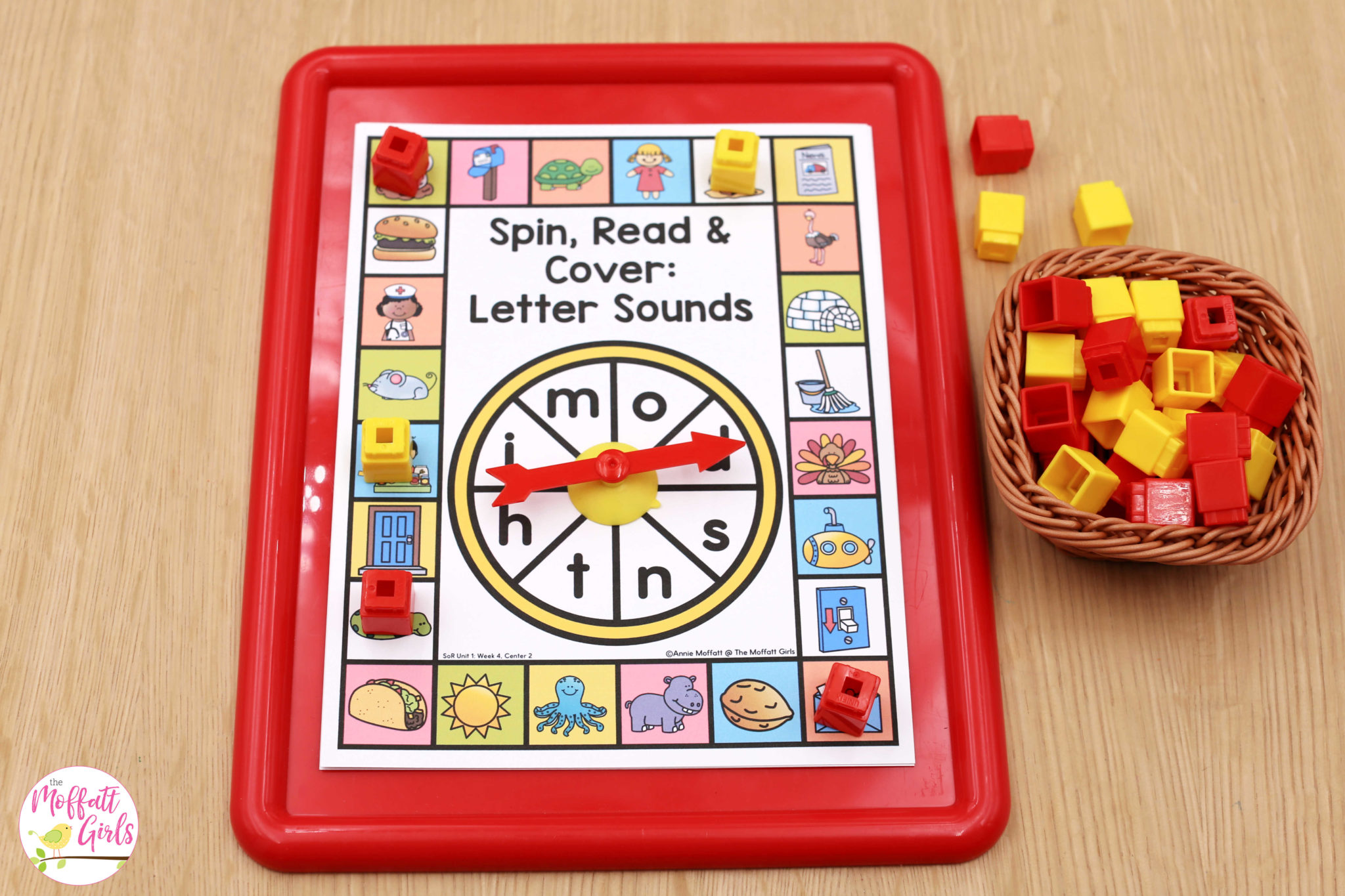
Center 3: Roll and Read Heart Words
Students take turns rolling a die and reading the high frequency word.
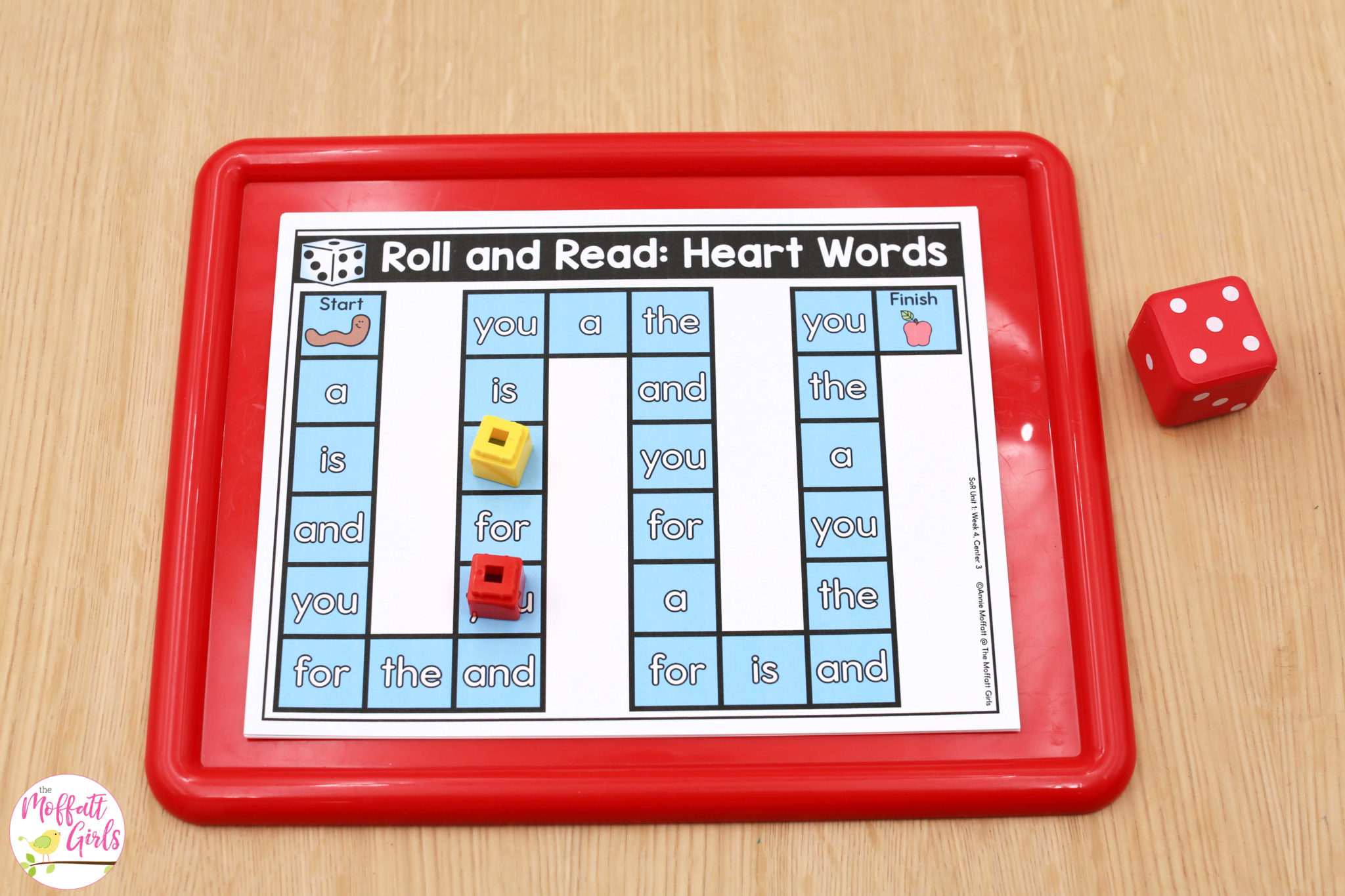
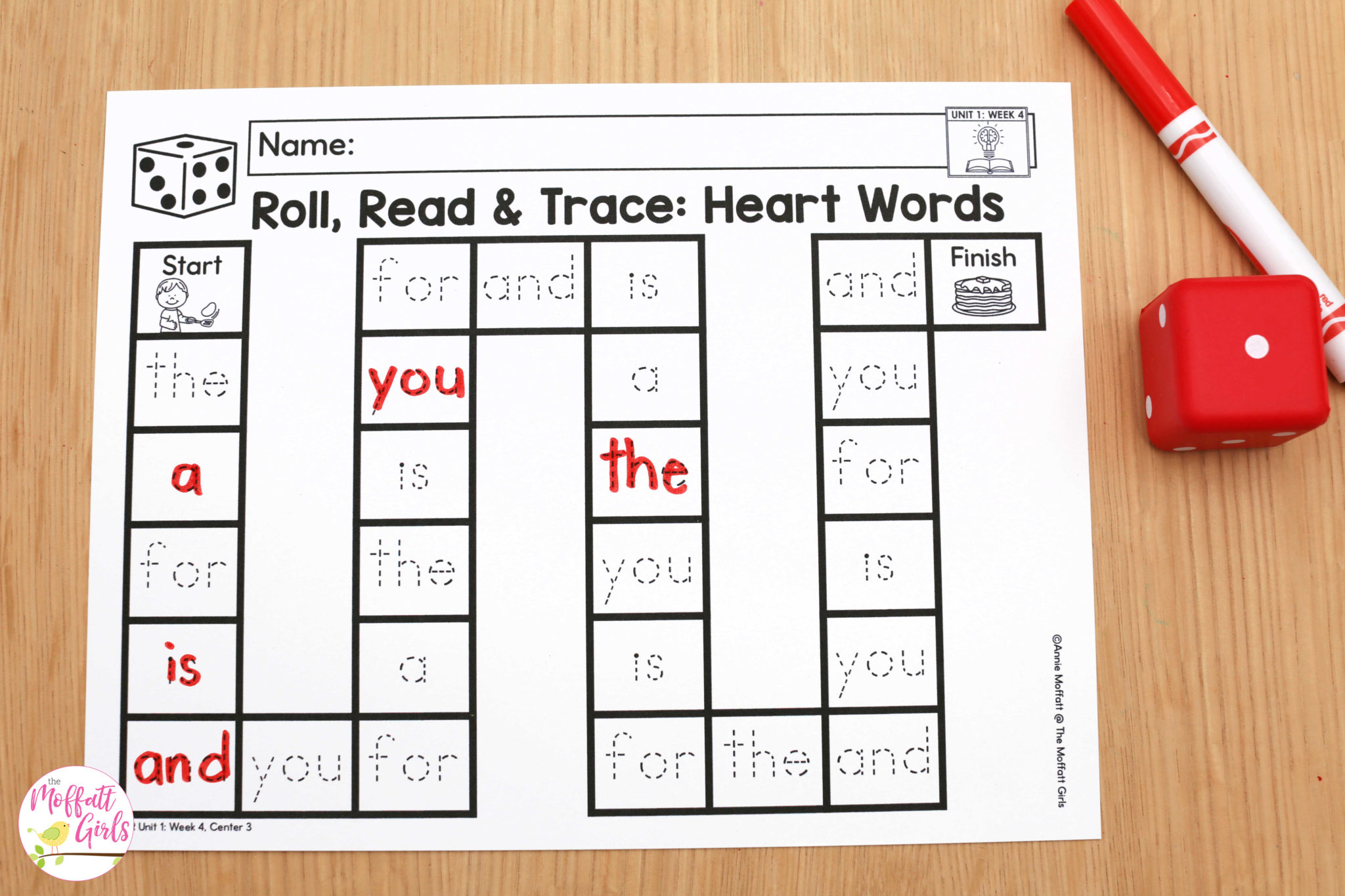
Center 4: Spin, Read & Cover Heart Words
Students spin the spinner, read the word, find it on the mat and cover it.
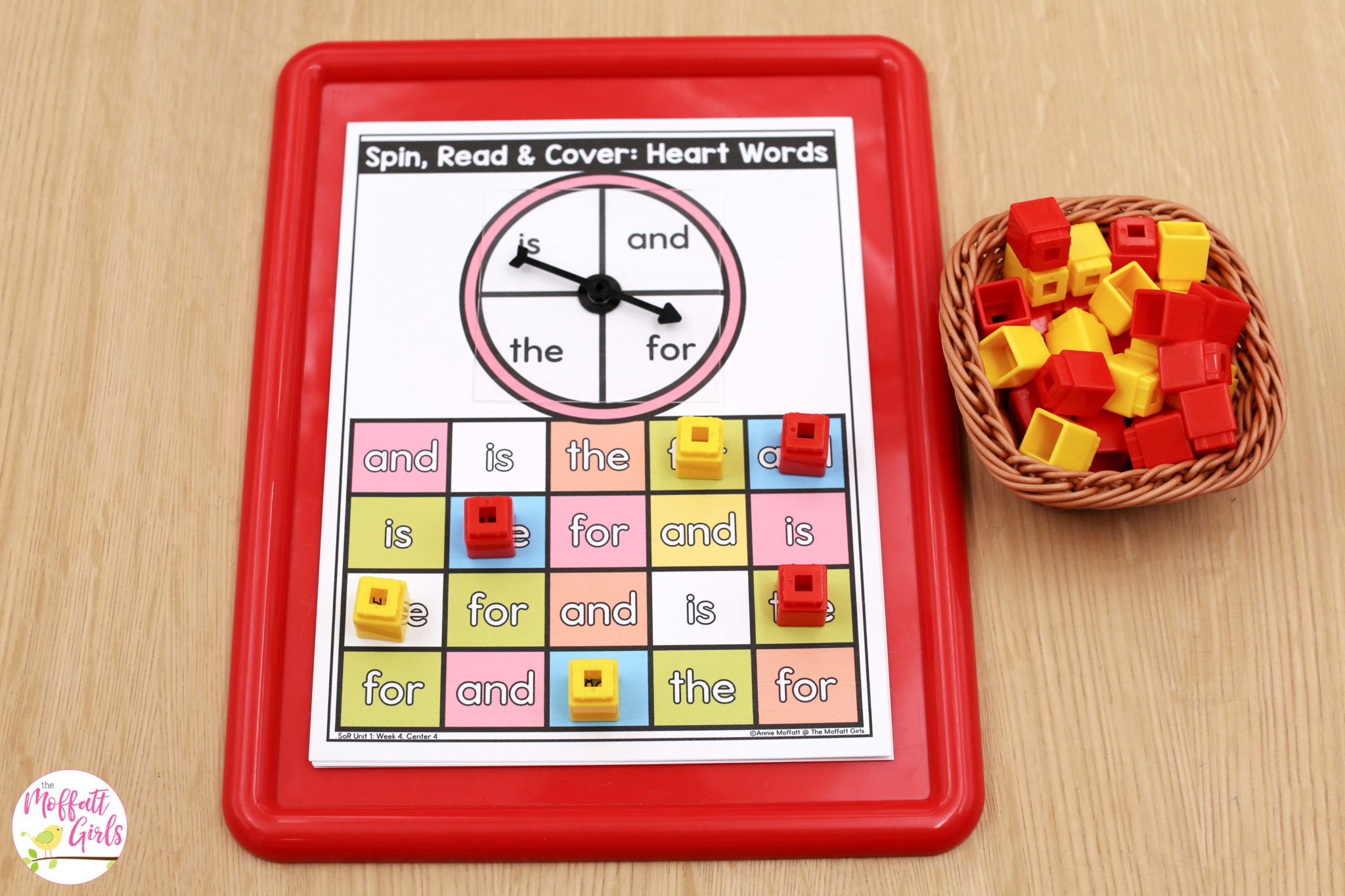
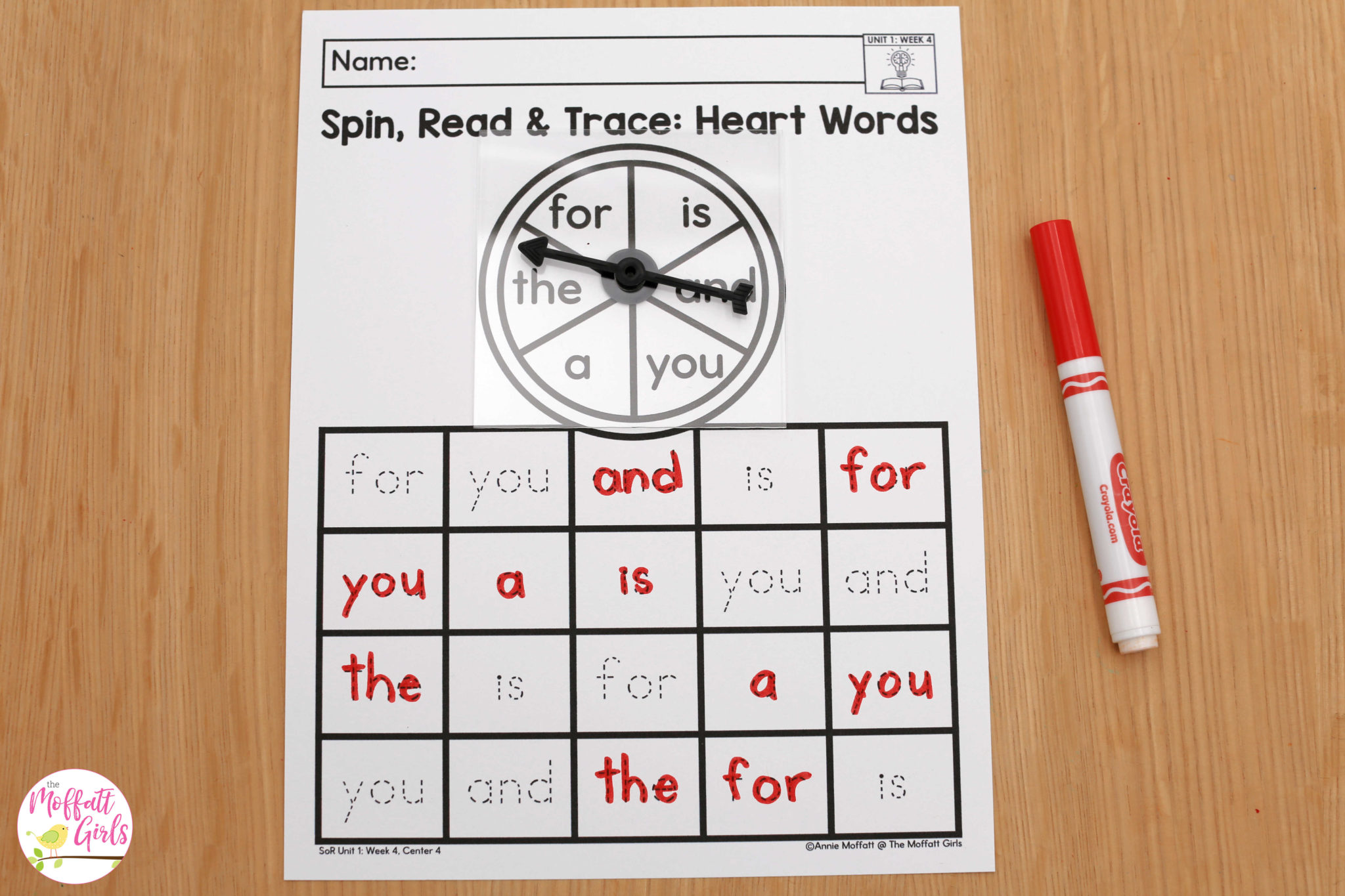
Folder #4: Teacher Table Tools
The teacher table is where you can differentiate your reading instruction based on your students’ individual needs. The “TTT” folder has all the resources that you will need for small-group instruction for the concepts introduced in Unit 1. These materials are organized by type, and then by week. Therefore, you can easily pull activities from previous weeks for review as needed. Use the Teacher Table Tools throughout the unit to offer scaffolding for struggling students, additional practice for on-track students and extension activities for students who are ready for more challenging work.
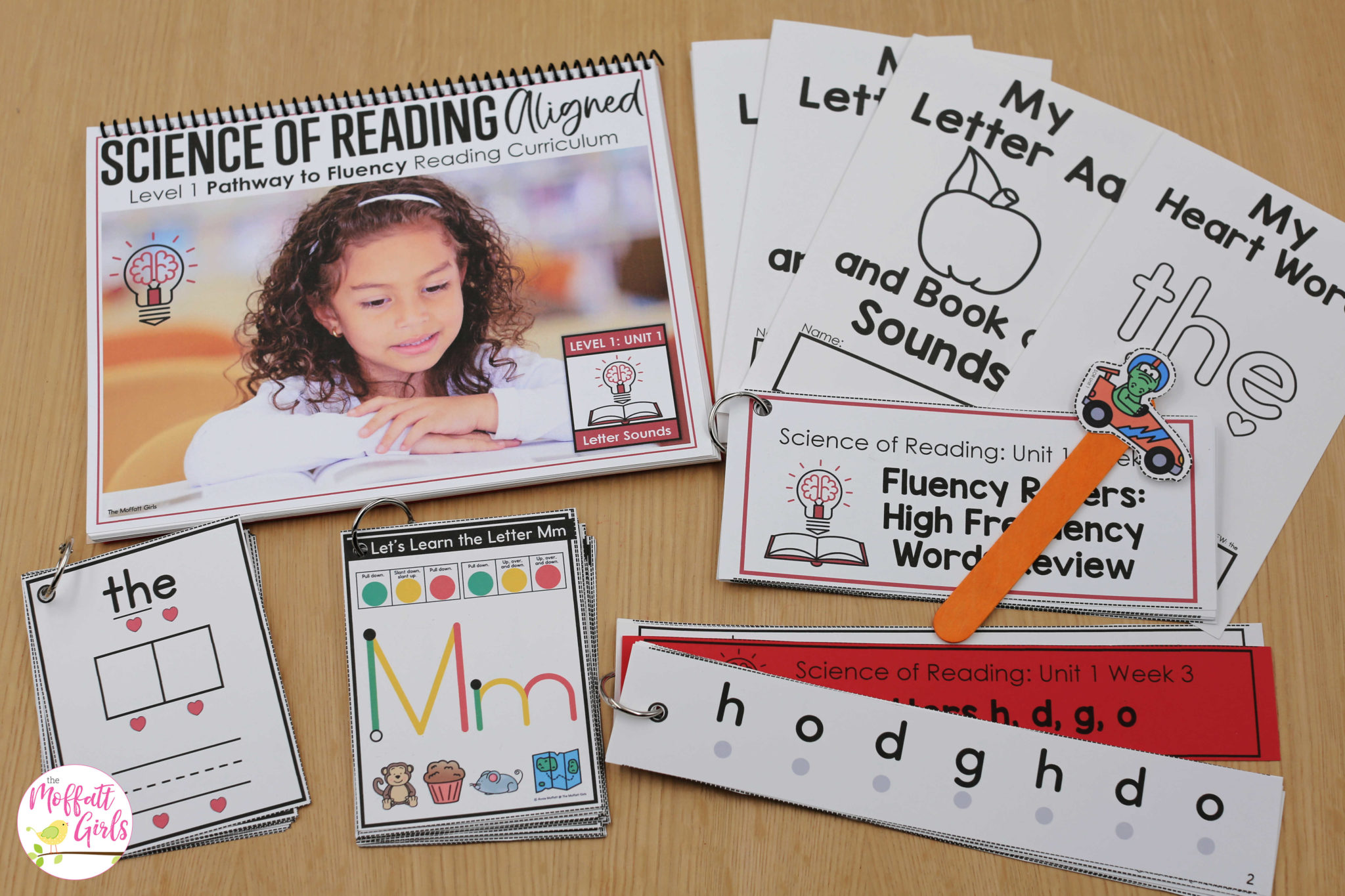
Oral Phonological & Phonemic Awareness Practice
To start, additional phonological and phonemic awareness activities are provided. These coincide with the whole-group lesson exercises. Use them as a warm-up at the beginning of small group instruction.
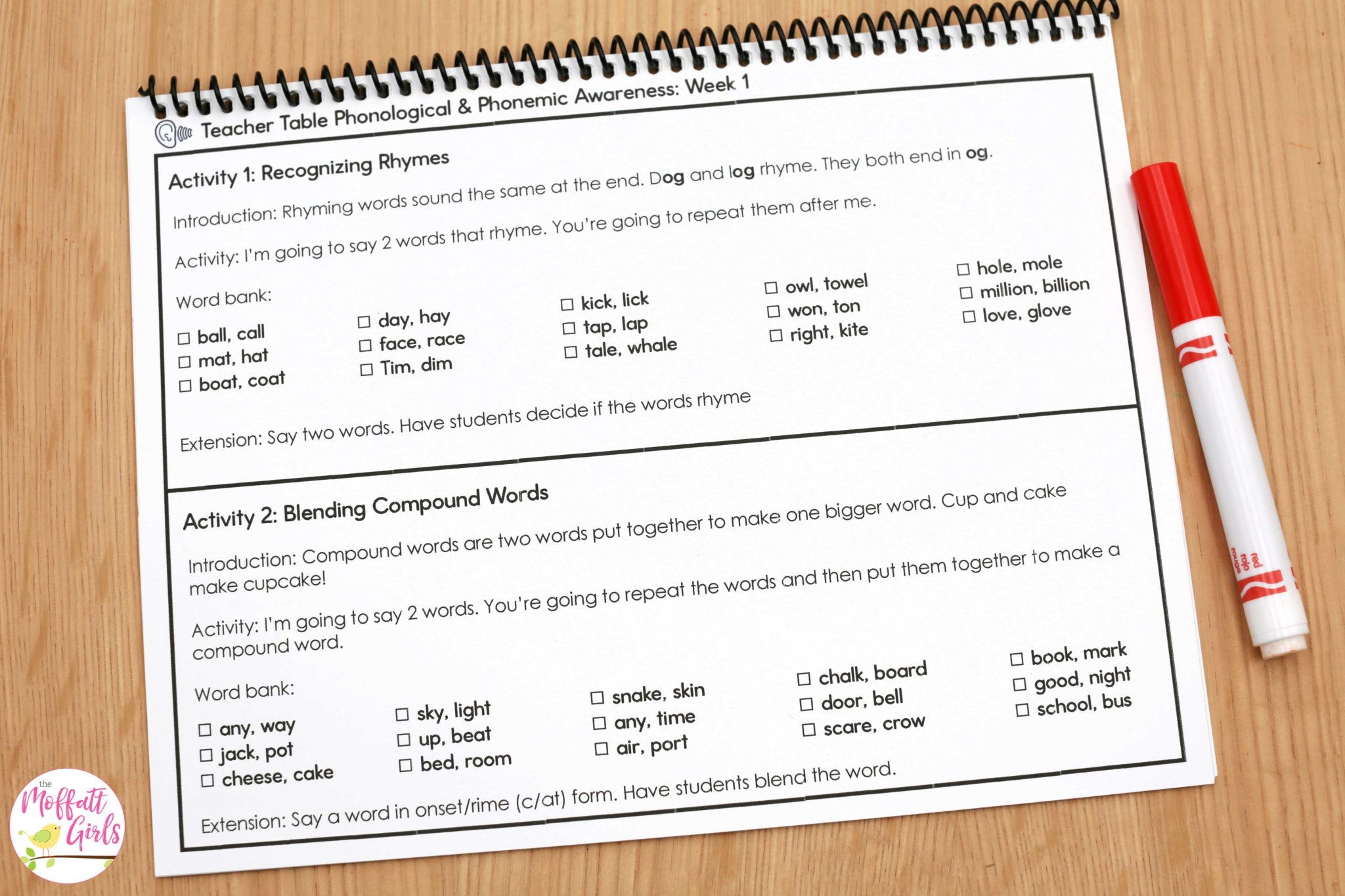
Letter Formation & Letter Sounds Flash Cards
Next up, use these as a warm-up at the beginning of small group instruction and as a scaffold for students who struggle with letter formation.
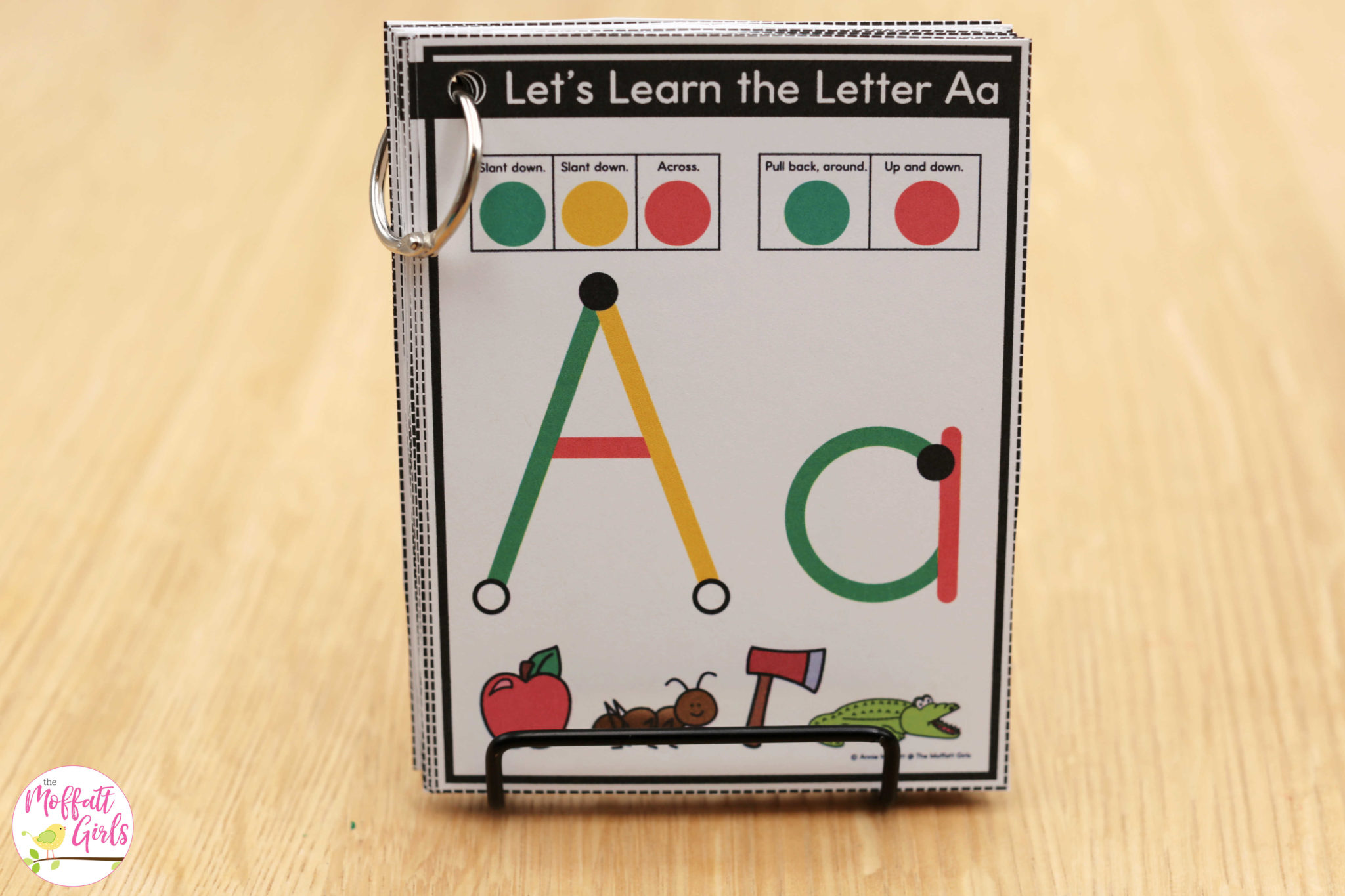
Letter Formation Lines
These offer a visual aid to help students understand and practice how the letters sit on the lines.
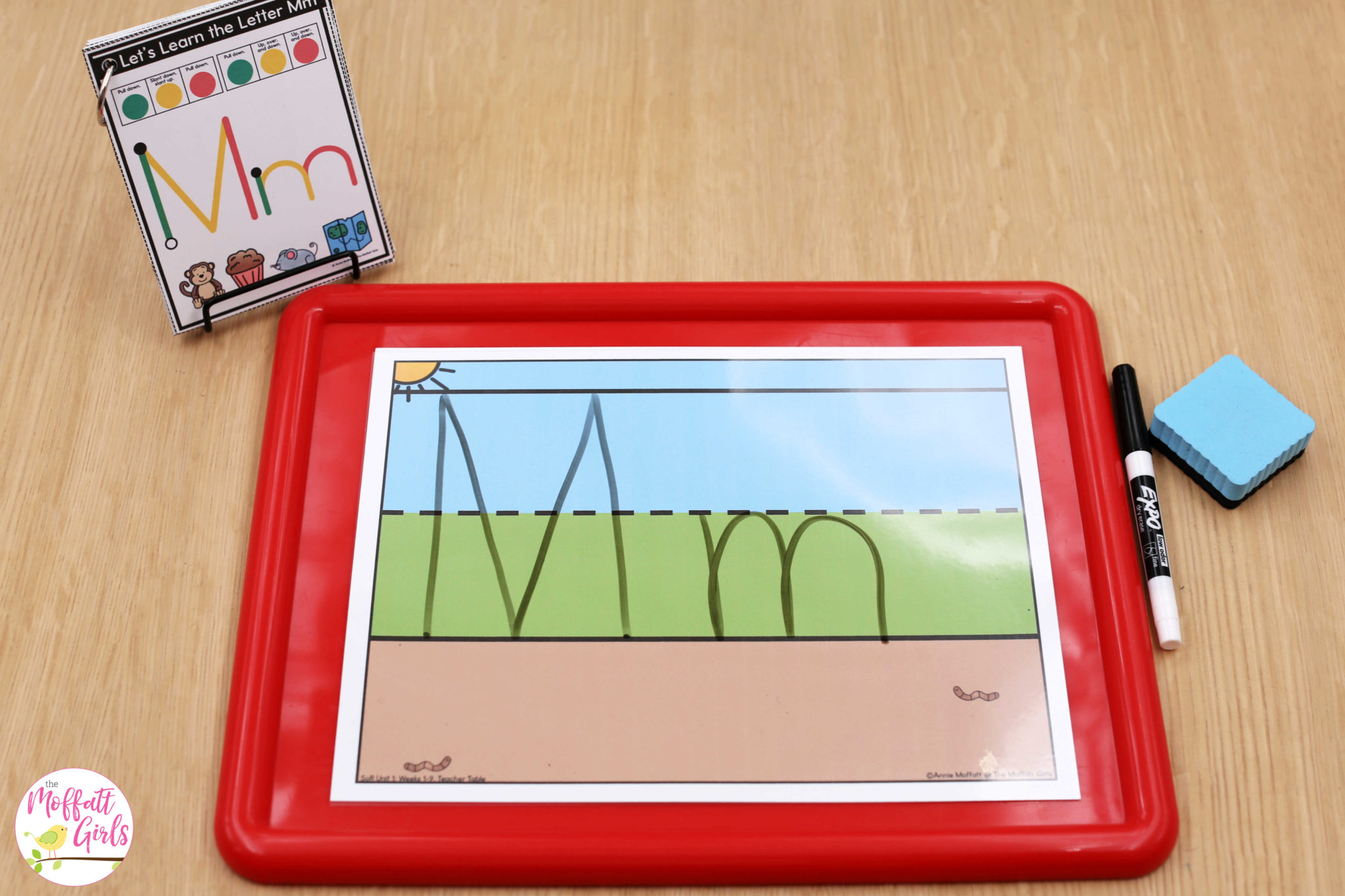
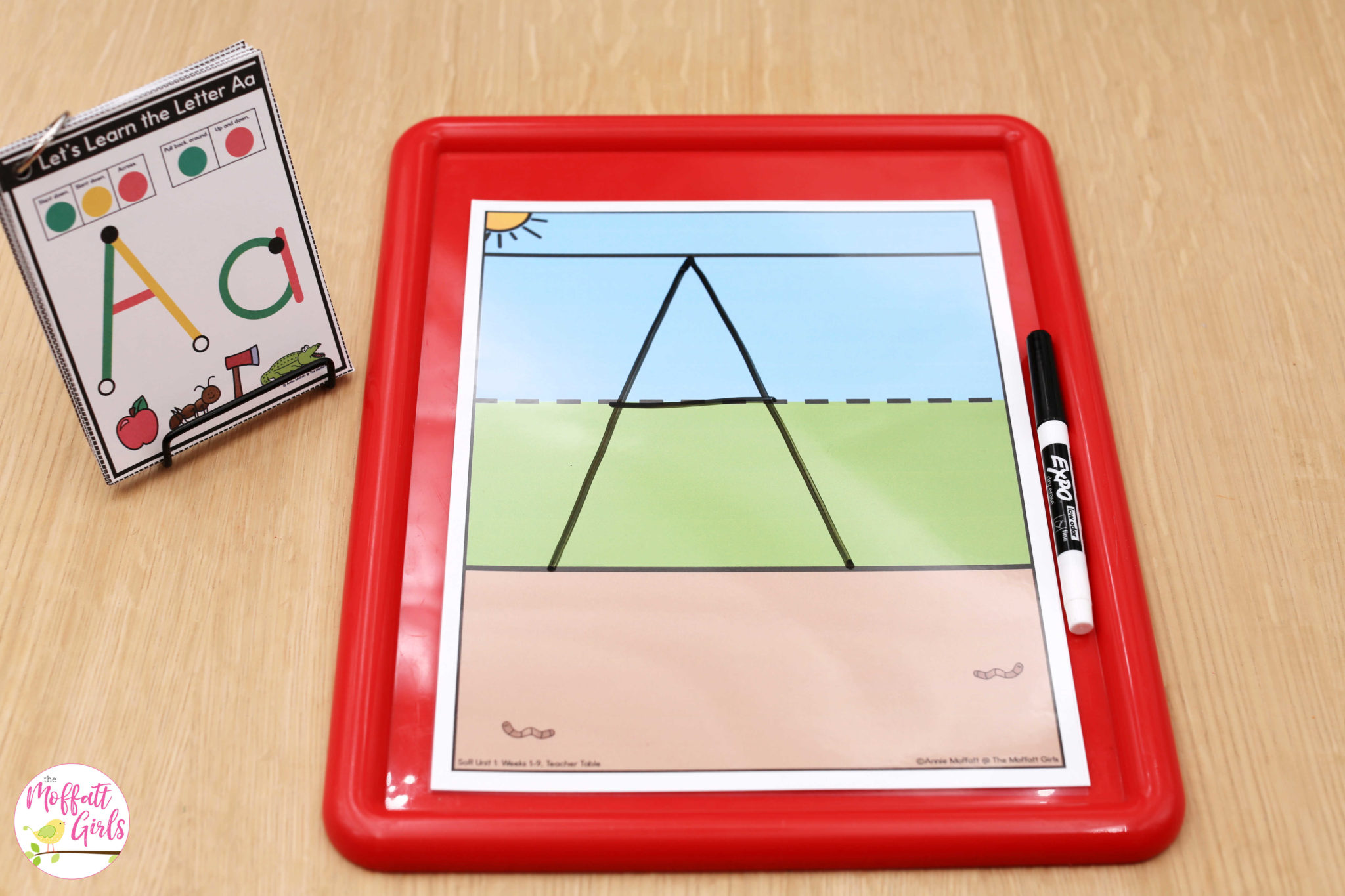
Also, additional letter formation practice sheets are included. You can use these to identify your students’ strengths and weaknesses in handwriting.
Letter Formation Mats
Add manipulatives, play dough or other sensorial materials and use as a scaffold for students who need additional practice with letter formation.
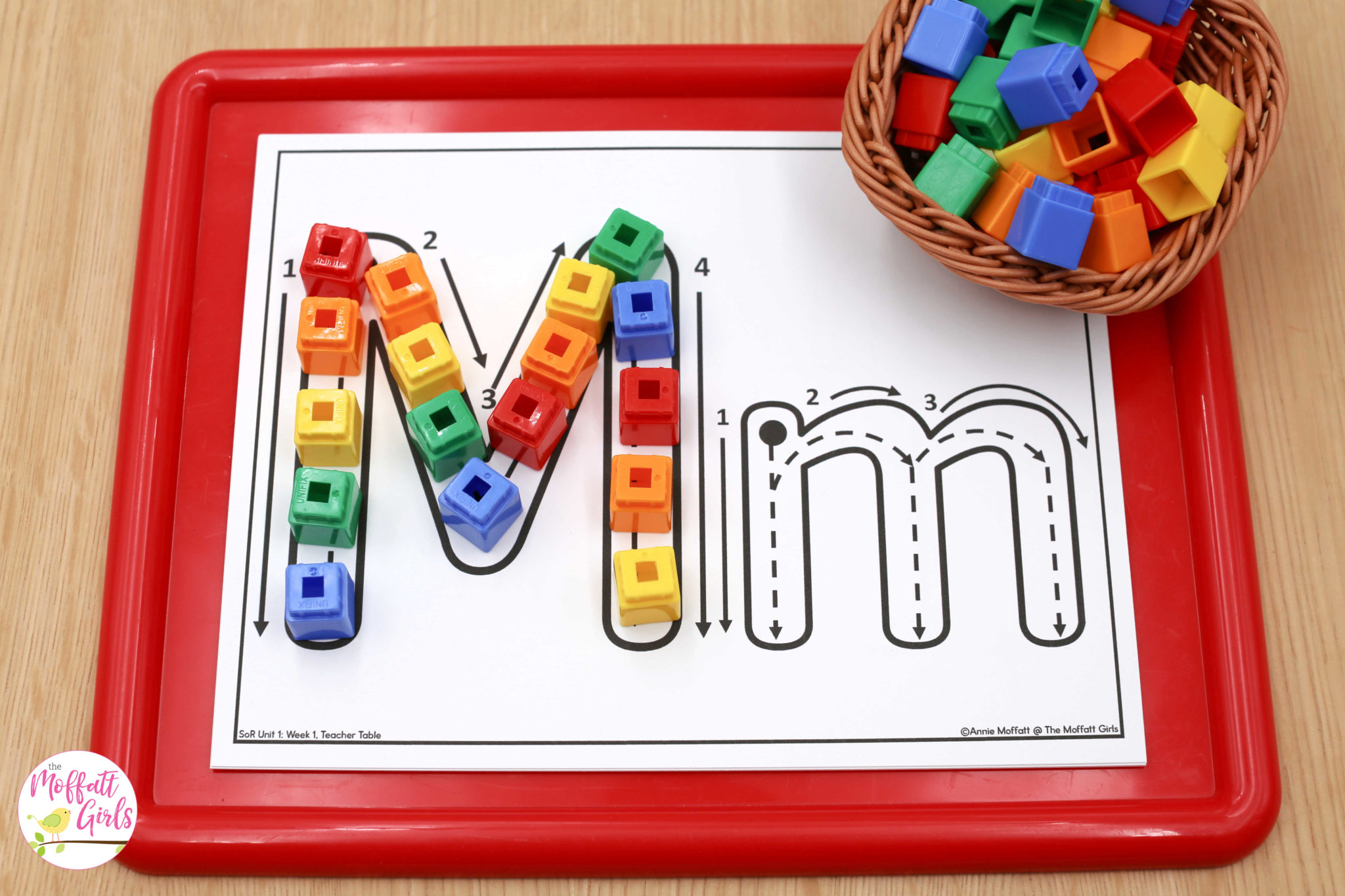
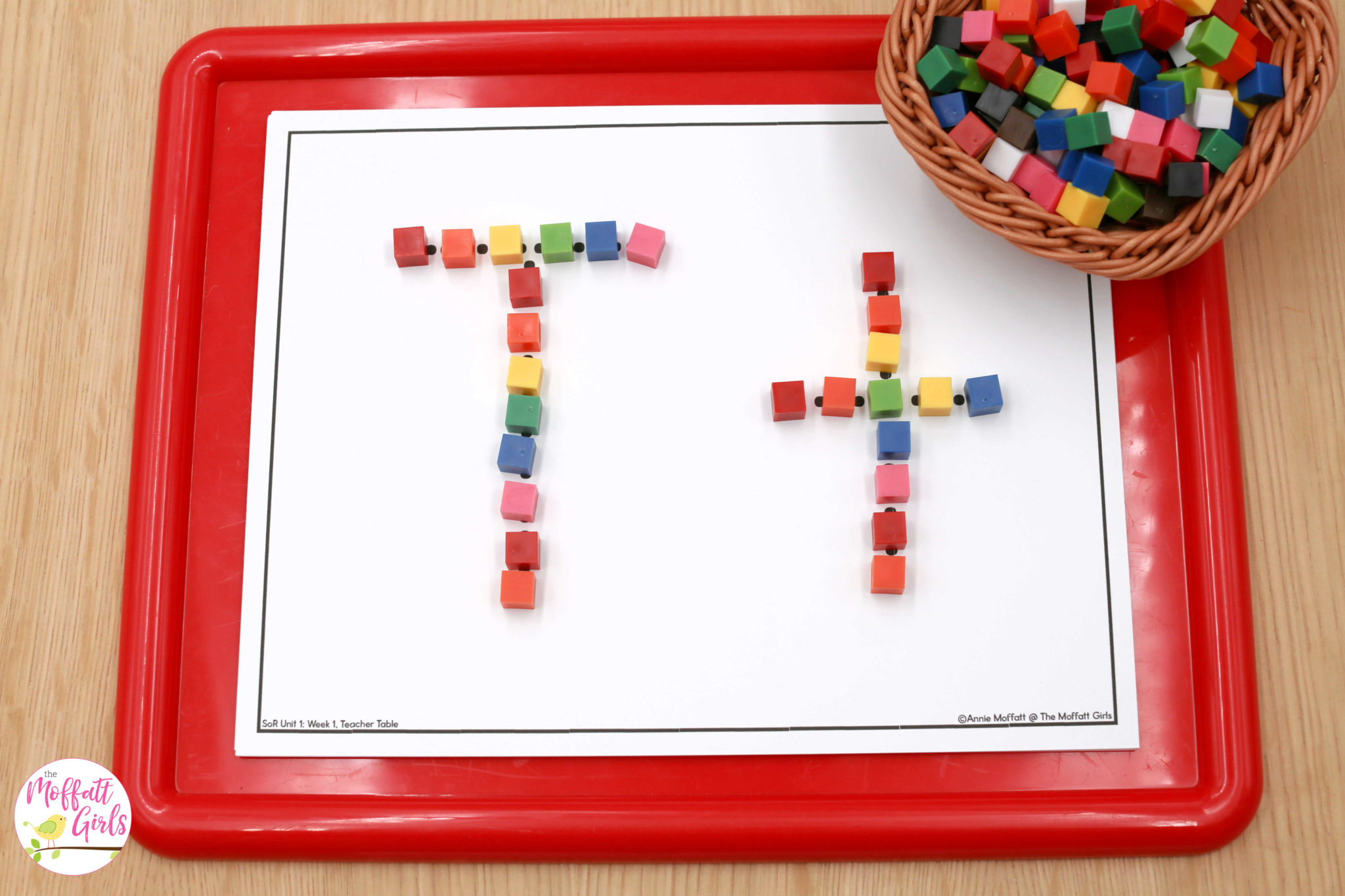
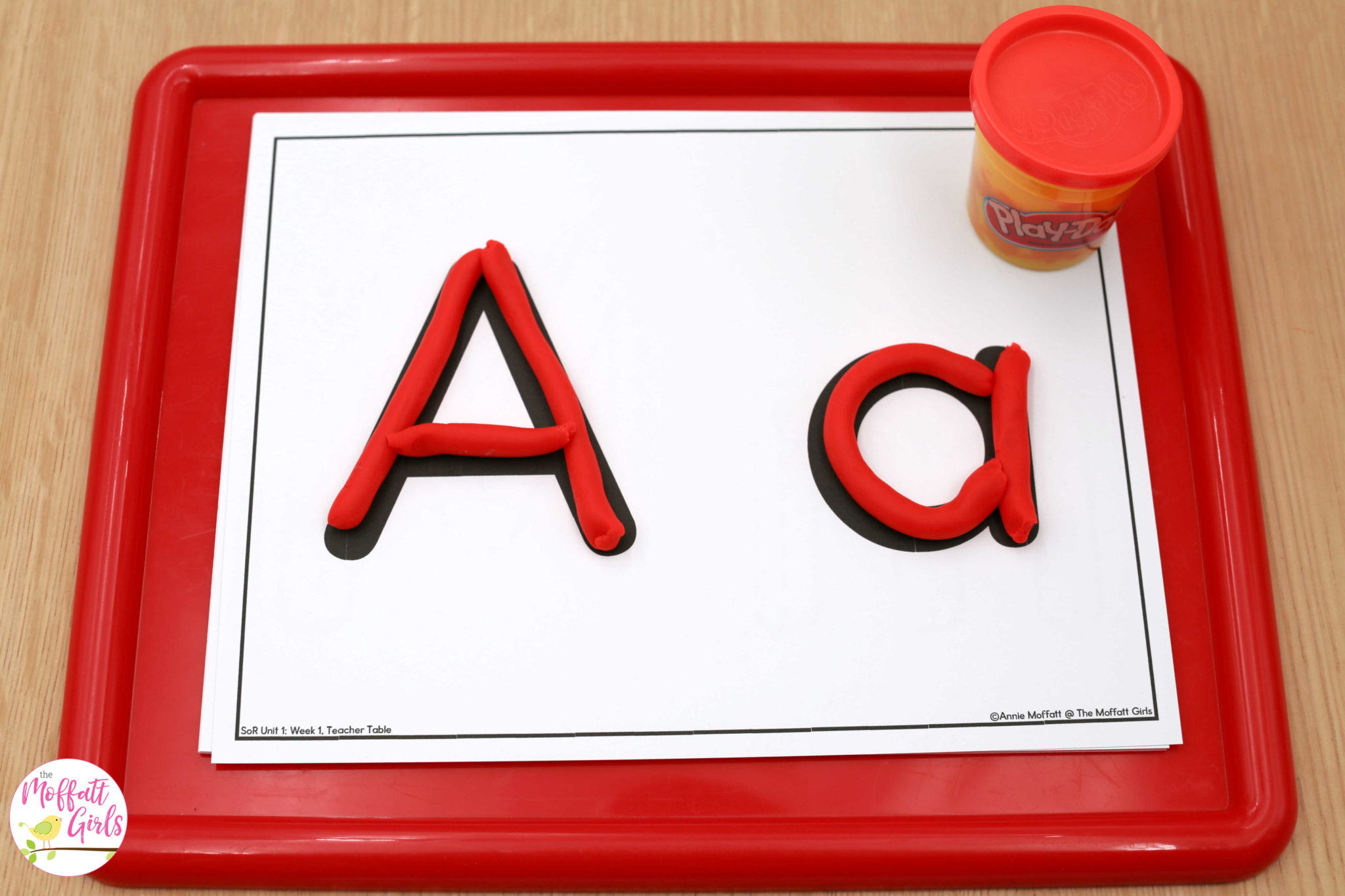
Upper & Lowercase Letter Match/ Letter Sounds Match
For these activities, students create a color code and match the upper and lowercase letters or letter sounds to match the code.
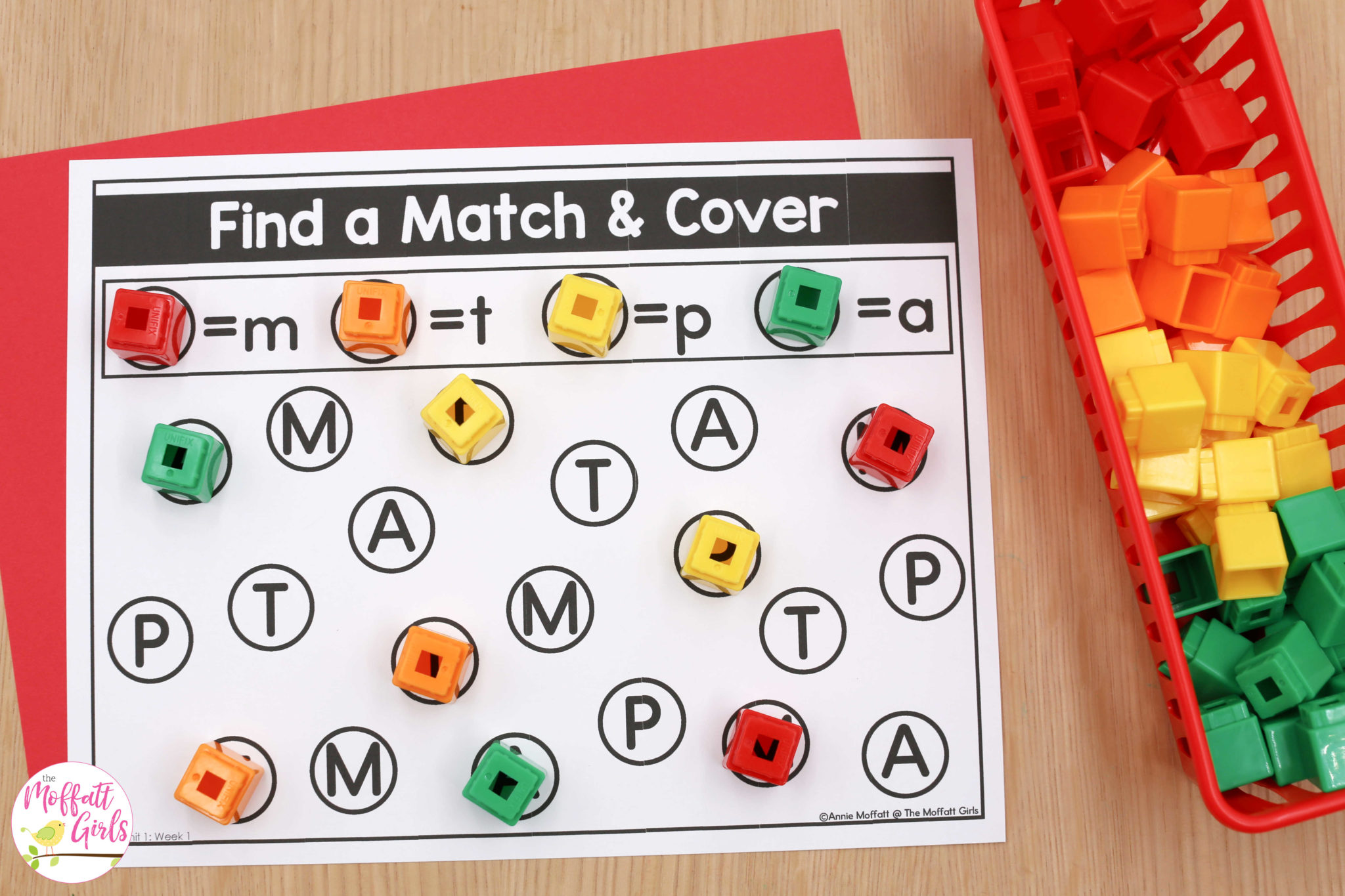
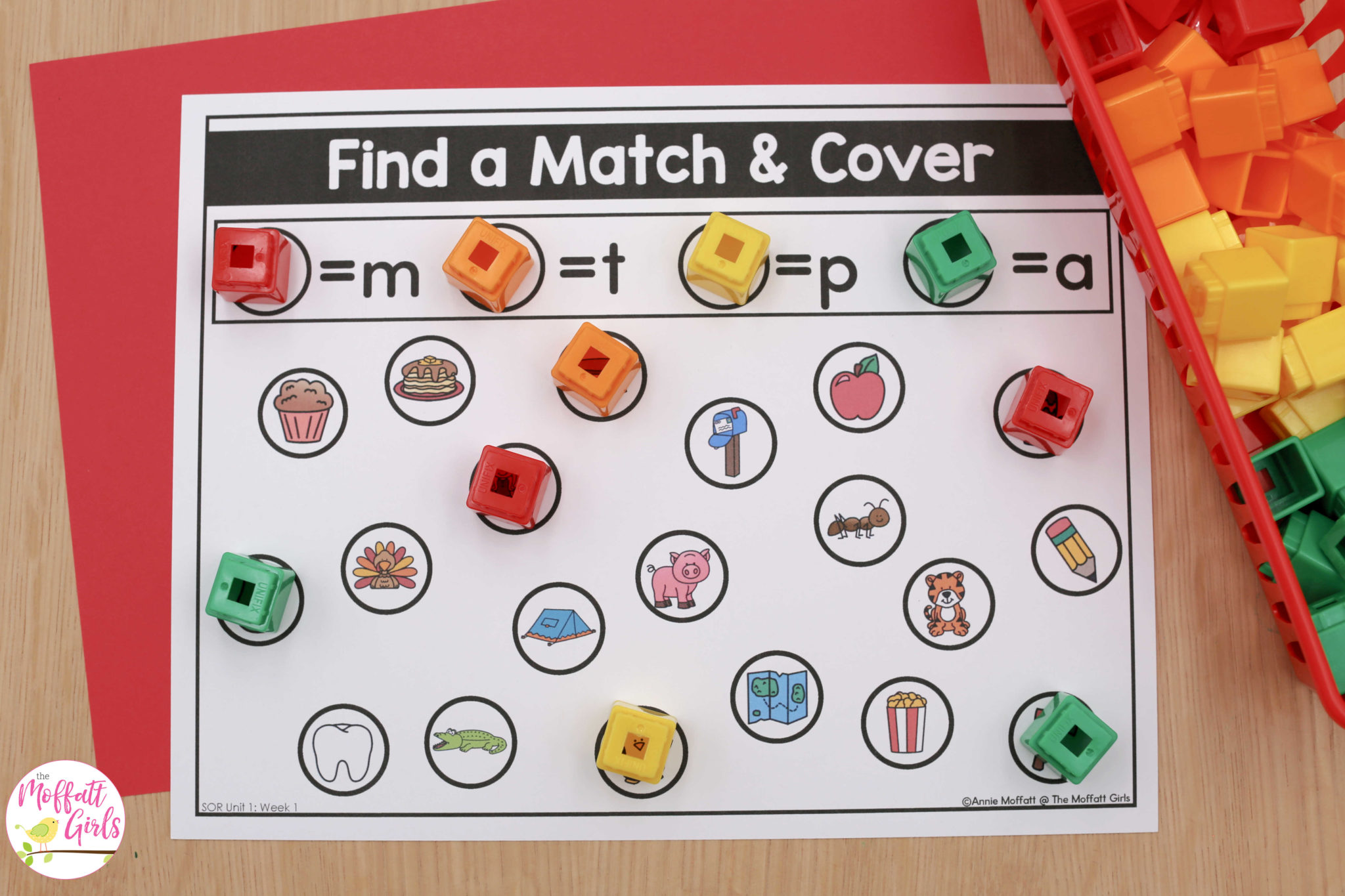
Spin, Say & Trace
The Spin, Say and Trace games allow students to listen for the initial sound and trace the letter on the mat.
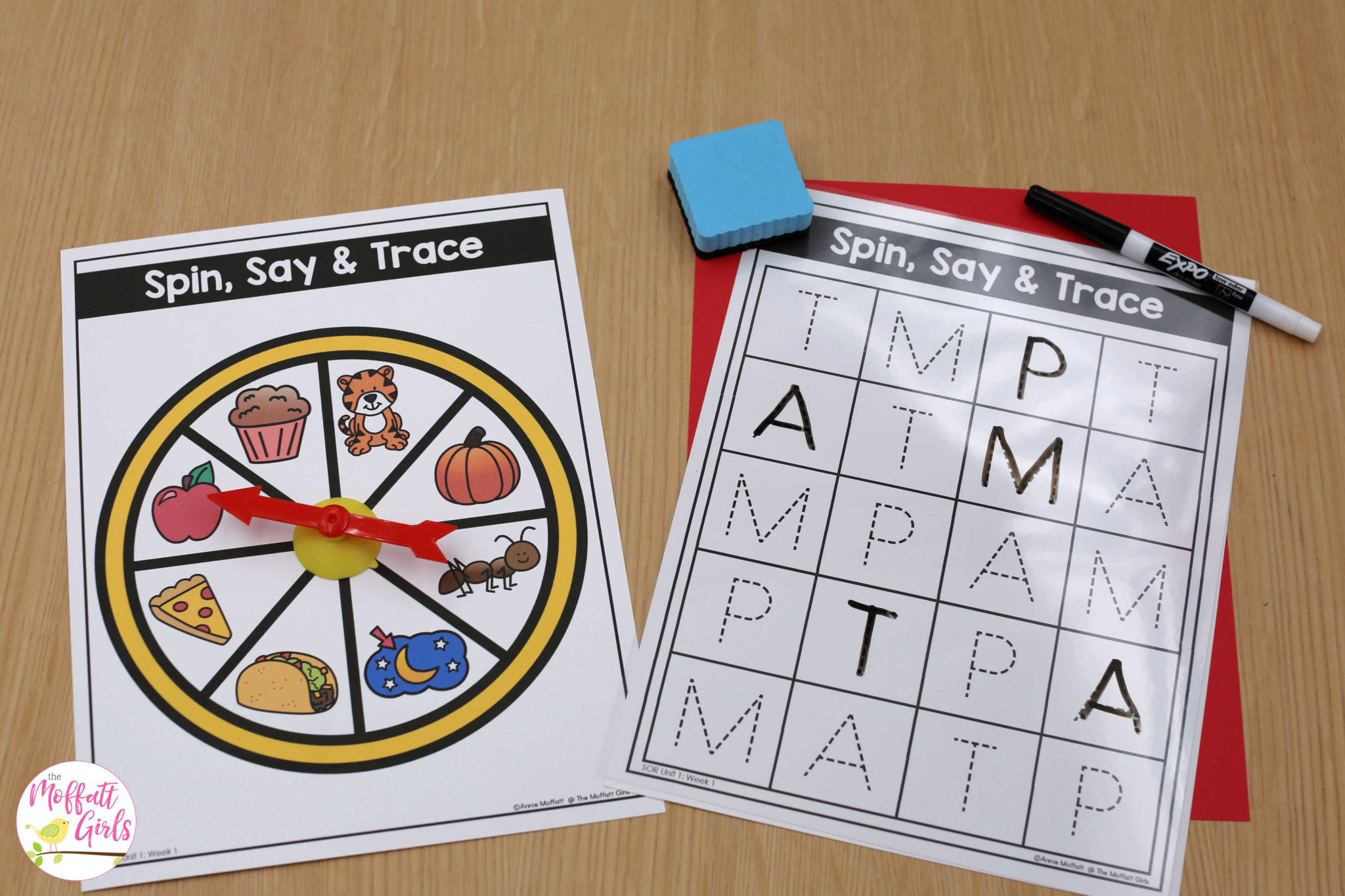
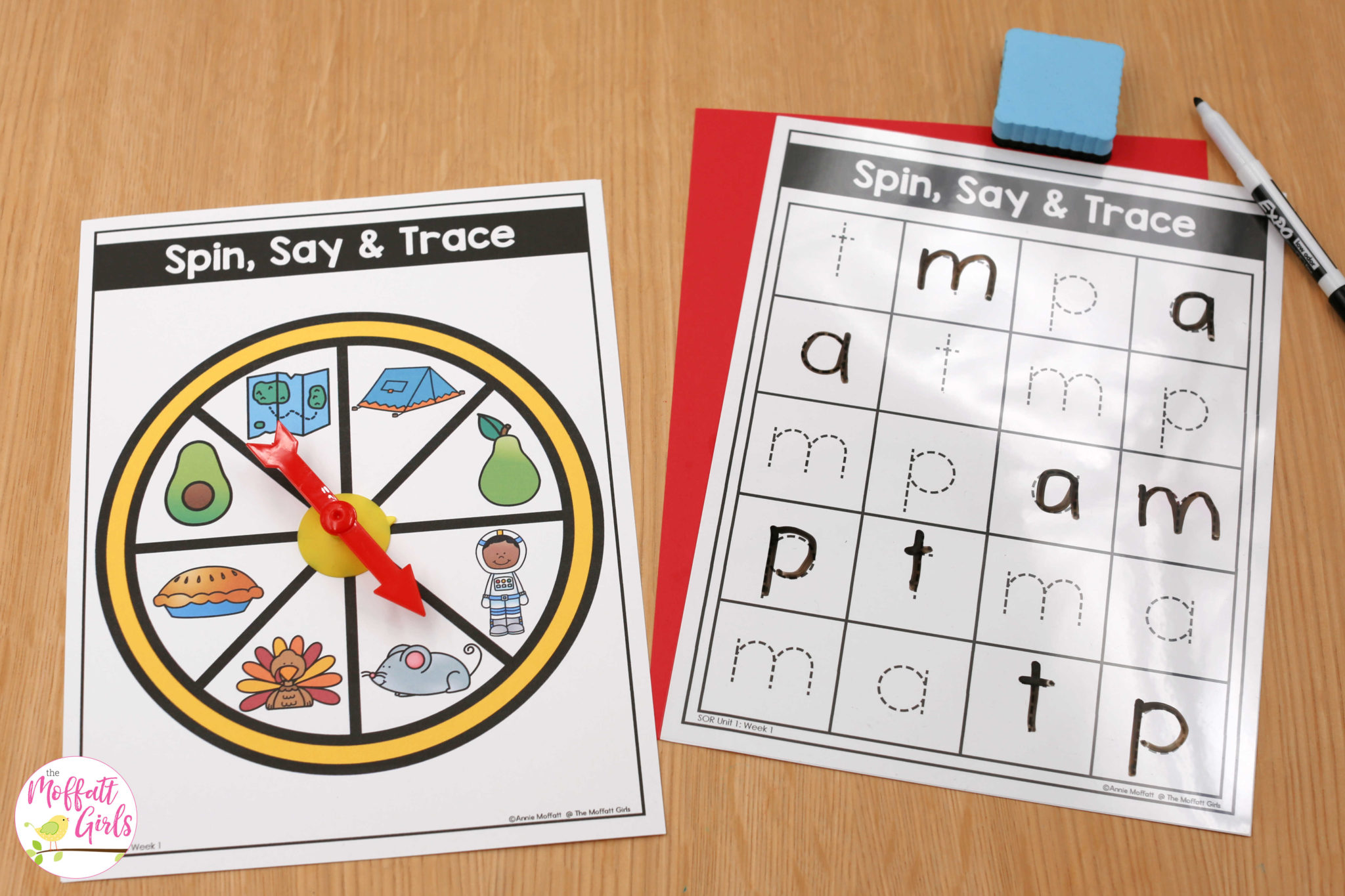
Letter Sounds 3-in-One Game
You can play this game 3 different ways for differentiation:
- Sort the pictures to the correct letter.
- Lay the pictures out, call out a letter sound and have students find a picture that starts with the sound.
- Lay the letters out, say a word and have students find the letter for the beginning sound of the word.
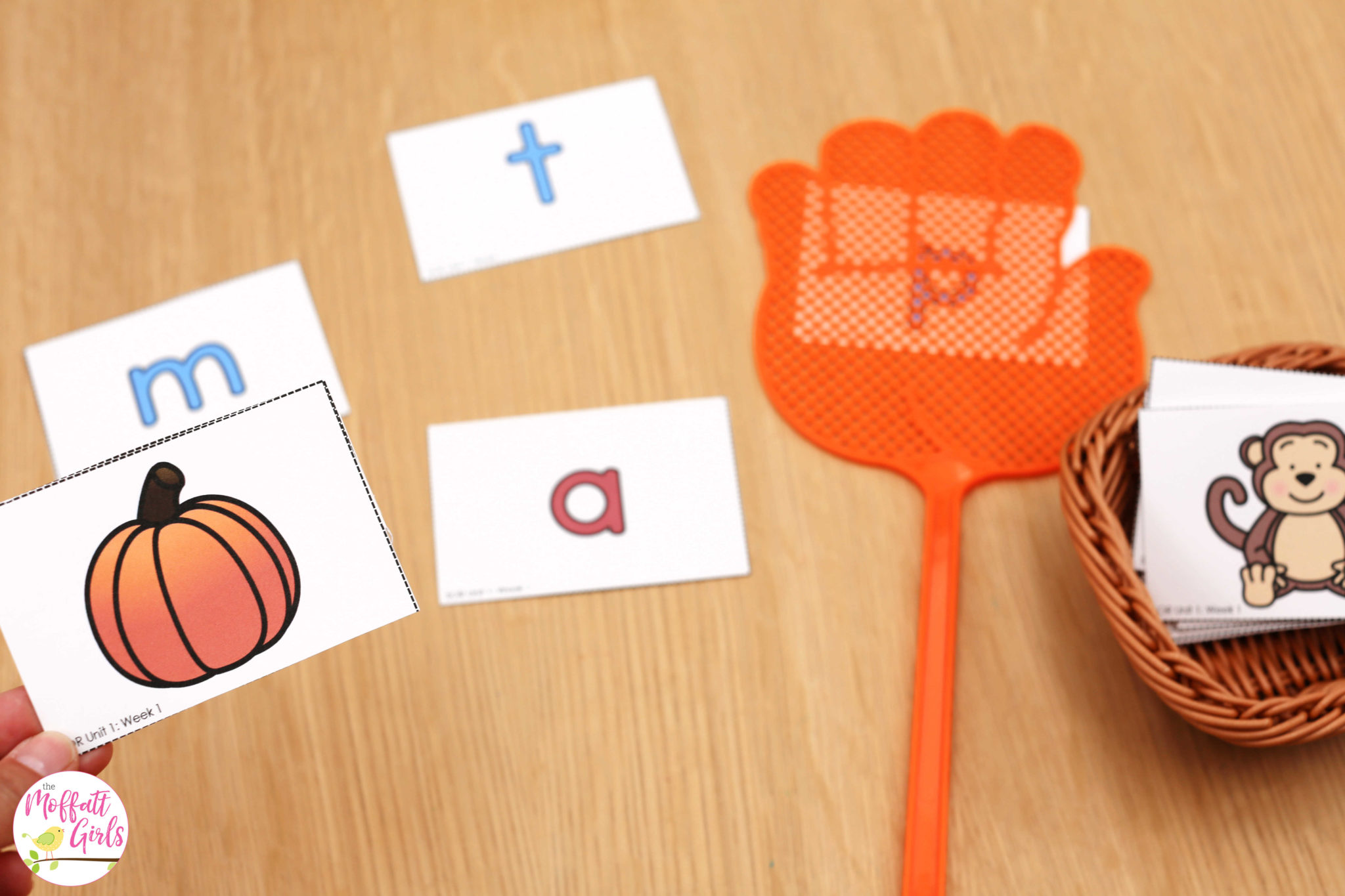
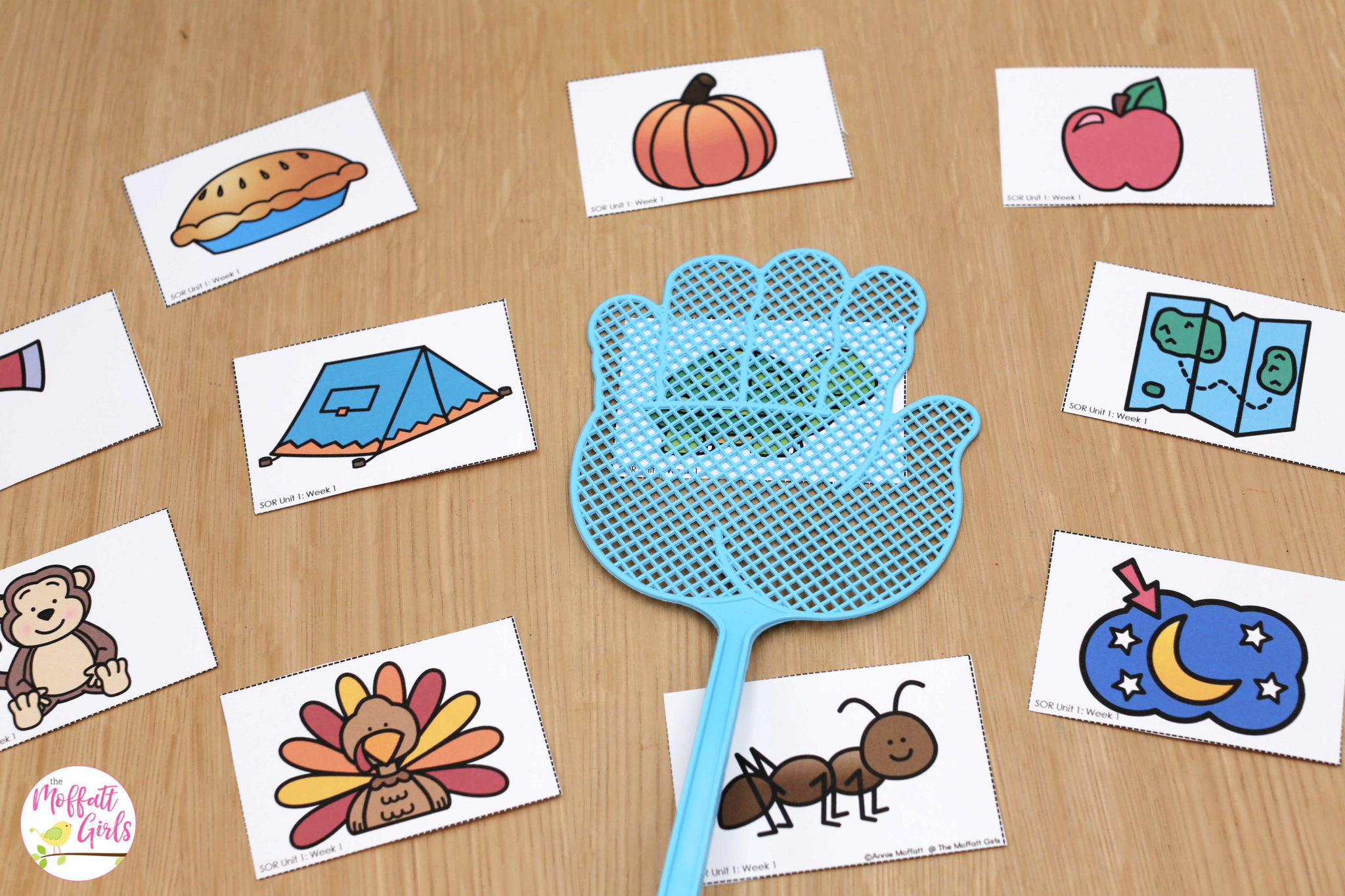
Heart Word Flash Cards & Graphing Practice
Use these as a warm-up at the beginning of small group instruction and as a scaffold for students who struggle with reading, graphing and writing the high frequency words.
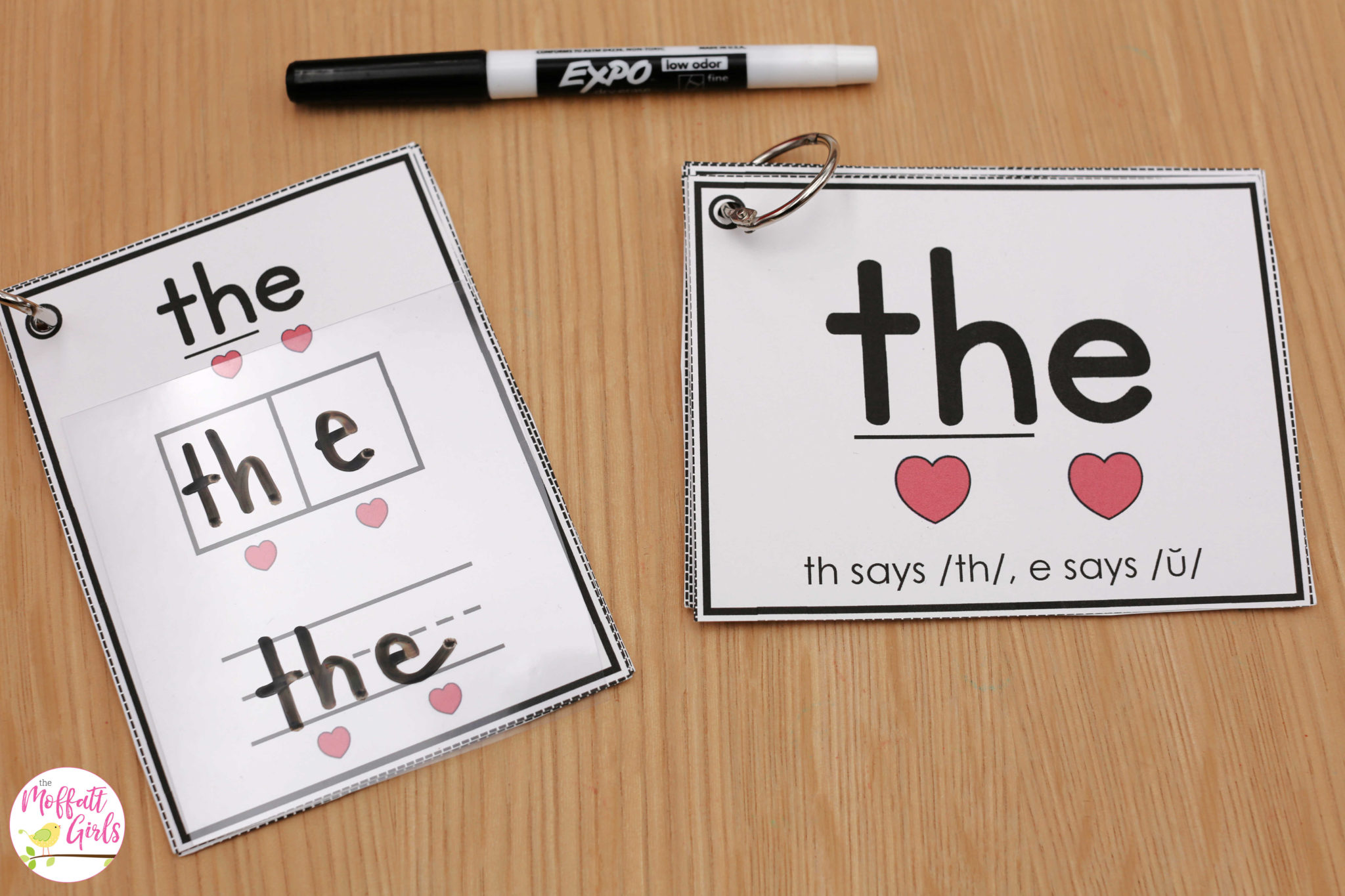
Practice pages are included to offer additional support.
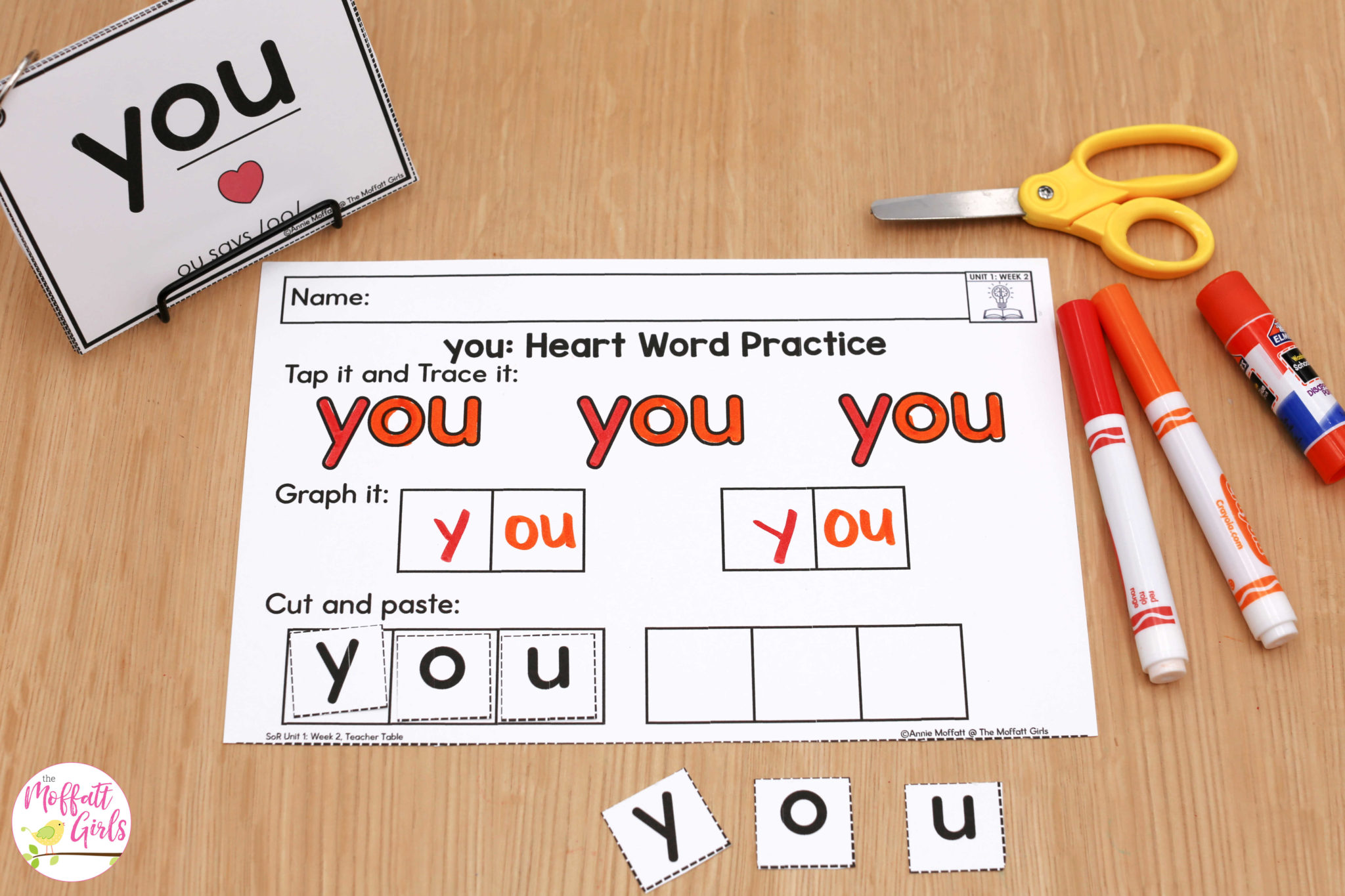
Application Strips
These strips follow the sequence for each week and can be used in 3 different ways:
- Have students find the letters in the phrase or sentence.
- Have students find the high frequency words in the sentence.
- Read the sentence (an extension activity for students who are ready for a challenge).
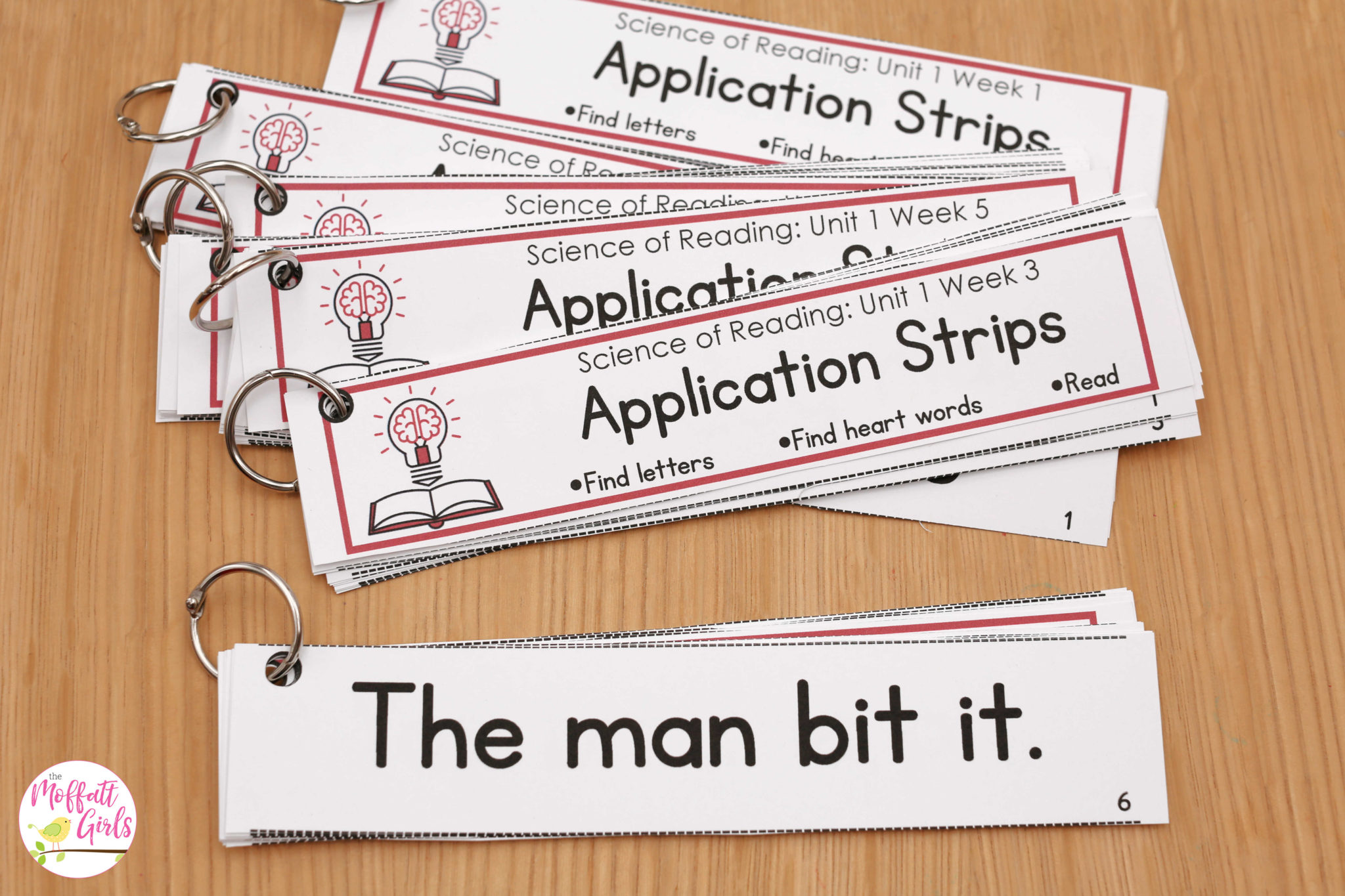
Letter Sound Fluency Strips
Time students to see how long it takes to complete the lowercase, uppercase and mixed letter sound identification. A recording sheet is also included to record errors, self-corrections, number of letters attempted, and number correct out of the number completed.
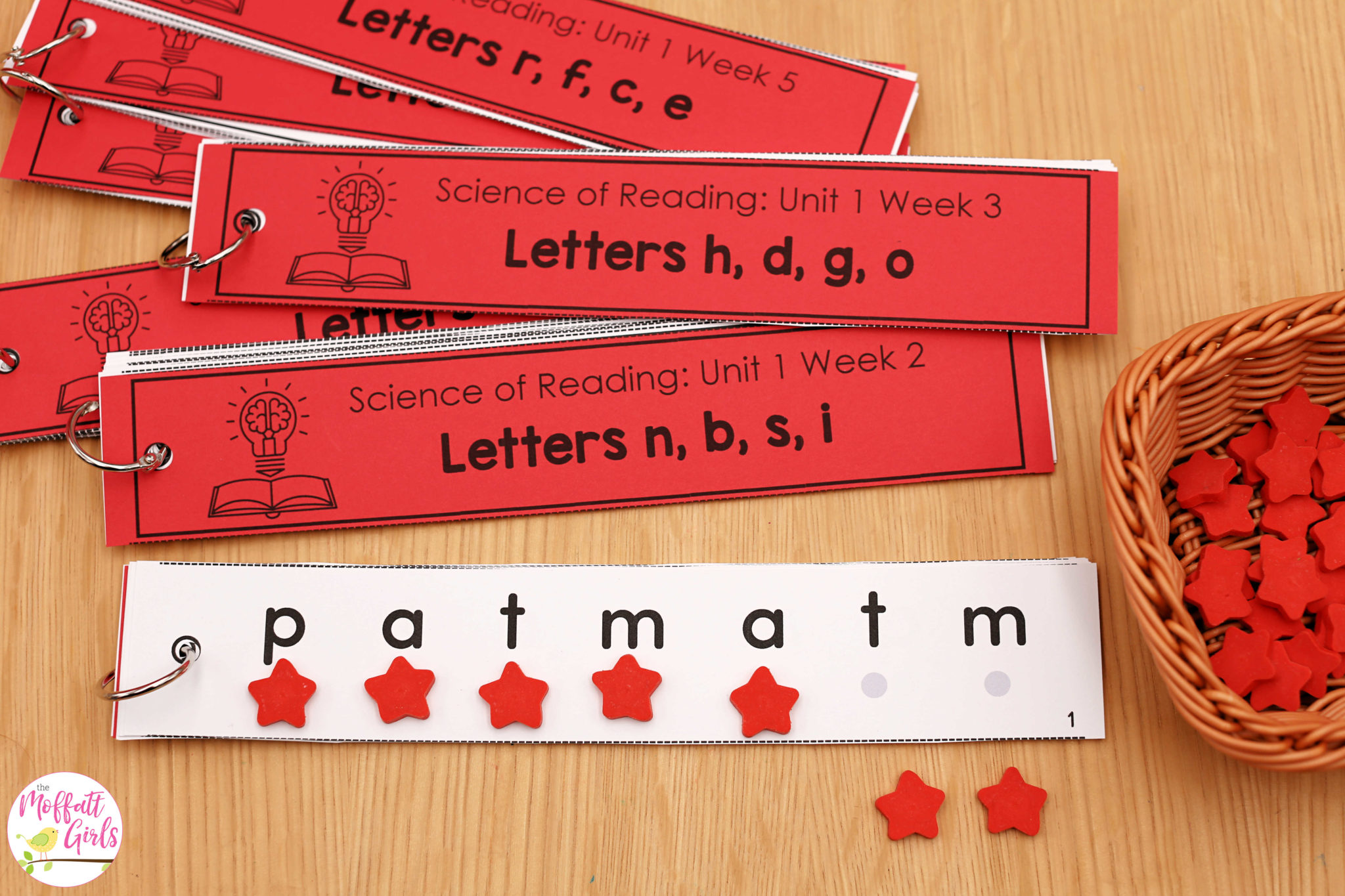
Fluency Racers- Review of Letter Sounds & High Frequency Words
Next up are the Fluency Racers. Use these to build fluency by saying the letter sounds or heart words quickly and with accuracy. More specifically, encourage students to read the letters and words only as fast as they can read them accurately.
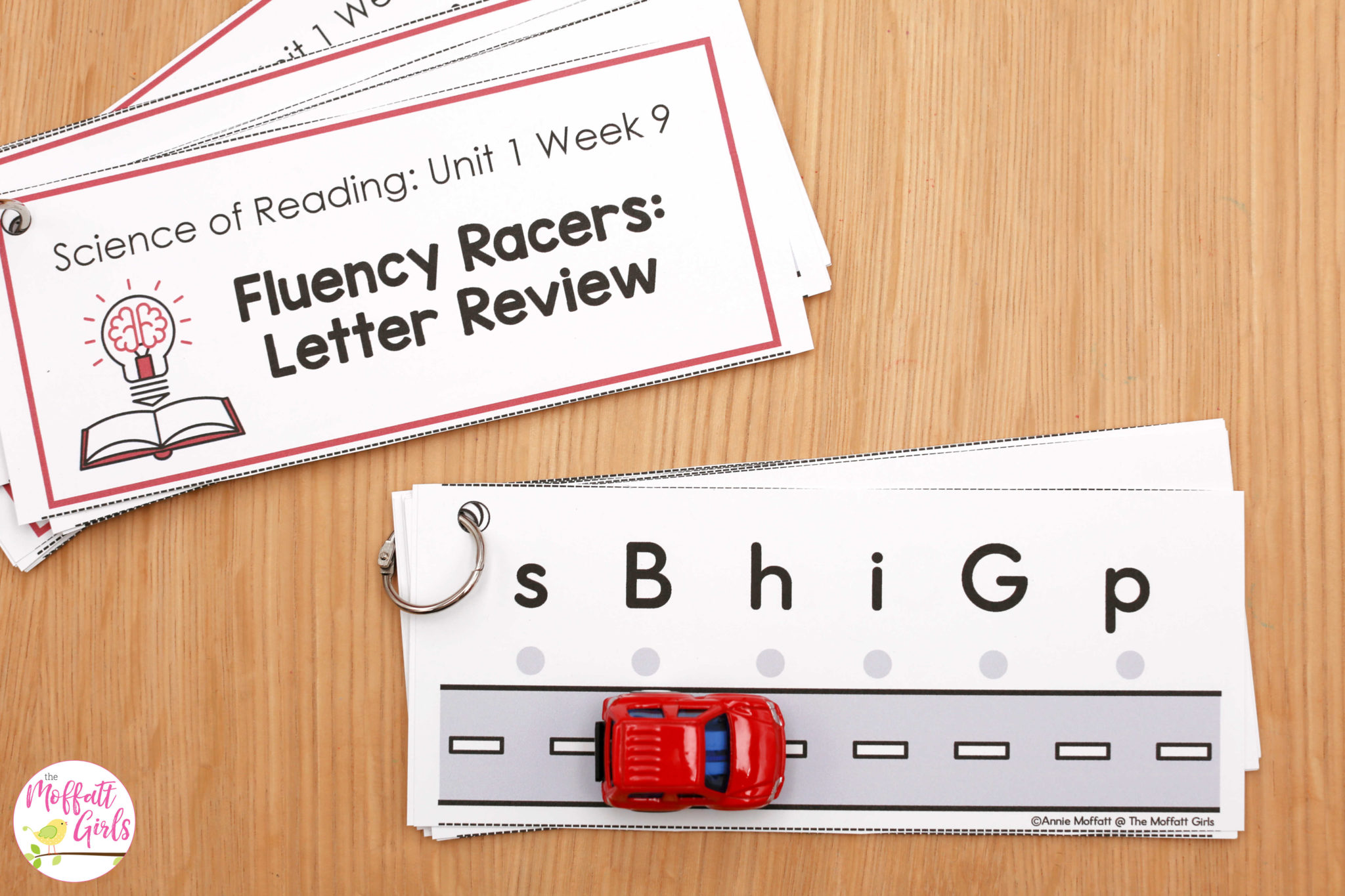
You can allow students to use a toy car as in the picture above, or let them pick a popsicle car.
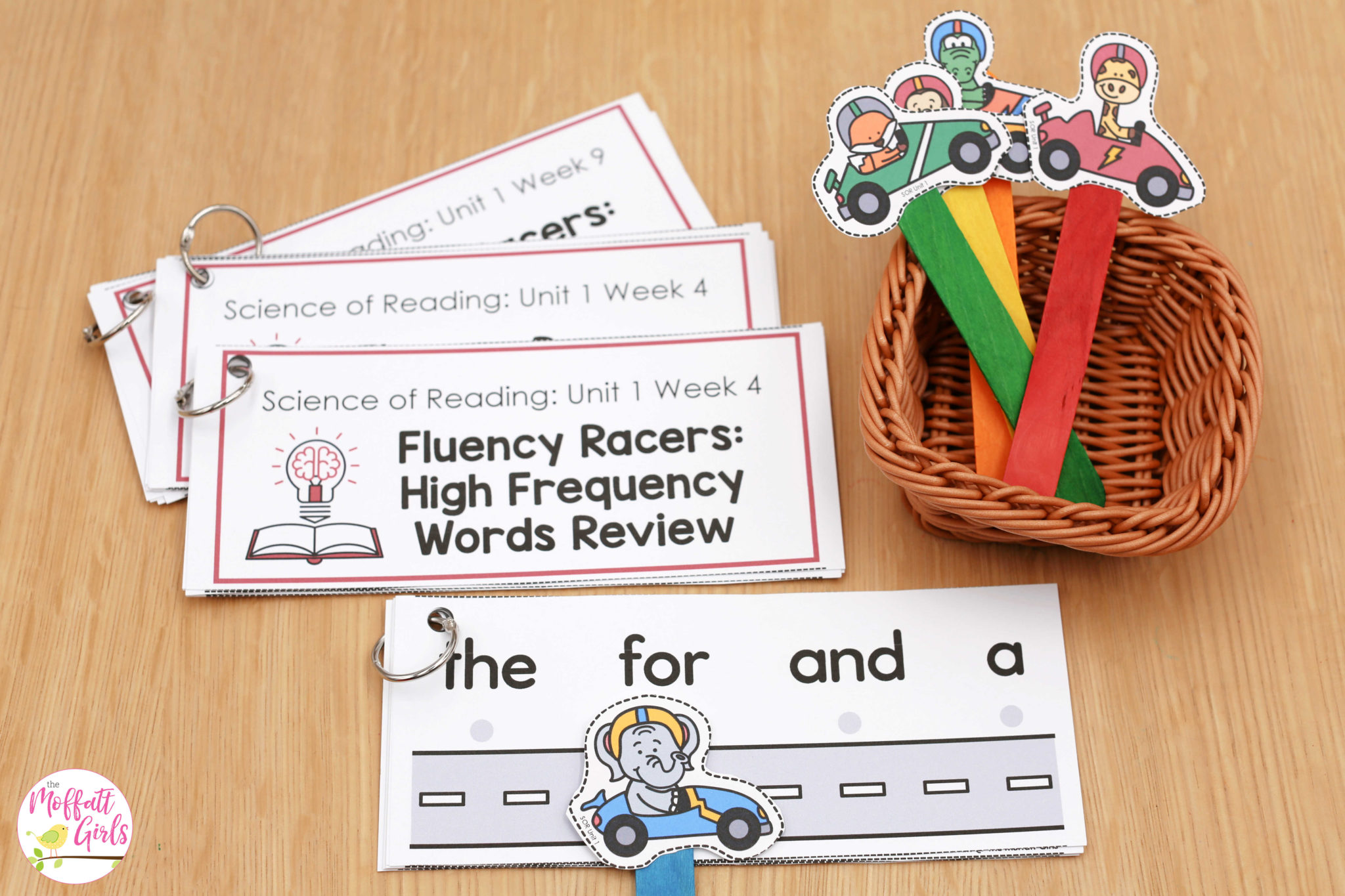
CVC Segment & Blend Cards
Use for students who are have strong letter recognition and are ready to begin reading CVC words. The popsicle flying tracers add an especially fun element to this activity.
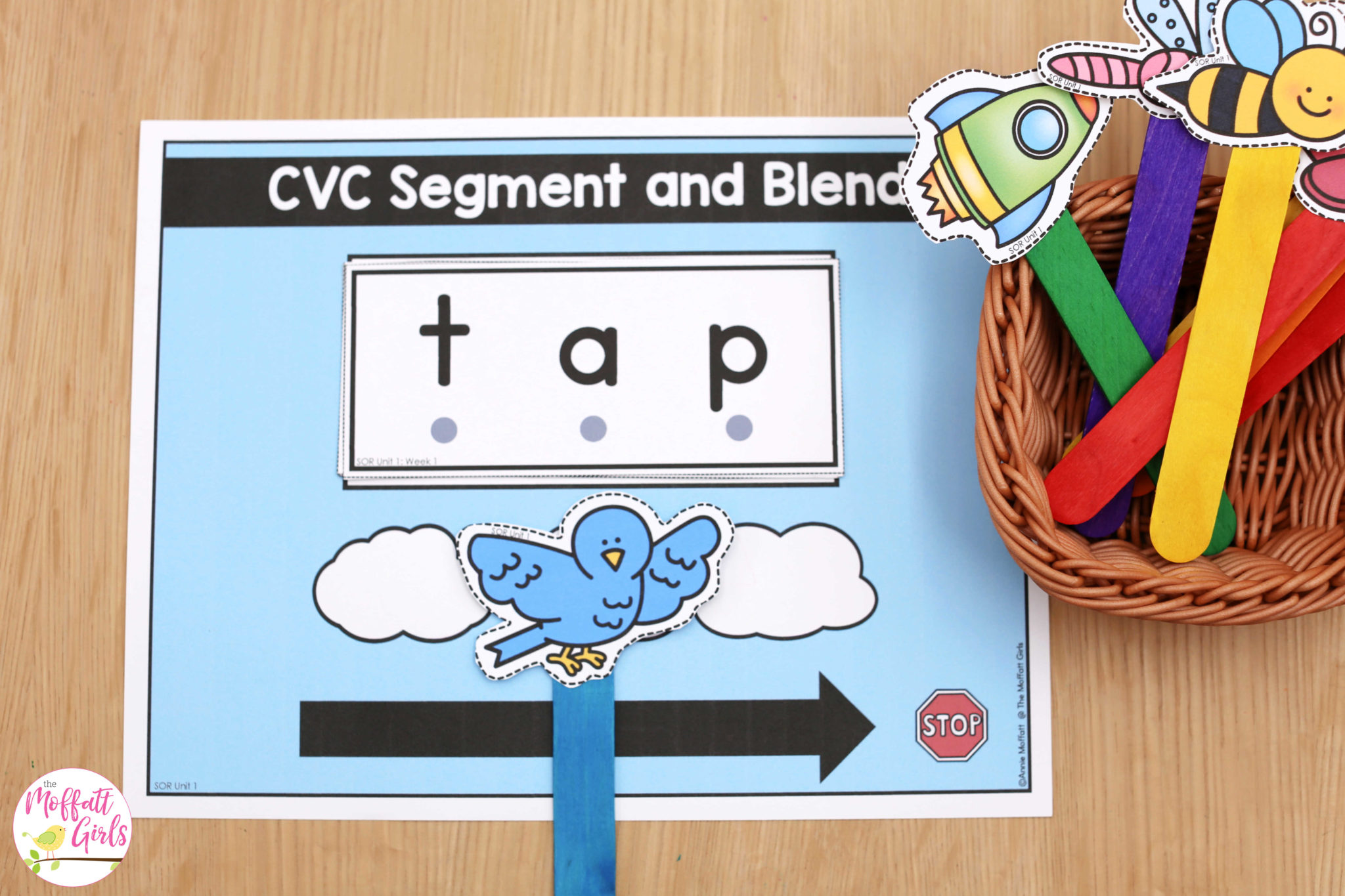
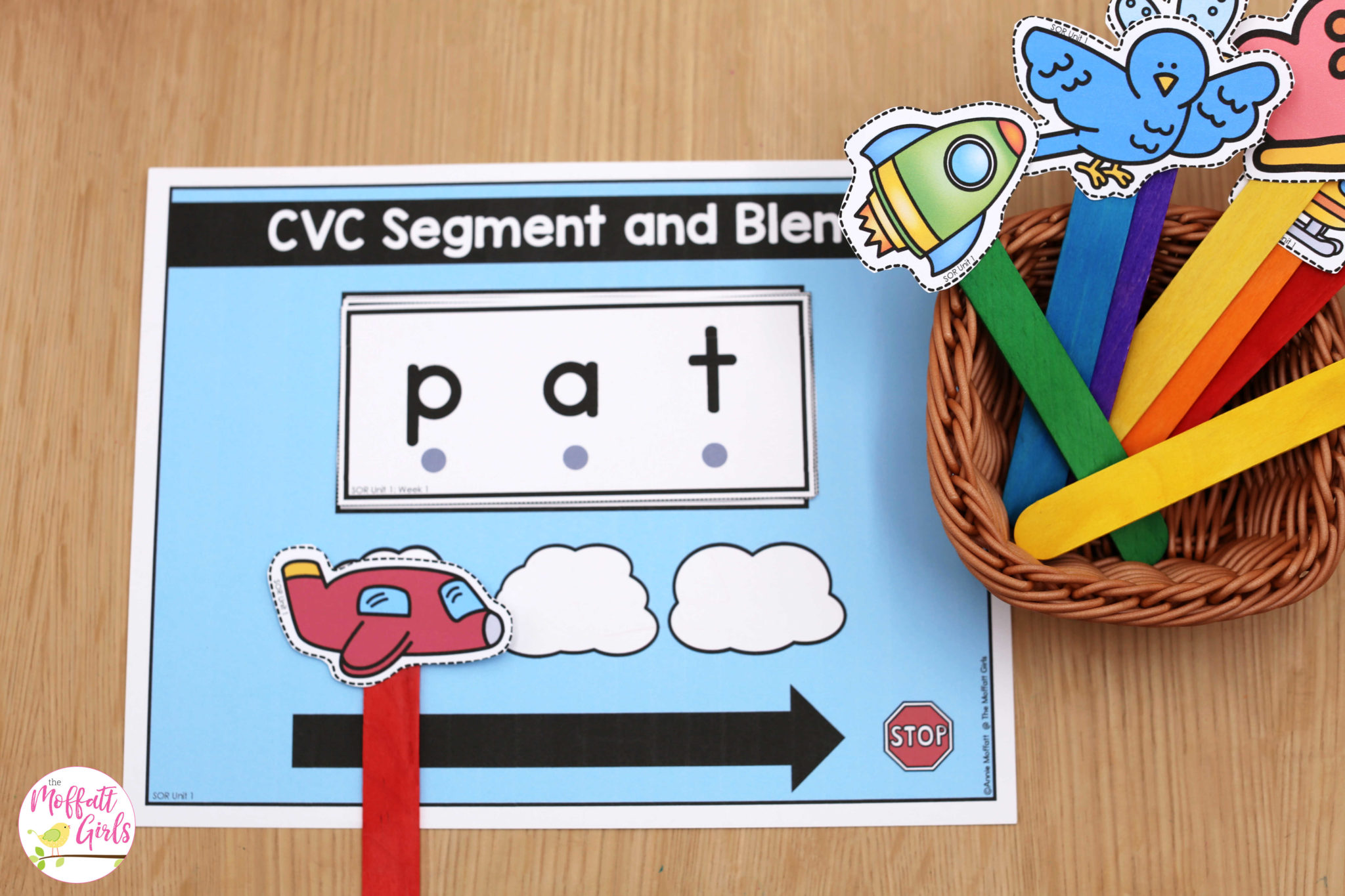
Letter & Heart Word Books
Each letter and heart word has a 4-page book (one page printed front and back) to re-enforce the concepts learned for each.
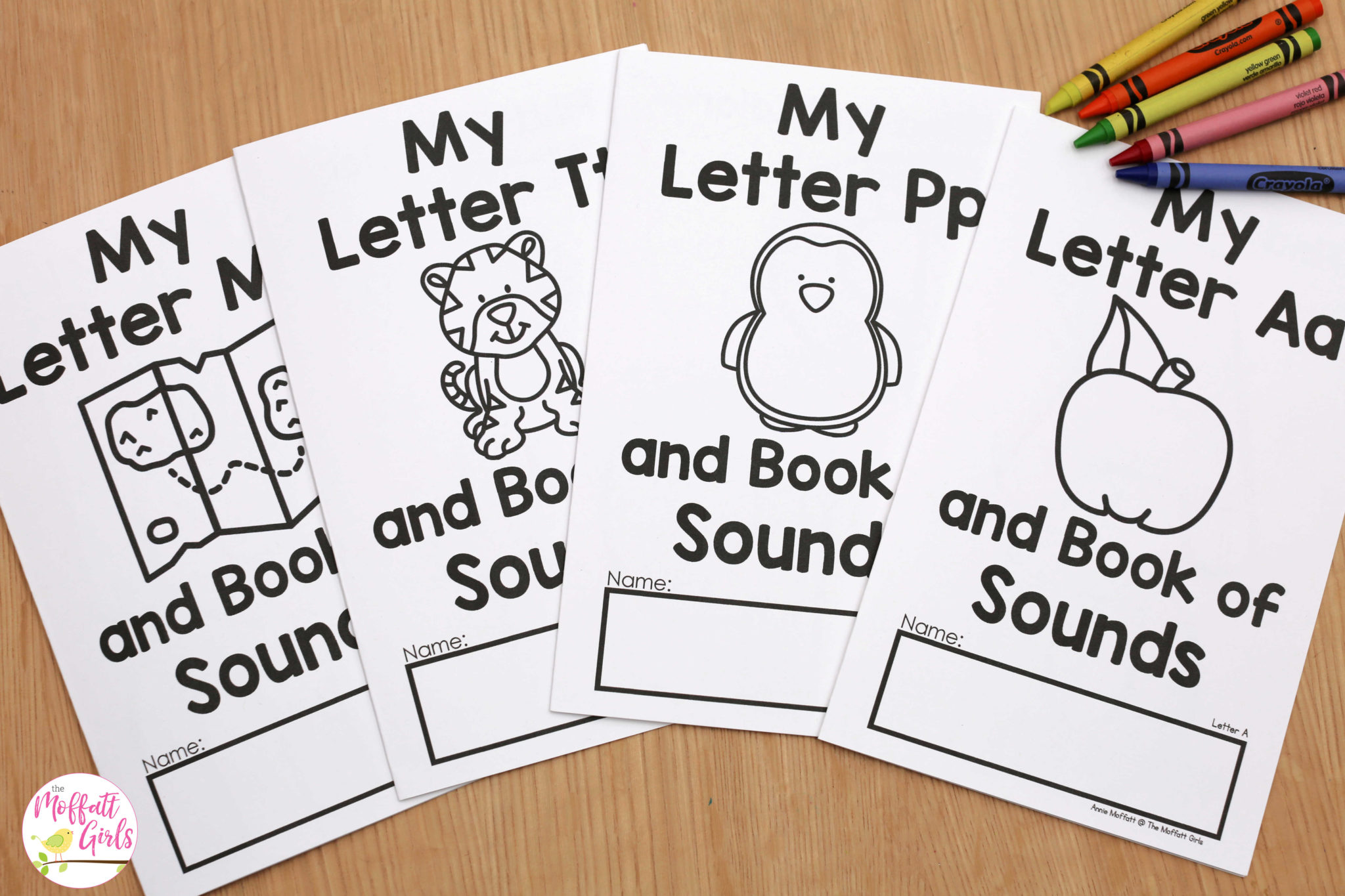
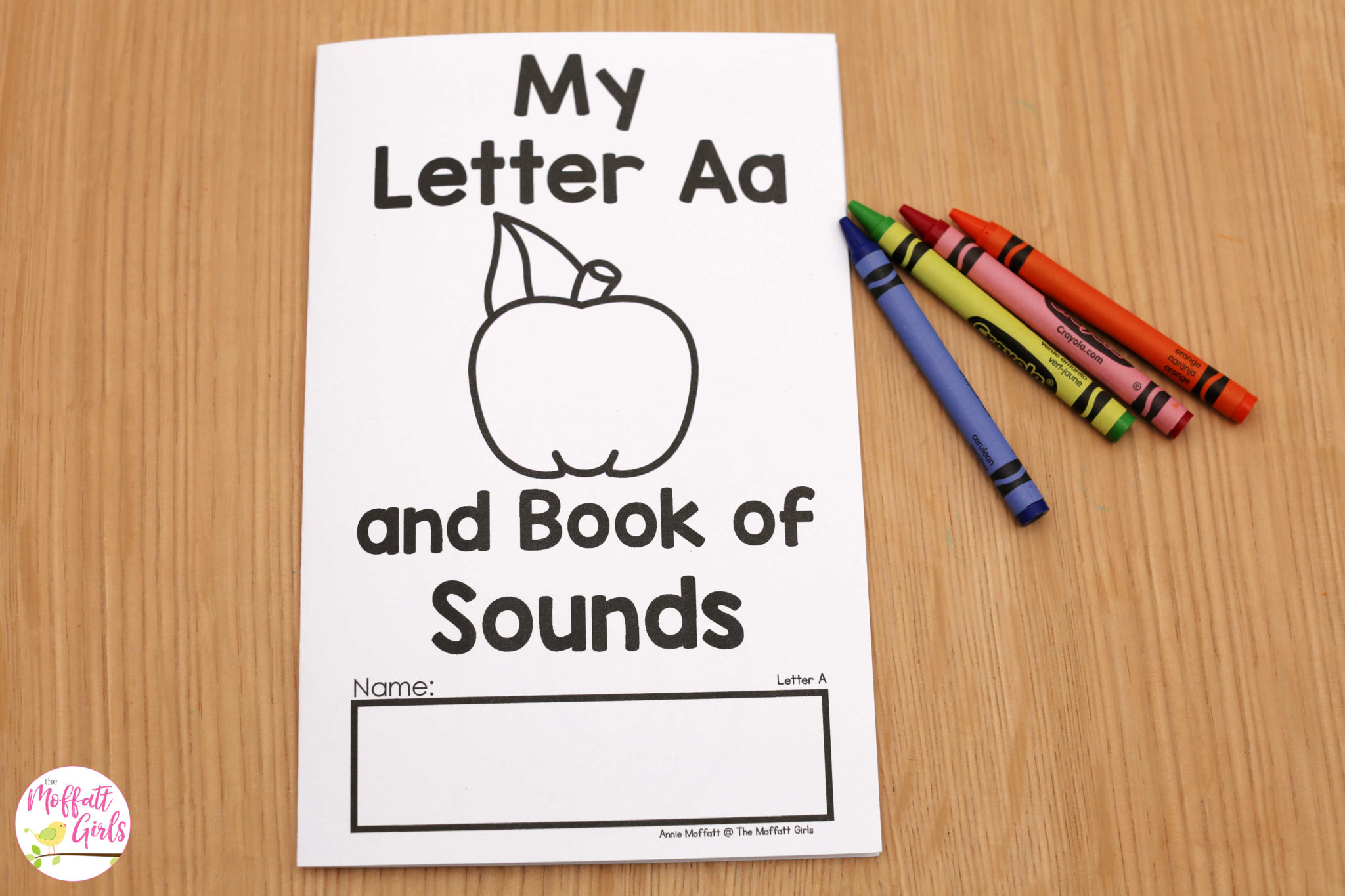
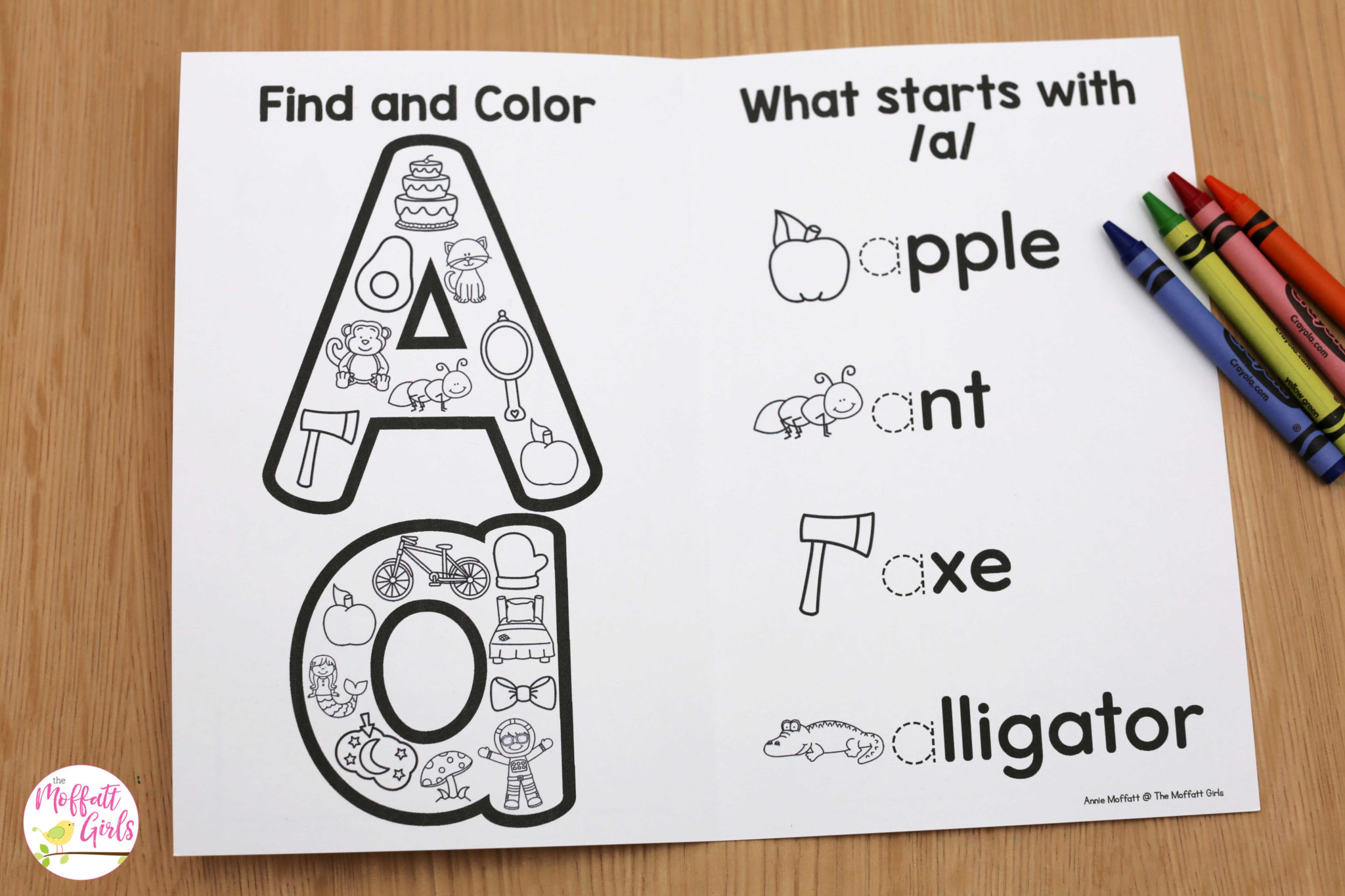
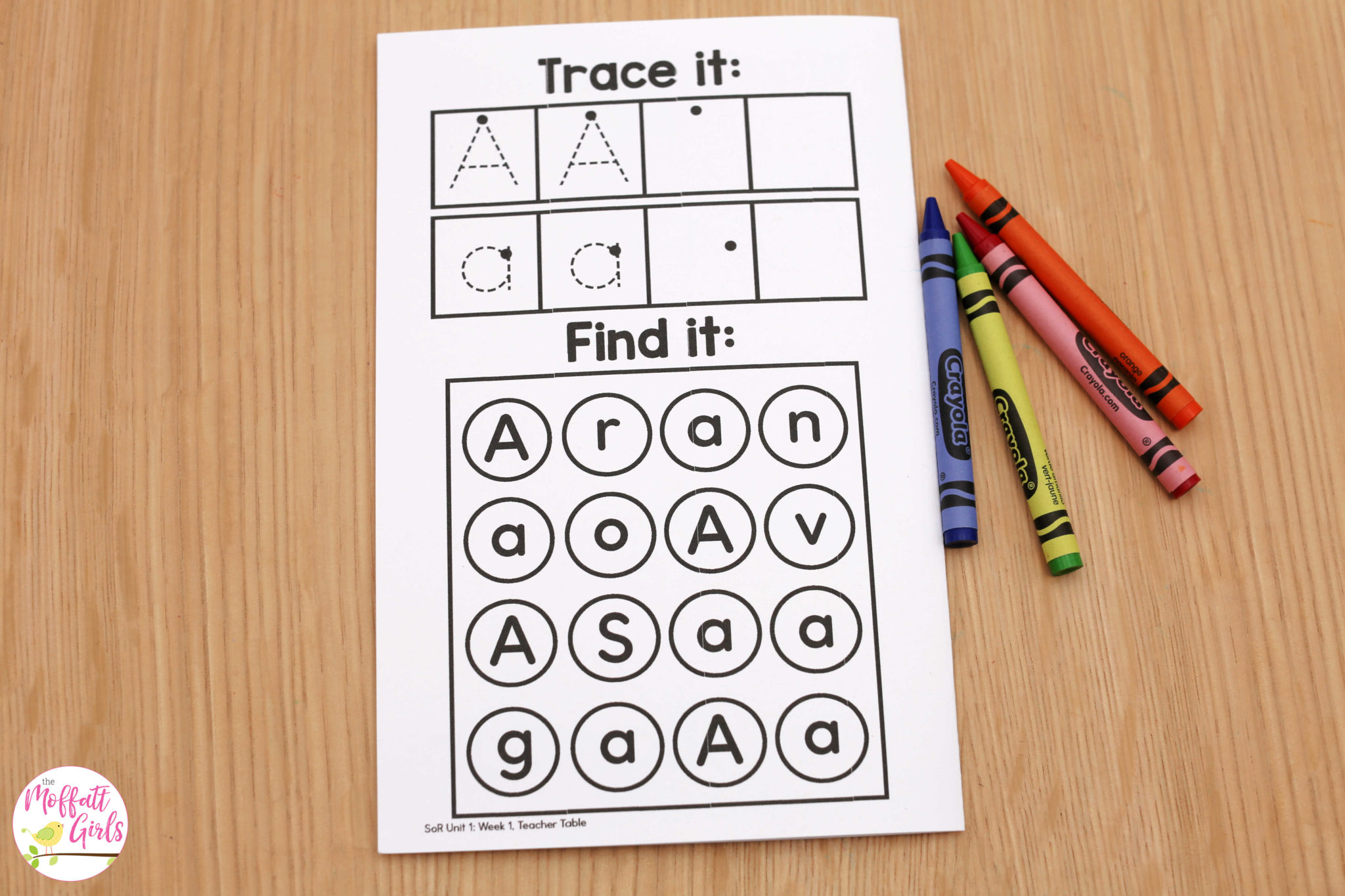
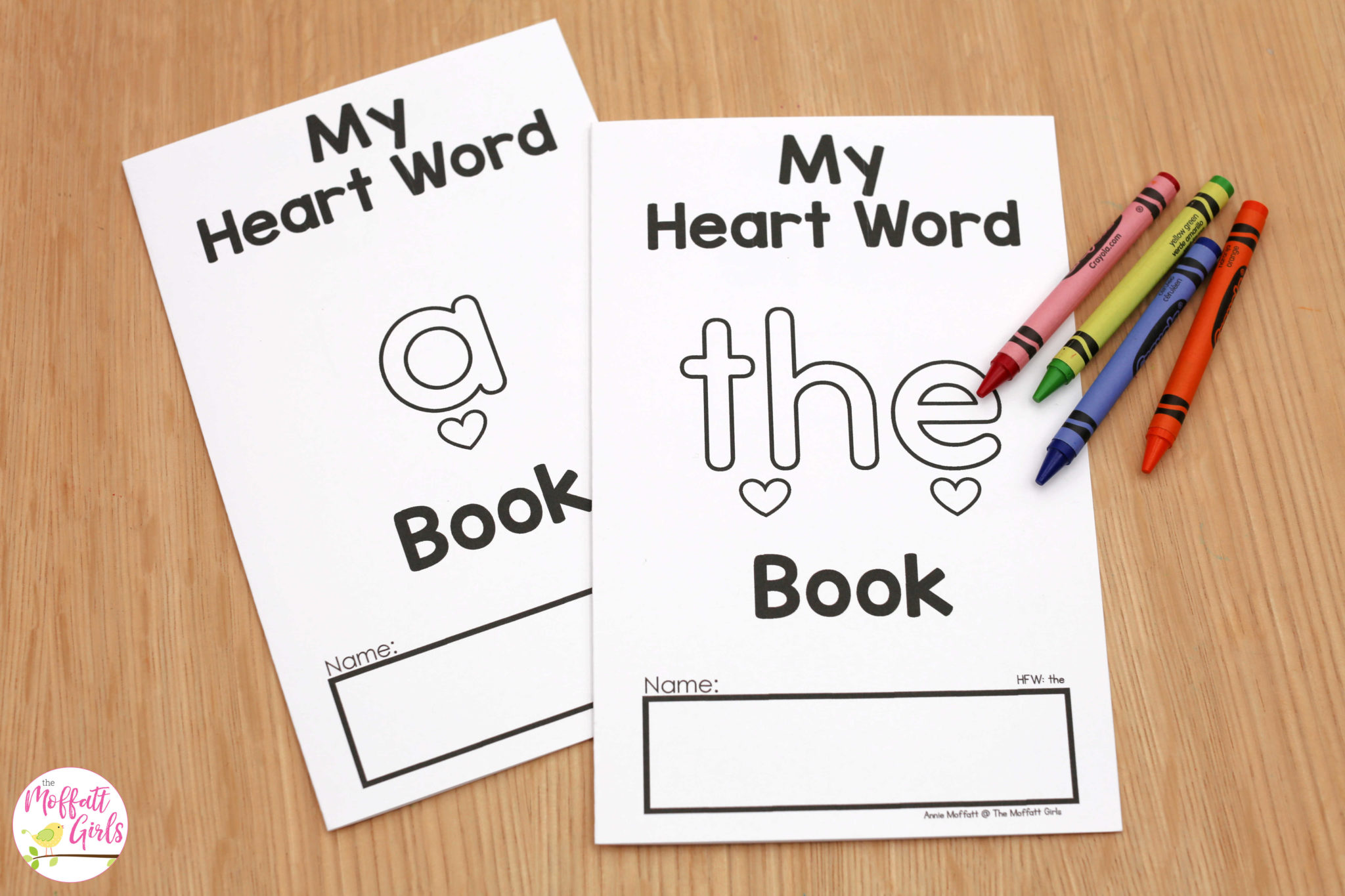
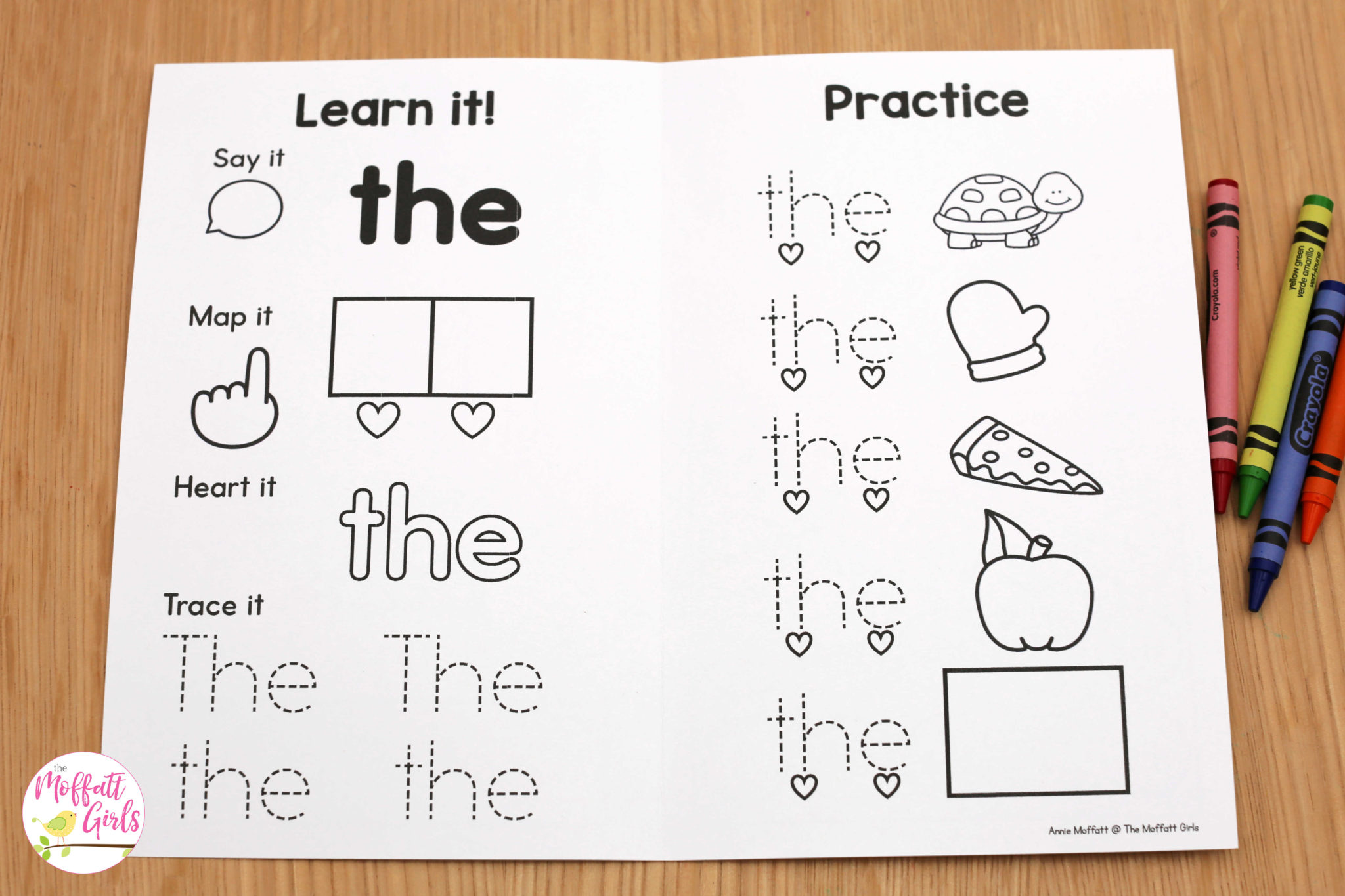
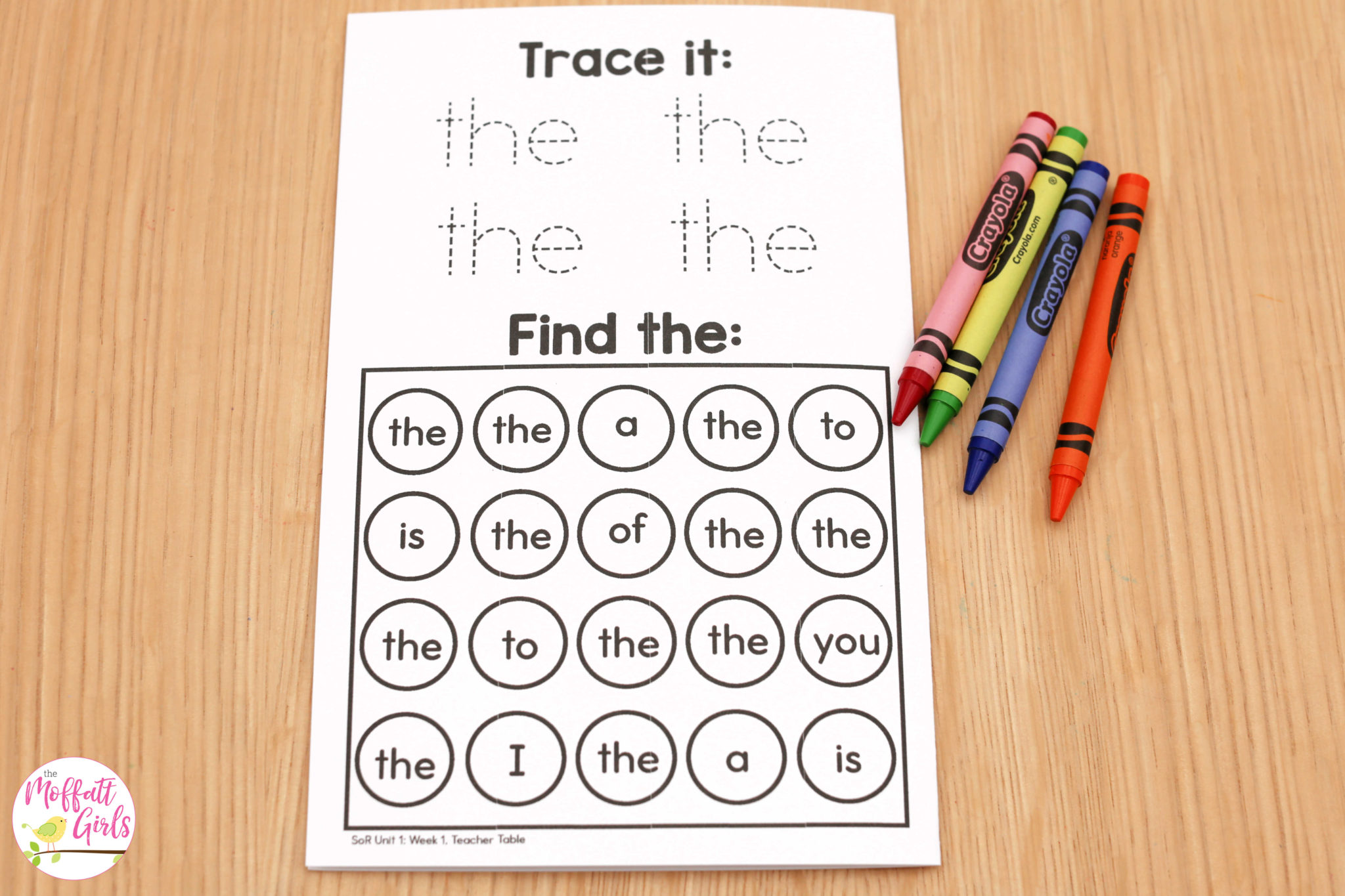
My Handwriting Practice Book
Finally, this handwriting book offers students an opportunity to practice proper letter formation and beginning sound identification. Of course, you can choose to use these books at the Teacher Table to monitor mastery or as extra practice for students who have finished the center work. Also, the order of the pages correspond with the order of the letters as they are introduced in Unit 1.
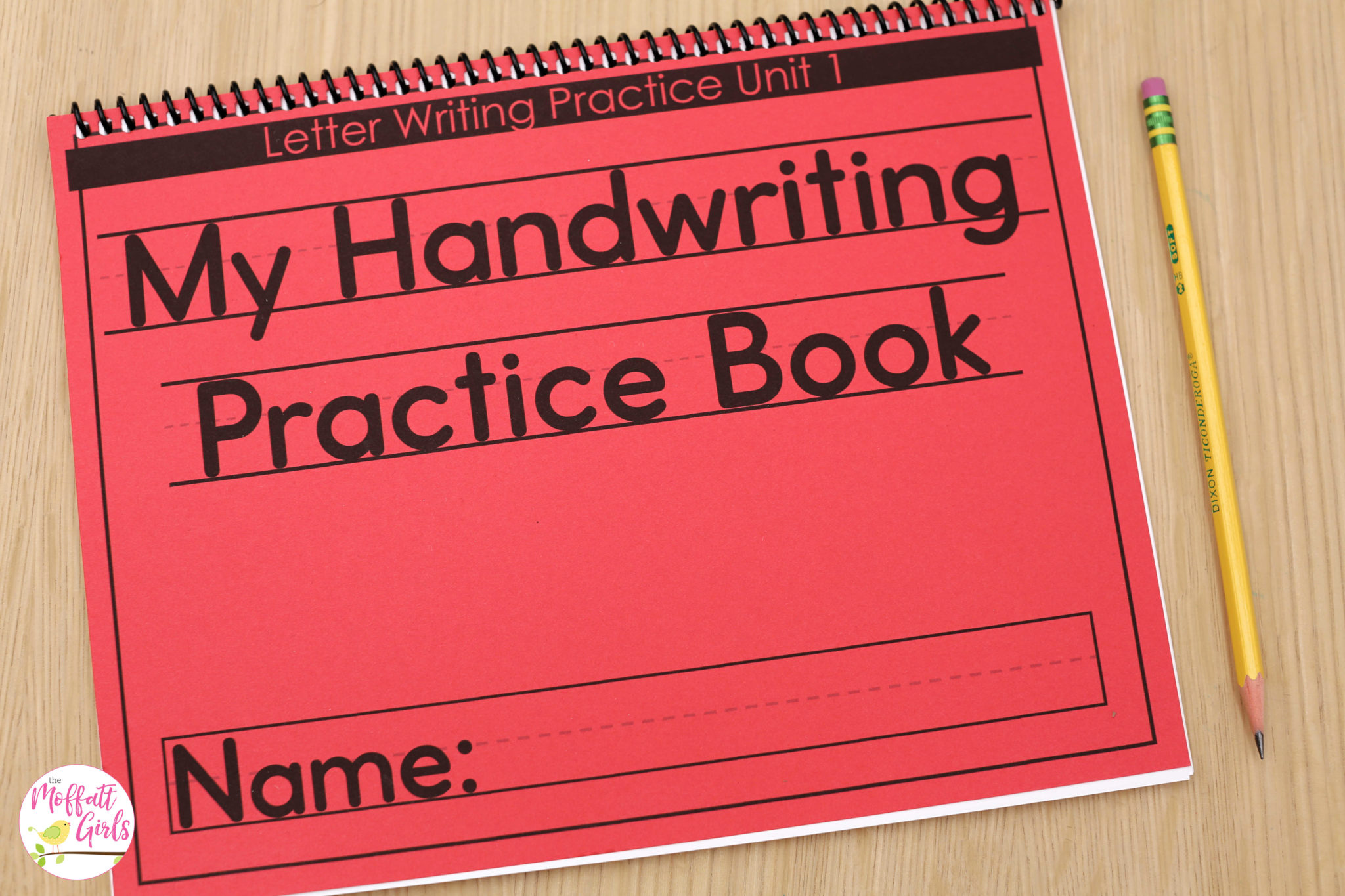
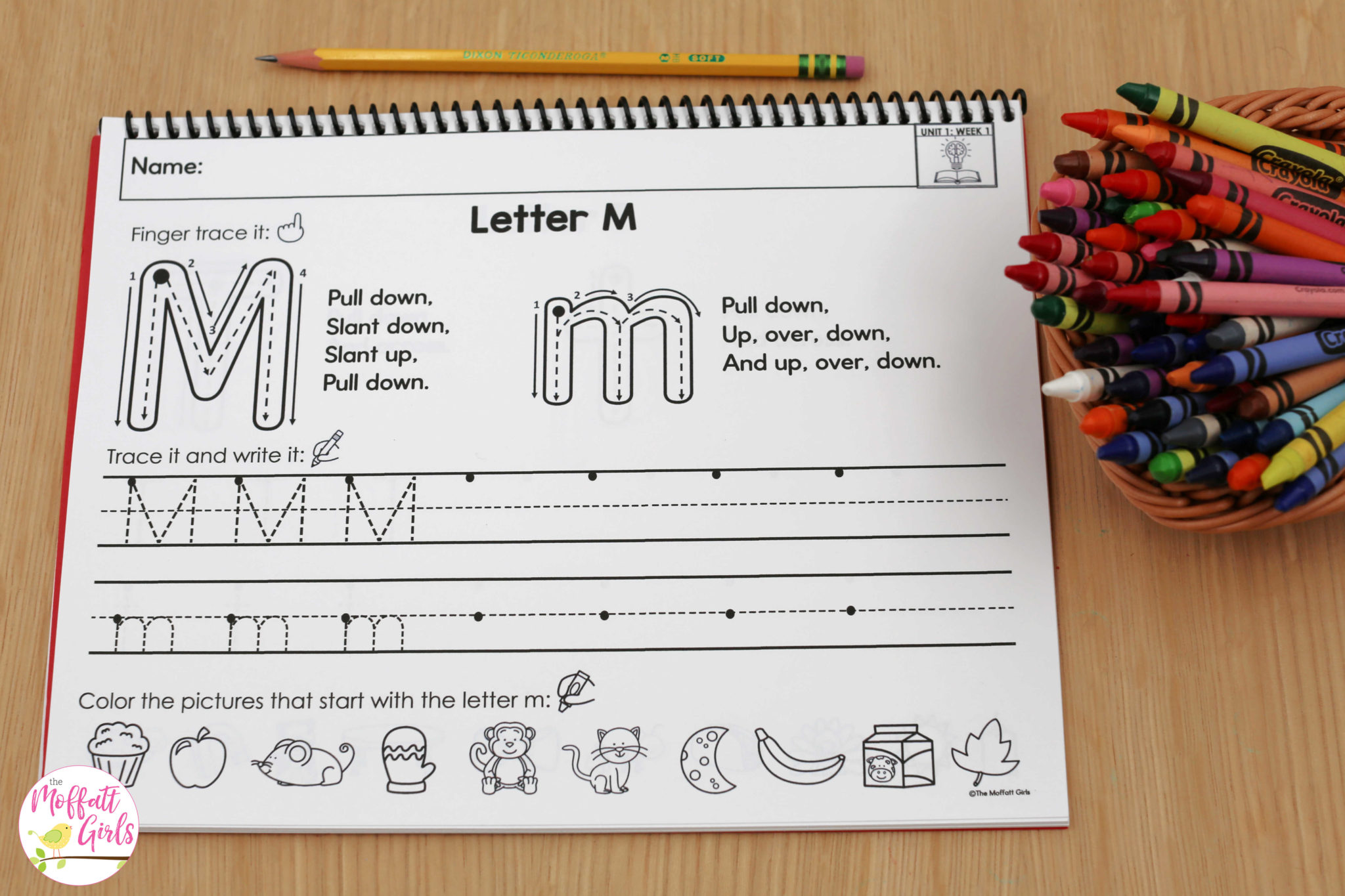
For more letter and letter sound practice, check out the Alphabet Curriculum: Click here.
For additional Phonological & Phonemic Awareness support, Click Here.
The post Pathway to Fluency- Science of Reading Aligned appeared first on Moffatt Girls.

